Marking the centenary anniversary of the end of the First World War, our online Ribbon of Remembrance has grown with every submission received. In the months leading up to Remembrance Day 2018, people with a connection to Richmond and Catterick Garrison researched the lives and shared the stories of people they wanted to be remembered, on this the 100th anniversary of the end of the First World War. Funding from the Armed Forces Community Covenant helped make this project a reality.

George and Gertrude Laws, and their children
February 13, 2018
Submitted by Mike Crisp. Private 47165 George Laws was by trade a painter and decorator from the small market town of Beccles, Suffolk. He joined the 22nd Battalion, Northumberland Fusiliers (Tyneside Scottish) and served in France. On the opening day of Operation Michael, 21st March 1918 his battalion was in the front-line trenches around St Leger / Bullecourt where he was reported missing. His body was never recovered, and he is commemorated on the Arras memorial. According to the battalion diary they suffered 1,130 casualties on that day. George’s wife Gertrude, was heartbroken and never gave up hope of her husband being found, writing to the War Office on several occasions to try and gain more information. It was not until many months later friends of George visited her to relate that George was a member of a bombing party which went to a flank and were never seen again. Not only was Gertrude in mourning but also on the poverty line, forced to bring up 2 small children on her own. To help make ends meet she took in washing, sat with the dying, and laid out corpses for the local undertakers. Her son became the surrogate ‘man of the house’ and it was not until 1968 that he felt that he could leave his mother to get married himself. Gertrude died at the age of 97 in 1977.
Read moreFrederick Crisp
February 13, 2018
Submitted by Mike Crisp. Private 85882 Frederick Crisp, from Beccles, served in 2 regiments initially the 5th Royal Irish Lancers and subsequently the 8th Battalion Kings Liverpool Regiment. His photograph was allegedly taken at the Currugh. The war diary for Fred is quite detailed and it appears that he died in an unsuccessful evening attack on the Canal du Nord on 11th September 1918. The diary includes handwritten and typed operational orders and a post attack report. During this attack the battalion suffered 16 killed, 70 wounded and 13 missing. Fred is buried in the Commonwealth War Graves at the village of Mouvre.
Read moreAlbert Clifford
February 13, 2018
Submitted by Marcia Howard, a resident of Richmond. Albert William George Clifford was my maternal Grandfather born at Chipping Sodbury, Gloucestershire in 1886. Prior to his medical discharge in 1916, he was serving in Malta with No.1 Coy, of the Royal Garrison Artillery as a Gunner. He was subsequently presented with the Silver War Badge which in September 1916, King George V had authorised to honour all military personnel who had served at home or overseas since 4 August 1914, and who had been discharged because of wounds or illness. Following his return home to his wife and 2 small children in Gloucestershire, he became Chauffeur to the local doctor, where he also contributed to the recruitment drive popularly known as ‘Your Country Needs You’.
Read moreBatchie Griffiths
February 27, 2018
Elizabeth Jane Griffiths known as Batchie Born in Llandingat, Carmarthenshire, in 1899. Batchie was enrolled with the Red Cross at the age of 18 and served as a VAD for just over a year. She was stationed at Catterick Military Hospital as a clerk. After her time at Catterick Camp, she returned to North Wales and married Emlyn James. Just before Christmas 1946, the British authorities relaxed the rules on contacts between British people and German prisoners of war. Emlyn and Batchie James were among the many British families who invited German prisoners to their home on Christmas day. From then on they invited two German prisoners from the camp at Castle Martin to their home in Pembroke every fortnight. Each time a prisoner was moved to a different camp, another would take his place, and so over time they got to know many Germans. Batchie and Emlyn received a letter from the Secretary of State for War refusing permission for two German prisoners of war, Helmut Grothe and Joachim Becker, to visit before returning to Germany. These two prisoners had been among those whom Emlyn and Batchie James had invited to their home in Pembroke. This information provided by Alathea Anderssohn (granddaughter of Batchie Griffiths) has been drawn from the Imperial War Museum’s ‘Lives of the First World War’ archive.
Read moreMaud Florence Hoare
February 27, 2018
Maud Florence Hoare Maud was living in Ashford in Middlesex when she enrolled as a VAD for the British Red Cross. She joined in January 1915 and was stationed at the Military Hospital Catterick Camp. Maud spent approximately a year at Catterick Camp. Stationed from 15th January 1918 until the 9th of February 1919. This information, provided by Alathea Anderssohn has been drawn from the Imperial War Museum’s ‘Lives of the First World War’ archive.
Read moreThomas William Richmond
March 6, 2018
Submitted by Anthony Sidlow. Corporal Thomas Richmond (19039) served with 6th Battalion, the Yorkshire Regiment. He was born in Hunslet, Leeds in 1888, and was a Brewers labourer at Tetleys Brewery. Killed in Action on the 27 August 1917. Commemorated on the Tyne Cott memorial and also The Tetley Brewery, Leeds ‘Roll of Honour’.
Read moreFred Ward
March 6, 2018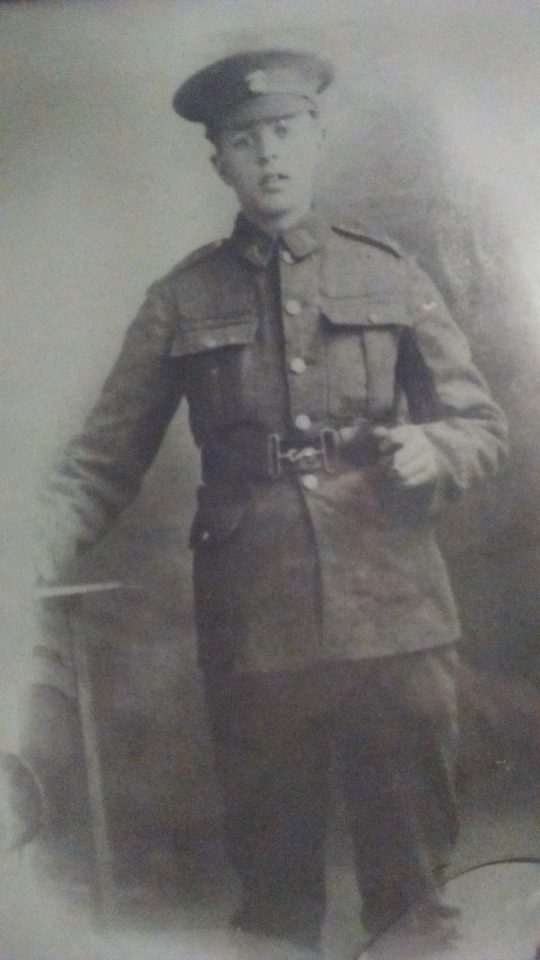
Submitted by Jon Bemrose. Private Fred Ward (50236) born 1898 in East Yorkshire. Working as a lad porter on the railway at Ampleforth before joining up. Joined the Green Howards at Richmond, but he was transfered to the Northumberland Fusiliers. Fred was in France, near Arras in early 1917 – Jon states: “The fateful day was the Battle of Arras, Easter Monday 9th April. It must have been terrible, having heard and seen all the death and destruction that had occurred before they set off at around 9:00am. My best guess is that they reached the “Blue” line, where they were hit by machinegun fire. Whether initially buried by shell fire or his comrades, Fred was later found and finally burried at Orchard Dump Cemetery, Arleux en Gohelle. I visited his grave in 2016, the first of the family to do so I am led to believe.”
Read moreJames Scott Bainbridge
March 6, 2018
Submitted by Pat Burgess. James Scott Bainbridge was born on 10 October 1887, the youngest of three sons, to William and Isabella, the family lived in Ravensworth. On leaving Barnard Castle school he joined the staff of the chemical laboratory of Rowntree & Co. of York. He subsequently spent three years at Leeds University where he graduated Bsc with first class honours in chemistry; he also took the Associateship of the Institute of Chemists, later becoming a Fellow of that Institute. He returned to the staff of Rowntrees and remained there until just before the war, when he was appointed chemist to the Thorne Colliery Company. James did not take up this appointment, as upon the outbreak of war he enlisted as a private in the Yorkshire Regiment, along with his two brothers. His abilities and qualities were soon recognised, and promotion came quickly. As a Company Sergeant Major he went with his battalion to France. When the men of his section experienced attacks of poison gas he was enabled, by his expert knowledge of chemistry, to protect them. He was mentioned in despatches in 1915, and received a commission on 22 November of that year. Shortly afterwards he was wounded. He was promoted to Lieutenant on 1st July 1917 and appointed Adjutant on the death of Capt Sproxton on 20 July, and promoted to Acting Captain on 3 August 1917. Capt James Scott Bainbridge was mentioned in Sir Douglas Haig’s Despatch of 7 April 1918 for distinguished and gallant…
Read moreAustin Graham
March 6, 2018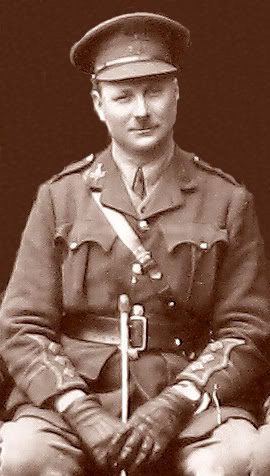
Submitted by Pat Burgess. The Graham family were local to Barnard Castle, they lived on The Bank, where father John had a chemist and grocery business. John Austin was born on 2 March 1872. After his time at school from 1886 until 1889, he took a Electrical Engineering apprenticeship. Later he started an electrical business with his brother – Graham Brothers Electrical Engineers in Middlesbrough. He was secretary of the Saltburn R.N.L.I. and a gifted operatic singer. Serving as a territorial captain, Austin Graham was with the 4th battalion when war broke out in August of 1914. He landed with the battalion at Boulogne on April 18th 1915 when the battalion was almost straight away thrown into the 2nd battle of Ypres. On April 24th Captain Graham and his men had their first taste of action in fierce fighting during the Battle of St Julien. On Whit Monday 1915 the battalion were in trenches astride the Menin Road at Hooge and Austin Graham was badly gassed and hospitalised with his injuries. In early 1918 the battalion were back in the Ypres sector and when the German Spring Offensive opened on March 21st they were in a position close to Hancourt. There followed nine days of fighting on the retreat under the enemy onslaught. A brief rest at Bethune followed this and then on April 8th the battalion was moved up to take part in the Battle of the Lys. By now CO of the 4th battalion Major Austin Graham was…
Read moreJoseph Taylor
March 6, 2018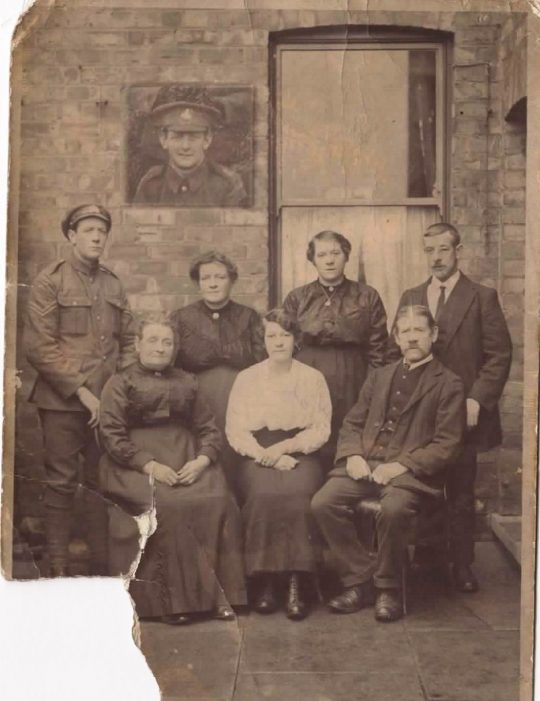
Submitted by Angela Atkinson. L/Sgt Joseph (Joe) Taylor – shown in the picture on the wall – served in 4th Battalion Yorkshire Regiment. Joe was my Grandad’s brother, born in 1887. Joseph worked as a length man on the North Eastern Railway before the war. He was killed in action on 25/4/1915. He is commemorated at Ypres and on the Lych Gate in Brompton, Northallerton. His parents were my great grandparents and I believe the others on the photo are all his family. The other person in uniform is William Robert (Bill) Taylor, who was born in 1883. Captain Stead wrote to Taylor’s family:- “Sergeant Taylor, along with his Company Commander, Major Matthews, were the first of their battalion to fall for their Country. His rapid promotion shows the confidence that was placed in him. He was an excellent soldier and a brave man.”
Read moreMetcalfe Close
March 6, 2018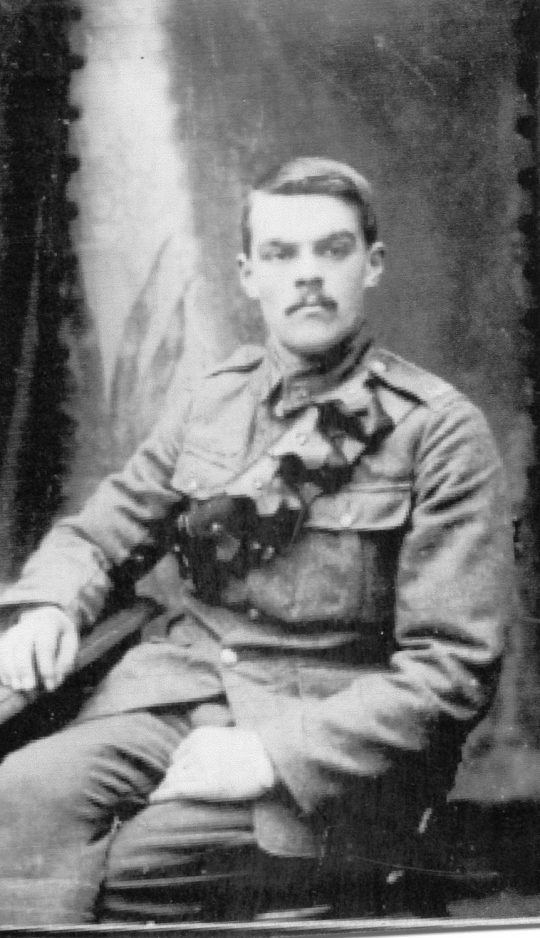
Submitted by Pat Burgess. Ralph Metcalfe and Elizabeth Close were possibly unmarried when their eldest son was born towards the end of 1893 at Gunnerside. Hence he was given his father’s surname as a christian name and his mothers surname name. Ralph and Elizabeth were both born in Swaledale, he in Muker, and she at Melbecks. In 1901 the family, which now included another two sons and two daughters, was living at Fell House, Hartley, Nr. Kirkby Stephen. Metcalfe enlisted at Richmond, as it appears he was working at Browson Bank Farm, on the A66, at that time. His Battalion was sent to fight in Palestine, where sadly he contracted malaria and died on 14 June 1918. He is buried in Gaza War Cemetery.
Read moreWilfred Carver
March 6, 2018
Submitted by Angie Atkinson. Wilfred Carver, Royal Marines Light Infantry (16955), was born in 1895. He died on the 26th of November 1914 while on the HMS Bulwark. He is remembered on the Portsmouth Naval Memorial.
Willimina ‘Minnie’ Melville
March 6, 2018
Willimina ‘Minnie’ Melville 28/04/1886–11/02/1967 Minnie was born in Johnshaven, Scotland and volunteered for the British Red Cross in November 1916. She was initially stationed at Whalley Military Hospital as a VAD nurse from 4/11/1916 to 26/06/1917, before moving to Catterick Camp Military Hospital, again as a nurse, from 15/01/1918 until 6/04/1919. Willimina Melville, now Mrs Scales married James Jarvis Scales in 1922 and they were married up until her death on the 11th of February 1967. Minnie and Jim had emigrated and were living in Nanaimo, British Columbia, Canada in 1967. This information, provided by Alathea Anderssohn has been drawn from the Imperial War Museum’s ‘Lives of the First World War’ archive.
Read moreFlorence Hilda Lily Biggs
March 13, 2018
Florence was born on the 19th of October 1899 in Boxted, Essex, United Kingdom to Ellen Biggs and Henry Ernest Biggs. She enrolled as a VAD clerk for the British Red Cross and was stationed at the Military Hospital Catterick Camp. ‘Biggsie’, as she was known by her friends and fellow VAD workers, spent approximately a year at Catterick Camp. Stationed from 15th January 1918 until the 11th of February 1919 when she returned to Essex as a VAD G/S Clerk in the British Red Cross, Sobraon Military Hospital, Colchester. Florence Hilda Lily Biggs died in Essex, United Kingdom in 1984. This information, provided by Alathea Anderssohn has been drawn from the Imperial War Museum’s ‘Lives of the First World War’ archive.
Read moreGertrude Berry
March 13, 2018Gertrude was born in 1891, She spent the war as a nurse in the Other Empire Force, Voluntary Aid Detachment, QAIMNS. She was sent straight to France upon joining the Red Cross and from the 9th November 1915 – 8th June 1916 and then 1st July 1916 – 1st August 1916 she was stationed in France. In 1917 she married Harry O ‘Baines. Gertrude was posted from March 1917 until April 1917 at Military Hospital Havant before moving to Catterick Camp in March 1918. This information has been drawn from the Imperial War Museum’s ‘Lives of the First World War’ archive.
Read moreSamuel Staite
April 16, 2018
This is 65038 Private Samuel Revel Staite, born in 1878, a native of Leeds and self-employed house painter. He joined the army in Leeds on 11th December 1915, at the age of 37. He saw service with the Royal Engineers and the Northumberland Fusiliers. He served with the 6th Battalion, Yorkshire Regiment in North Russia 1918-1919. After the war he returned to his job as a painter. His own son intended to enlist when the Second World War broke out, however, he was employed in a reserved occupation, so Samuel did not have to see him off to war. Samuel died in 1944. Members of the family still live in Leeds. Samuel’s grand daughters Philippa and Deborah brought their treasured family possessions into the museum for us to take care of. Their items relate to his service in Russia in 1918 and 1919, and will help us add to our collections of items from this less well known period of Green Howards history.
Read moreBill Moore
April 16, 2018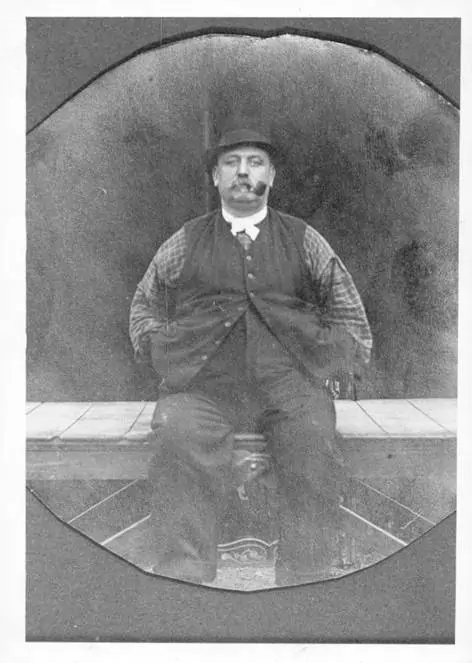
At over six feet tall and 22 stone, Bill Moore must have been an impressive sight! While originally from Wells, he made his way to the north of England with his travelling boxing booth. For a time he set up at Darlington, but at the outbreak of war in 1914, Moore decided to move his show to Catterick Camp. The ‘Tommies’ must have enjoyed what he had to offer. Boxing matches even involved Annie, his daughter and a captive bear which on one occasion escaped onto local moorland. Military Police eventually tracked the animal down, much to the relief of the locals.
Read moreHerbert Read DSO, MC
April 16, 2018
Herbert Read served in the 2nd, 7th and 10th battalions of the Yorkshire Regiment from 1915 to 1918. During his time in service he was awarded the Military Cross for his actions in leading a trench raid, successfully securing a German prisoner for interrogation and a Distinguished Service Order for his role commanding the 2nd Battalion during the German Spring Offensive of March 1918. He published two volumes of war poetry during the conflict and is commemorated alongside Wilfred Owen and Siegfried Sassoon in Poets’ Corner in Westminster Abbey. He became a leading figure in the 20th Century, as curator at the Victoria and Albert Museum and Professor of Art at Edinburgh and Harvard Universities. He counted Picasso, Dali, Graham Greene, George Orwell, Peggy Guggenheim and Man Ray amongst his friends. A knighthood in 1953 (at the suggestion of Winston Churchill) came as a surprise to his circle of political associates. His headstone at St Gregory’s Minster near Helmsley reads ‘Knight, Poet, Anarchist’.
Read moreThomas Holman
April 17, 2018
Thomas Holman, great-grandfather of Carl Watts, the Green Howard Museum’s Learning Officer, worked as a boiler maker at the Wellington Foundry in Lincoln. At the outbreak of war the company which owned the foundry, Fosters, converted production from agricultural vehicles to war machinery. It was here that the first tanks were developed under the management of William Tritton. Secrecy was of the utmost importance, and the original code name for the revolutionary new vehicle was ‘The water-carrier for Mesopotamia and Russia’. Bill Rigby, chief draughtsman and designer recounted in the mid-1980s that eventually a group of the boiler makers came to is office, fed up with the long winded code name. Their suggestion that it should just be referred to as ‘the bl**dy tank!’ has stuck with the vehicle and its successors ever since. Thomas Holman is pictured with colleagues back row, third from the left in front of ‘Lurcher’ a Mark IV male tank in November 1917. His brother George Edward Holman served with the 6th battalion Lincolnshire Regiment at Gallipoli, Egypt and France. The efforts of the brothers were combined on 15 September 1916, as 6th Lincs were at the Battle of Flers Courcelette – the first battle to see the use of the tank.
Read moreHarold Carey Matthews
April 17, 2018
Major Harold Carey Matthews was born in 1879, son of F W W Matthews, he went on to join the 4th Battalion Green Howards where he acted as subaltern during the Second Boer War. After retiring from the military he worked for Barclays Bank at Leyburn, where his father also worked. When World War One broke out he re-enlisted with the Green Howards and was promoted to Major, on 29th August 1914. He was killed in action on the 25th April 1915 near Ypres and is buried at Sanctuary Wood Cemetery, Belgium.
Read moreHarold Surtees
April 17, 2018
Jonathan Helm submitted this information about his Great Grandfather, Harold Surtees. Lance Corporal Surtees (2048/200407), was born in West Hartlepool and lived in Great Ayton. He volunteered for service in a local meeting on 2nd September 1914. Serving with the 1st/4th Battalion Yorkshire Regiment, he was posted to France as part of the 50th Northumbrian Division on 18th April 1915. Although little is known of his exact war record, his photograph indicates two wound stripes and the Whitby Gazette when reporting his death noted that he had been “three times wounded and gassed”. The only confirmed record of wounding is in the War Office Casualty List, which was printed in The Times on Wednesday 25th October 1916. This is likely to have occurred during the Battle of Flers-Courcelette (15th – 22nd September 1916) which was fought during the Battle of the Somme. He died on the 10th April 1918 (aged 26) from wounds sustained when the battalion fought at the Battle of Estaires in an attempt to stop the German advance. Harold is buried at the Haverskerque British Cemetery in France. He left behind his wife, Sarah, and their two children, Harold and Mary.
Read moreHenry Parker
April 17, 2018
Henry Parker In October 2015 the Green Howards Museum was contacted by the Ministry of Defence’s Joint Casualty and Compassionate Centre (JCCC). Human remains had been found in a field to the north- east of the village of Martinpuich on the Somme. The JCCC wanted to know if we could do anything to help identify this unknown soldier. We looked at events around Martinpuich between 25 and 27 September 1916. 77 men were lost, whilst an additional 319 Officers and Other Ranks were either wounded, or listed as ‘missing’. The remains could have belonged to any one of a potential 396 men. Through a process of elimination using research and archive information, we produced a shortlist of 12. To get any further, science needed to play its part. The Forensic team from JCCC collected DNA from the femur of the remains. DNA was taken from the next of kin of our shortlisted missing soldiers who had agreed to take part in the process. The remains were positively identified as those of 3183 Private Henry Parker, born 29th September 1893 in Weavererthorpe, in the Yorkshire Wolds. He was killed in action, aged 22, during the Battle of the Somme on 26 September 1916. Shoulder badges, uniform buttons, a belt buckle and clip, bullet and cut throet razor were found with the remains of Private Henry Parker – these are now on display at the museum. He was reburied with full military honours in Warlencourt Cemetary in France on 17th May 2017….
Read moreThomas Ginger
April 17, 2018
Lieutenant Thomas Ginger. Signals Officer. 4th Battalion. Thomas Ginger was awarded the Military Cross as a result of his bravery during the German ‘Spring Offensive’ of March 1918. In the citation for his award it describes how ‘On the first day his senior Officers were killed and in numerous rear-guard actions he found himself in command of considerable bodies of men’. One such example is during the retreat across the River Somme near Brie, when Ginger was ordered to take his men and cover the retreat of the remains of the 50th Division. He took his tired men to the far bank and took up positions to hold the advancing Germans back. At the same Lt George Begg, 239/Field Company was wiring the bridge that the retreating men were crossing. As German troops started to appear on the horizon and the last of the Durham Light Infantry crossed the bridge, Begg primed the detonator and pressed the plunger home. Nothing happened. This was repreated three times. When the bridge did blow, Begg looked across the river to see Ginger and his men still focusing fire on their foe. Eventually Ginger managed to construct a rudimentary footbridge, allowing his men to cross to safety.
Read moreLt Col Edward Pickard OBE
April 17, 2018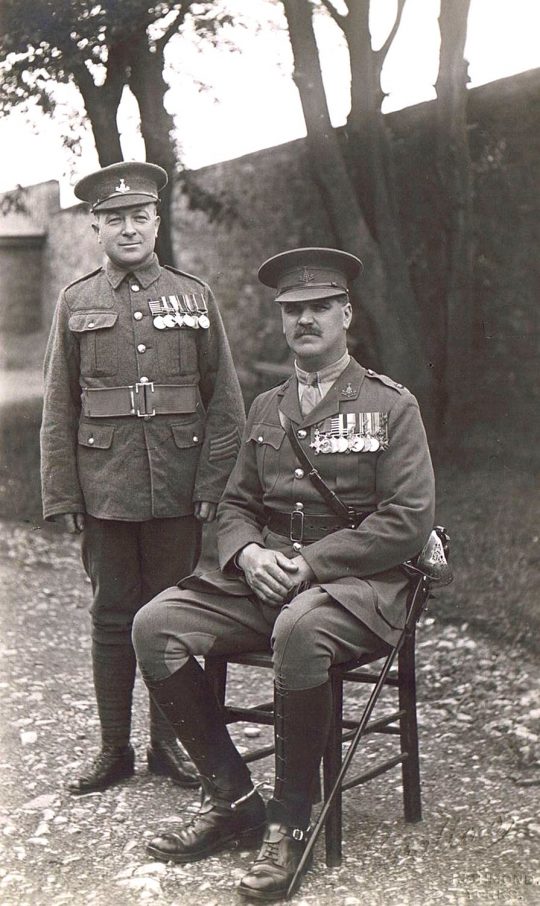
When Edward Pickard died in 1928 at the age of 56 he had given 36 years of his life to the Green Howards. Most of the town of Richmond turned out to his funeral on Friday July 21st with the mourners being headed by General Sir Edwin Bulfin, Colonel of the Regiment from 1914 to 1939. Edward Pickard enlisted as a Green Howard in 1891, and rapidly rose through the ranks. He was one of very few officers to fight with his unit throughout the First World War, during which he served as Quarter Master to the 2nd Battalion. Pickard was the first Green Howard to fire at the enemy in the First World War – shooting two Uhlans (German mounted lancers) while trying to allocate billets to his men in Ypres! His ‘batman’ or servant, Charles Porteous Hellings who was with Pickard for a total of 14 years survived the war and is pictured here with Pickard in the grounds of the Depot in Richmond.
Read moreMary Devas Marshall MM
April 17, 2018
Mary Wilkinson (née Marshall and usually known as Molly) died in Winchester in 1983 at the age of 90. Mary had originally enlisted in the First Aid Nursing Yeomanry in 1912. On the outbreak of the First World War she was initially refused permission by the British Authorities to go to Belgium and so it was under the jurisdiction of the Belgian Government that she made her way across the Channel. Her medals, testament to her work during the war, are displayed in the museum’s Medal Room alongside those of her husband, Captain Wilkinson. Few FANYs, let alone women, were decorated with the Military Medal, an award earned while she was based at the hospital at Marquise in the grounds of the 1st Aeroplane Supply Depot. This location saw the most devastating German aerial attack of the war on an aviation facility. The citation for her Military Medal states “For gallantry and coolness during a bombing raid by hostile aircraft….she displayed the utmost disregard of danger, attending many serious wound cases which required skilful and immediate assistance.”
Read moreBrig-Gen T W Stansfeld
April 17, 2018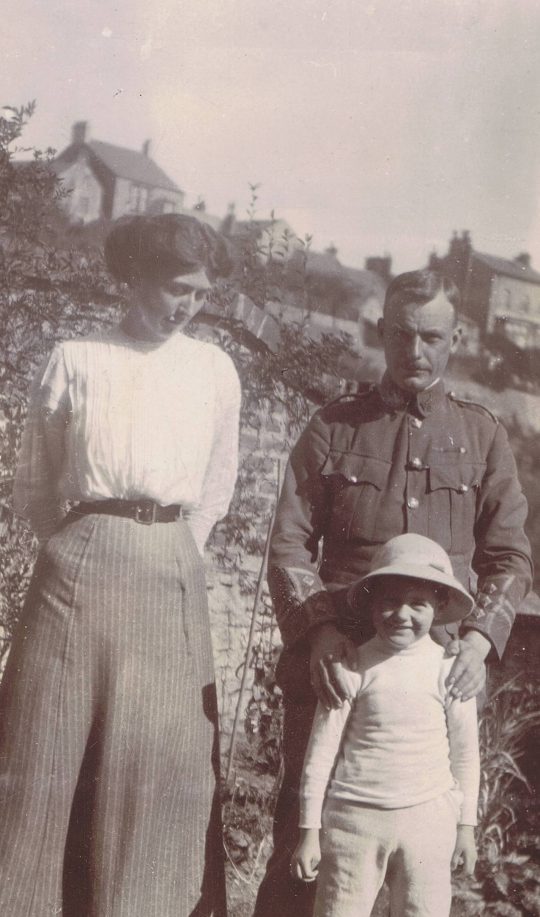
The Stansfeld family have many connections with the regiment. Both Thomas and his brother older brother ‘Jock’ served with the regiment in 1880s and 1890s. Thomas’ son and nephew also joined the regiment and both saw action in the Second World War. Thomas Wolryche Stansfeld was born in Leeds in 1877. He joined the regiment in 1897 and quickly rose to the rank of Captain. Stansfeld fought in the War in South Africa including the Battle of Paardeberg. Stansfeld was a skilled rider and joined the regiment’s Mounted Infantry Battalion. He was involved in many actions against the Boers, including the capture of the Elandsfontein railway station near Johannesburg. He narrowly escaped death when a bullet smashed into his cigarette case, leaving him unharmed. Stansfeld’s battlefield experiences were a major asset to the regiment in the First World War. During the First Battle of Ypres he ordered his company to rapidly fire at different intervals; fooling the Germans into believing that they were facing a nest of machine guns. Stansfeld survived the battle and fought throughout the First World War. After the war Stansfeld held a number of senior posts, including Commandant of the Small Arms School at Hythe. He retired from the Army in 1929 and died on the 23rd February 1935.
Read morePte J F Firby
April 17, 2018Private Firby was born in 1883 and came from Richmond, living at 49 Newbiggin. He enlisted on 12th December 1914 at the age of 31. He was a ‘Commission Agent’. He was posted to the 6th battalion on 24th August 1915 and arrived in Gallipoli on 8th September. He was wounded by shrapnel on 25th October 1915 when, according to the Battalion War Diary, at 9.30 in the morning there was a ‘Fire display by the Turks along whole of the front. 8 men wounded by shrapnel.’ He returned home on 15th November 1915. He appears among the list of wounded in the December 1915 edition of The Green Howards Gazette. On recovering from his wounds, Private Firby was transferred to the Labour Corps on 22nd May 1917 and he saw out the remainder of the war with the Labour Corps. Private Firby was examined by a Medical Board on 9th March 1917 and was in The Royal Victoria Hospital, Edinburgh on 29th July 1918 when a copy of The New Testament was presented to him. Private Firby was discharged from military service on 4th April 1919. Private Firby was again examined in 1920 and 1921 and declared to have a 40% disability, the cause being listed as ‘Bronchitis’ and granted an award of 8 shillings per week.
Read morePte W L Robinson
April 17, 2018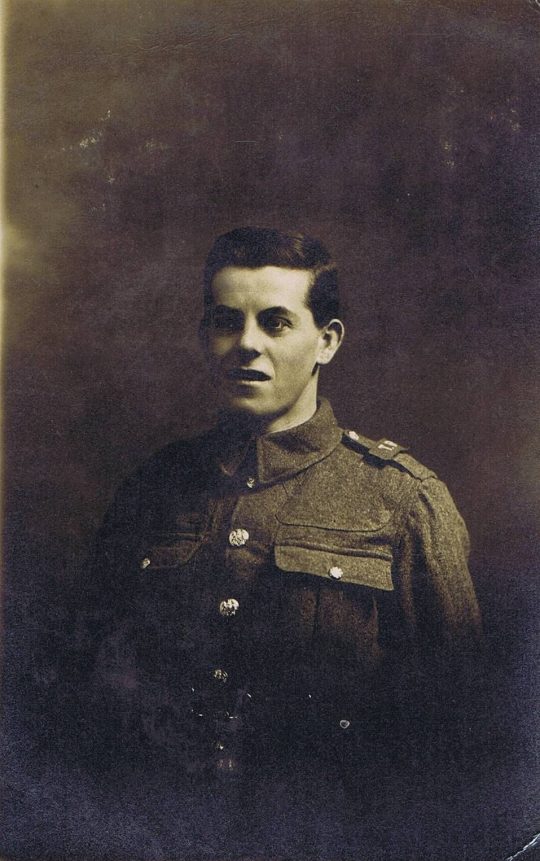
William Lincoln Robinson was born in 1897, the son of a farmer. By the time of the 1911 census his mother had died and he was living with his father, and sister in Scorton, near Richmond. Robinson enlisted in 1915. At the time he was working at Kirkbank, Middleton Tyas as a gardener. He served with the 2nd and 6th Battalions of the Green Howards as a Lewis Gunner. He survived the war and was discharged from the army on the 15th February 1919. At the moment we don’t know what happened to Robinson after he left the Army. Can you help? Robinson died aged 77 in 1975.
Read moreRear-Admiral Sir Christopher “Kit” George Francis Maurice Cradock KCVO CB SGM
April 18, 2018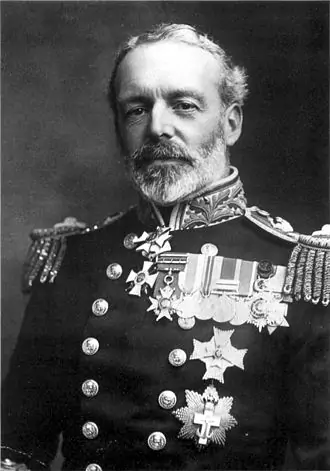
Cradock was born at Hartforth, Richmond, North Yorkshire. After attending Richmond School, he entered the Royal Navy in 1875 he was promoted to rear-admiral in 1910. With the start of the First World War, in August 1914, Cradock, commanding the 4th Squadron of the Royal Navy and stationed at Stanley, had to deal with Admiral Maximilian von Spee’s East Asia Squadron. Cradock’s fleet was significantly weaker than Spee’s, consisting of mainly elderly vessels manned by largely inexperienced crews. The orders he received from the Admiralty were ambiguous, and Cradock interpreted them as instructing him to seek and engage the enemy forces; clarifying instructions were not issued until 3 November, by which time the battle had already been fought. Cradock found Spee’s force off Chile in the late afternoon of 1 November, and decided to engage, starting the Battle of Coronel. He tried to close the range to engage immediately, so that the enemy would have the setting sun in their eyes, but von Spee kept the range until dusk, when the British cruisers were silhouetted in the afterglow, while his ships were hidden by darkness. Cradock’s flagship HMS Good Hope and the HMS Monmouth were destroyed with the loss of all 1570 lives, including his own. A monument to Admiral Cradock was placed in York Minster. There is a monument and a stained glass window in Cradock’s memory in his parish church at Gilling West.
Read moreLt Herbert Webb
April 18, 2018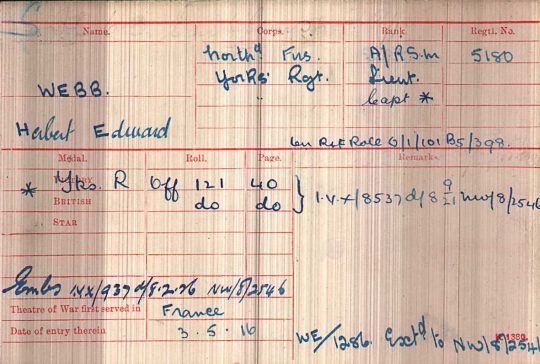
Herbert Webb was born in Richmond on 5th April 1882. He followed his father, James into the Green Howards. Joining as a boy in 1900, promotion soon followed and he attained the rank of Col Sergt Major by October of 1914. Attached to the 5th Battalion the Northumberland Fusiliers between May 1916 and October 1917 in order to improve disipline. Webb was present at the Battles of the Somme 1916, Arras 1917 and Ypres 1917. He was wounded at Armentieres on 11th April 1918 while acting as Adjutant to the 4th Battalion, Yorkshire Regiment. Webbs was twice mentioned in dispatches and eventually promoted to a commission. After returning to the line Herbert was again wounded and taken prisoner at Chemin des Dames on 27th May 1918. German POW camp records show that he was moved by July to a camp at Limburg, to the West of Frankfurt and then via two others until by November 4th 1918 he was in a Camp, Kamstigall, on a spit of land far to the East just West of present day Kallingrad, in Russia. At that time it was in Poland and called Pillau, now Baltiysk. He survived his time in the German prison camps and retired in March 1920.
Read more2nd Lt Geoffrey Roper MC
April 25, 2018
Submitted by Zoe Johnson at the Richmondshire Museum. Geoffrey Stapleton Rowe Roper 2nd Lieutenant Alexandra Princess of Wales Own, Yorkshire Regiment. His Canadian service records show that Geoffrey served as a private in Princess Patricia’s Canadian Light Infantry Imperial Army from which he was discharged on the 15th October 1915 to join the Yorkshire Regiment as a 2nd Lieutenant. He was awarded a Military Cross for conspicuous gallantry in action on the 25th of August 1916 when ‘he held his platoon with great dash in the assault, and afterwards crawled back to the trenches to make a report. He then returned to his platoon being under close and heavy fire’, this extract was taken from the London Gazette. Serving with the 7th battalion during the Arras offensive of 1917 on May 9th, 2nd Lt Roper and his men were moved into the line in trenches north of the river Scarpe. The battalion were involved in a bitter fighting around Curly and Cupid trenches and had gone into the line with 18 Officers and 436 other ranks and when they came out on May 15th there were only 5 Officers and 228 men left. 2nd Lt G S R Roper MC was killed in this action on May 12th 1917 aged 27. He is remembered on the Cabaret-Rouge British cemetery, Souchez, 7 miles north of Arras. He was the son of George and Elizabeth Roper of The Lodge, Gilling West, Richmond; his Father being a local magistrate and county Alderman, holding…
Read more2nd Lt J S Purvis
April 26, 2018
Canon John Purvis OBE (1890-1968) Canon John Purvis was an extremely talented artist and photographer. He is best remembered however for his historical and literary achievements. His translation of the original York Mystery Plays into modern English were central to their revival during the Festival of Britain in 1951. This work, along with his initiation of the Borthwick Institute for Archives in York, lead to his OBE in 1958. Purvis was born in Bridlington 1890. After studying at Cambridge University he worked at Cranleigh School as a history teacher, a role to which he would return after the First World War. He enlisted with the Yorkshire Regiment, serving with the 5th Battalion from early 1916. Purvis was wounded during the Battle of the Somme on the first occasion he went ‘over the top’. On that day, 15th September 1916, he had recorded history’s first tank attack in pen and ink in the early light of dawn. Two well known war poems, ‘High Wood’ and ‘Chance Memory’, originally published under the pseudonym Philip Johns(t)one are now known to have been written by Purvis.
Read moreHugh Morkill
April 26, 2018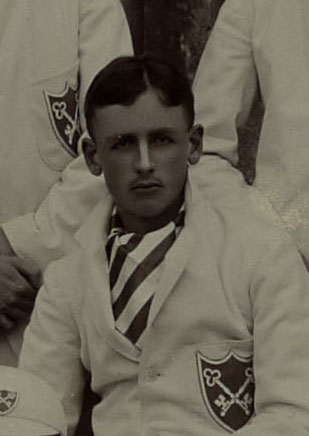
Hugh Bernard (Bobby) Morkill Hugh was born on the 1st October 1896 at Austhorpe Lodge, Whitkirk, Leeds. His father, John William Morkill, had married Hannah Shaw Hobson in Edinburgh in 1889 and they would have 4 children, Hugh being the third youngest. Hugh, like his father, was educated at Radley College Oxford enrolling there in 1910. He was a keen sportsman, being part of the College cricket XI in 1915 and a member of the first ever Rugby XV in 1914. During 1915 he was a college prefect. After college he enrolled at Sandhurst and was commissioned as a 2nd Lieutenant in December 1915. On the 22nd December 1915 he joined the Yorkshire Regiment. In 1916 he was in India with the 1st Battalion. However, becoming restless with the relative inactivity he joined the Royal Flying Corps. He was sent to the 20th Training Wing in Egypt completing his ground course in September 1917. He then completed his flying training and qualified as a pilot on the 13th October 1917. Hopes of active service were dashed when he was retained as an instructor. However, the 19th September 1918 would see his first air action against Turkish positions in Palestine. Apparently a pet ring-tailed lemur called Jimmy often accompanied Hugh on his flights! In 1922 he returned to the Yorkshire Regiment, eventually rising to the rank of Lieutenant-Colonel in 1940. He died in May 1991. Mike Senior, who knew Hugh Morkill in his later years recently visited the museum and recounted…
Read moreJohn Magee
April 26, 2018
Christine Howie (née Magee) visited the museum to tell us about the sad story of her Grandfather, John Magee who was born in Birkdale in 1889. 30876 Private John Magee enlisted on 24th July 1915 and served with the 12th Battalion of the King’s Liverpool Regiment during the First World War. He was wounded by a shell burst which damaged his left wrist and led to him being hospitalised. The distinctive ‘hospital blues’ are shown on his photo, a uniform worn by enlisted men during treatment. The fingers of his hand were badly damaged and as a result he received the Silver War Badge – according to regulations he was “no longer physically fit for war service”. At home in Southport John’s wife Annie was looking after the two children. In the photograph, Christine’s father Harry is depicted age three, with his elder brother John Alfred. Tragically, as the extract from her death certificate shows, Annie was to be one of the victims of the outbreak of Spanish flu. Her death came just a few days after the signing of the Armistice that brought about an end to the fighting. John’s sister Kitty took care of the children until John returned – to bring Harry and John Alfred up as a single parent.
Read moreHarry Patch
April 26, 2018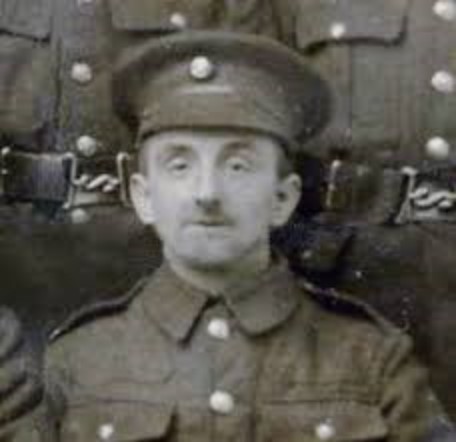
When canvassing the local businesses for information about characters from the time of the First World War for our Ribbon of Remembrance, a major surprise came from Wendy, shop manager at the Castle Hill Bookshop. “You know what my name is?!” was her reply to the enquiry. Wendy Patch is the granddaughter of Harry Patch, the ‘Last Fighting Tommy’. Henry John Patch died on 25th July 2009, aged 111 years, having attained a level of celebrity that he can never have imagined at the time when he was No 2 on a Lewis gun team in the Duke of Cornwall’s Light Infantry. Harry was an apprentice plumber before he was conscripted into the army at the age of 18. He saw action at the Third Battle of Ypres, though his war came to an end on 22nd September 1917 following a German shell burst which killed three of his fellow Lewis gunners. Harry’s wound saw him hospitalised for 12 months. The Armistice came about while he was convalescing on the Isle of Wight. Following the war, Harry married Ada Billington, had two sons Denis and Roy and returned to work as a plumber. Harry only spoke about the war in the latter part of his life and when he did it was without any animosity towards the Germans who faced him across No-man’s Land. As one of the few Great War veterans who survived into the 21st century, Harry was invited to Buckingham Palace and 10 Downing Street. He was…
Read moreArthur Godman
May 1, 2018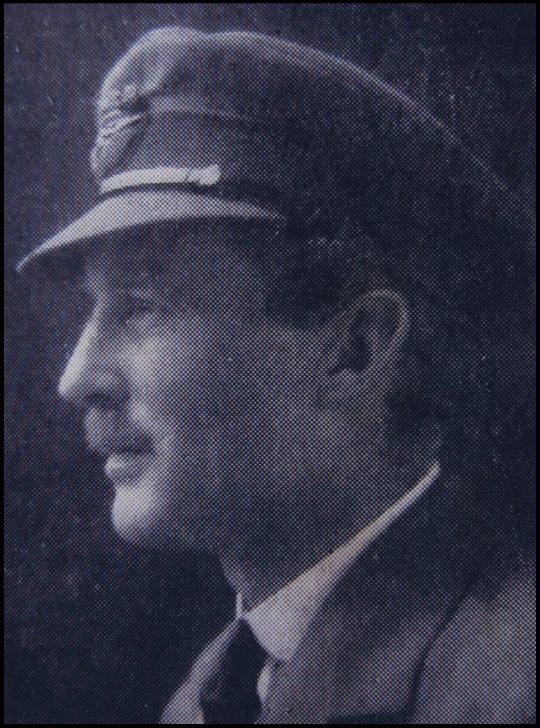
Arthur was born at Smeaton Hall , Great Smeaton, Northallerton, Yorkshire on the 9th September 1877. He was the son of Colonel A. F. Godman. He was educated at Rugby School and was commissioned 2nd Lieutenant, Yorkshire Regiment in May 1898. Whilst serving in India he wrote two articles for The Green Howrads Gazette. One was about ‘G’ Company’s donkey! Apparently awarded an Army Temperance Medal despite having a taste for alcohol! Advancing to Lieutenant in November 1900 he saw service in Somaliland. Promoted Captain in January 1906 and, after a posting in South Africa, returned to the UK to serve as Adjutant for the University of London Officer Training Corps. He was appointed Staff Captain attached to the 21st Infantry Brigade in 1914. Severely wounded at Ypres on the 30th October 1914, on recovery he was posted to the General Staff in France. Promoted Major in August 1915 he was attached to the 4th Brigade, Royal Flying Corps. He served as Brigade Major during the Battle of the Somme and advanced to Temporary Lieutenant Colonel, Assistant Adjutant General, on the RFC staff from July 1917. By the end of the war he was a Brigadier-General and was confirmed as a Wing Commander in August 1919. The following month he was posted as Assistant Commander, RAF Cranwell. He was posted to RAF HQ India at Simla being promoted to Group Captain in June 1923. Returning the following year to the UK he served consecutively as: Officer Commanding, School of Technical…
Read morePrivate Charles Percy Tempest
May 1, 2018
Researched by Paul Gayton. Private Tempest was in the 2nd Battalion of the Yorkshire Regiment and he was killed on the 1st of July 1916 (the first day of the Battle of the Somme) aged only 16 years of age. We believe that he is the youngest army fatality commemorated on the memorial in Friary Gardens. He was born in Richmond and his birth is registered in the 3rd quarter (July to September) 1900, so it is possible he may even have been 15 when he was killed. His parents were Thomas and Emily Annie Tempest. He had 3 older sisters, Edith Rose, Florence Ruth and Emily Ann. Also he had an elder bother Frances William. The family lived in nearby Sleegill where his father worked as a paper maker. The paper making industry on the river Swale existed in Richmond from the 1700s but ended in 1931. Charles Percy enlisted on the 22nd of August 1915 and was initially posted to the 3rd Battalion. In 1916 he transferred to the 2nd Battalion for active service in France. He is buried at Danzig Alley British cemetery at Mametz and his name is among the others that are commemorated in Friary Gardens.
Read moreAlbert Victor Taylor
May 2, 2018
Submitted by David Taylor. Albert Victor Taylor was my great uncle. He was born in Middlesbrough in 1897, the son of Thomas and Margaret Taylor (nee Hill). At the age of 3 in 1901 he was living at 119, Barritt Street, Middlesbrough with his father, a steam engine fitter and his mother. By 1911 the family were living at 19, Haddon Street, Middlesbrough and Albert Victor’s Occupation was an errand boy for a leather merchant. Like many others in his age group Albert Victor Taylor followed the call to join the Colours. He became a private in 1/5th Battalion Alexandra Princess of Wales’s Own Yorkshire Regiment. His service number was 241492 and he was killed in action at Berny-en-Santerre in France on March 3rd 1917. His name is inscribed on the Thiepval Memorial.
Read moreJohn Lionel Calvert Booth
May 2, 2018
John Lionel Calvert Booth – research by John Broom Born in Catterick Village in 1876, he worked as a farmer and then became a 2nd Lieutenant in the Yorkshire Regiment 1897. He was the son of John Bainbridge and Margaret Alice who in 1881 were living at Killerby Hall, Killerby, Yorkshire. He had served 15 years as captain with the Yorkshire Regiment.He also appears to have been the editor of a book called ‘Sporting Rhymes and Pictures’ in 1898. Booth married in 1905. His two sons were born in 1906 and 1909. During the Boer and the Balkan Wars between Bulgaria and Turkey (1904 and 1909) he served as a war correspondent and artist, representing ‘The Graphic’ in the latter. In 1909 he was severely wounded at Constantinople. He also contributed to ‘Punch’, the satirical magazine and was author and illustrator of ‘Trouble in the Balkans’. In 1912 he began farming in Australia and later became a Boy Scout troop leader. At the time of his enlistment into the AIF he lived with his wife Margaret Caroline at The Cottage, Serpentine Road, Albany, New South Wales. He embarked from Freemantle on H.M.A.T. A7 Medic on the 2nd November 1914 for the Mediterranean. He was wounded in action near the Dardanelles on the 25th April 1915. On 1st May he died of his wounds while bound for Malta on Hospital Ship “Mashroba” and was buried at sea. He was Mentioned in Despatches.
Read moreWarwick McCartney
May 10, 2018
Submitted by Wendy Patch I am the granddaughter of the much celebrated Harry Patch, who is famous, for the most part because he survived the First World War. But I often think of my other grandfather, or great grandfather to be precise, who didn’t survive and of his wife, who was left a widow with five young children, my grandmother amongst them. His name was Warwick McCartney and he was a deserter. Who knows why, fear, no doubt but surely just as much a reluctance to leave his wife and young family. He was caught, taken to Scotland to be as far from his family as possible (he was a Londoner) to discourage absconding. I know my great grandmother travelled up to Scotland by train to see him and that she knew when he was passing through London on his way to the front, so she went to the station hoping to see him as he passed through. Needless to say she was unsuccessful. He was put in the front lines, as I understand deserters often were and was killed, leaving his wife to manage on her own as best she could. [Warwick’s] wife was called Caroline (maiden name Farmer) and she actually had seven children when he died, my grandmother Annie, Warwick (known as Wally), Nell, Carrie, Harry boy, Bobby and Georgie. The two little boys were in hospital, we think with diphtheria and when the policeman came to the door to tell her that her husband had been…
Read moreRobert William Watson
May 10, 2018
Submitted by Jon Bemrose. Robert William Watson was the Fourth son of Alfred and Annie Watson, of 15, Ashville St., Bridlington. Before the outbreak of hostilities he was a fireman of the North Eastern Railway at Bridlington. 241608 Private Robert Watson served in the 5th Battalion Yorkshire Regiment and died on 28th October 1917 aged 21. His name is inscribed on the Tyne Cot Memorial in Belgium and on the cenotaph in Bridlington.
Read moreReginald James Owen Thompson
May 10, 2018
Submitted by Josephine Parker. My Uncle – Reginald James Owen Thompson (son of Owen Thompson who is featured elsewhere on the Ribbon of Remembrance) lied about his age and forged his mothers signature to join the Leicester Fusiliers at the age of just 14. He served in France and later, after the First World War, he served in China.
Read moreOwen Thompson
May 10, 2018
Submitted by Josephine Parker. My Grandfather, Owen Thompson served in The Northamptonshire Regiment, he trained new recruits during the First World War. During the war he served in Egypt and Gallipoli. He continued this role despite contracting Malaria.
Read moreJoseph Snowden Atkinson
May 10, 2018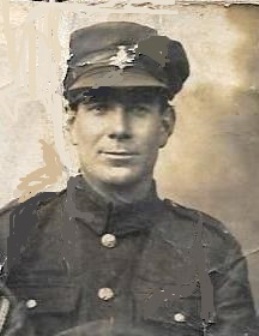
Submitted by Mavis Marwood a resident of Richmond for the last 10 years. Private Joseph Snowden Atkinson (204103) was my grandfather. He was born in Gainford and lived in Ravensworth. Like his father his occupation was as a stonemason. He served in France during the war and was one of the lucky soldiers to survive the conflict. One of the images is a handmade Christmas card that he sent from the front line to my mother when she was little girl. On his return to Ravensworth he went on to become a master stonemason.
Read moreJohn Albert Lancaster
May 10, 2018
Submitted by Glennis Robson. John Albert Lancaster was my uncle, he was my mother’s elder brother (13 years older). My mother spoke of much loved brother who was a source of goodness and “spoilt” his baby sister. On receiving the news of his death my grandmother picked my mother up from school. They made their way home down the back lanes to hide their tears from passers by. “Jack”,as he was known, was killed on the 16th of October 1917 at hill 60 in Flanders aged 19 after only a few months at the front. He enlisted in the Duke of Wellington’s (West Riding) regiment on the 6th of December 1916 in Newcastle. His father William, a farrier, also joined up declaring that if his son was prepared to fight so was he. Unlike his son he survived the war. Having no known grave his name is on the Menin Gate. In 1988 my husband Keith and I visited the Western Front to see his name and the battlefield where he died. Since then “our Jack” has been in the consciousness of the wider family. Every November we place a poppy cross by my mother’s grave-stone in St Mary’s churchyard.
Read moreEvan Francis Kerruish
May 15, 2018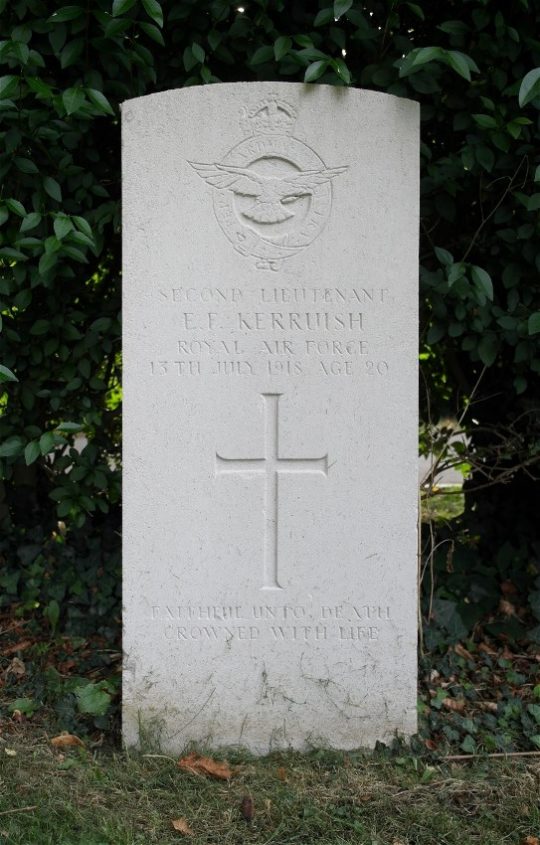
Researched by Will Young. Born on 20th July 1897 at Port Elgin, Ontario, Canada, Evan Kerruish was destined to be burried in distant Catterick at the age of 20. His parents were the Rev. Thomas and Mrs Maria Kerruish of Hamilton, Ontario. He enlisted into 153 (Wellington) Battalion of the Canadian Expeditionary Force on 6th October 1915. He sailed from Halifax, Nova Scotia on the sister ship of the Titanic, the SS Olympic on 29th April 1917 and landed at Liverpool on 7 May. Kerruish was commissioned into the Royal Naval Air Service on 9th October 1917, serving with Torpedo Squadron No 1. The cause of his death on 13th July 1918 and reason for burial at Catterick are unknown.
Read moreHerbert Lawson Riley
May 16, 2018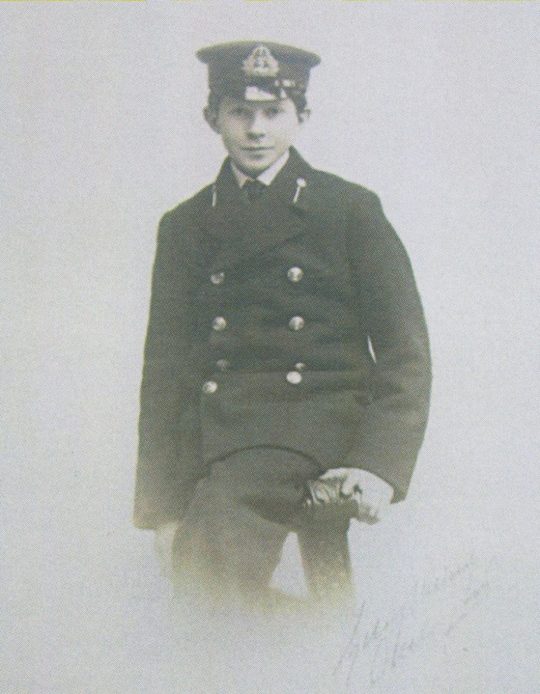
Midshipman Herbert Lawson Riley Ann Luxmoore came to one of our drop-in sessions at The Station to tell us about her Uncle, Herbert Lawson Riley. At the age of 15 years and 7 months, Herbert is not only probably the youngest serviceman from Richmond to die during the First World War, but he was also the first. Herbert was the grandson of Sir John Lawson of Brough Hall. He initially attended the Royal Naval College at Osborne on the Isle of Wight before becoming a Cadet at Dartmouth Naval College. On the outbreak of war in August 1914 Herbert was appointed to the patrol cruiser HMS Aboukir, becoming a Midshipman shortly afterwards. HMS Aboukir, along with sister-ships HMS Hogue and HMS Cressy were sent to the Hook of Holland to patrol the North Sea coast. At 6.25am on 22nd September 1914 the Aboukir was hit by a German torpedo – while the cruiser was listing badly Herbert jumped into the sea and managed to make it to one of the lifeboats. Finding apparent safety on board the Cressy, Herbert and his surviving shipmates began to recover in the ship’s sickroom. Disaster struck a second time. HMS Cressy was hit twice by the same German submarine that had sunk the Aboukir. Herbert Lawson Riley was last seen clinging on to wooden wreckage along side one of his closest friends. All three patrolling cruisers were sunk with the loss of more than 1400 lives.
Read moreOakley Alsop Browning
May 16, 2018
Researched by Will Young. Second Lieutenant Oakley Alsop Browning is burried in the cemetery in Catterick Village. He enlisted on 6th October 1915 as 9587 Private Browning, as a member of 12th Field Ambulance, Australian Imperial Force (Browning came from North Carlton, Victoria, Australia and was the son of Major Demby de Courcey Browning, Commanding Officer of Base Command, Keswick Barracks, Adelaide). He was commissioned as a Second Lieutenant into the Royal Flying Corps on 17th March 1917. On 11th August 1917, while flying an Avro 504 at Catterick aerodrome he was in a collision with a BE12 flown by Lieutenant Errington Edward Castle. Browning died on the same day while Castle (who is also burried in Catterick) died of his injuries on 12th August.
Read moreArnold Lupton Shaw
May 21, 2018
Researched by John Mills. Arnold was born on the 19th January 1896 in Harrogate Yorkshire. His Army career started with the 5th Lancers with which he went to France in August 1914. He was present at the Battles of the Aisne, Ypres, Somme 1916 and Arras 1917. He transferred to the Yorkshire Regiment on the 26th September 1917 and having gained a commission as a 2nd Lieutenant and joined the 2nd Battalion on the 18th January 1918. He was promoted Lieutenant 26th March 1919, Captain 16th November 1929, Major 1st August 1938 and Lieutenant Colonel 27th December 1943. He also served in Waziristan 1913-25 and with the Shanghai Defence Force 1930-31. Between 1933 and 1936 while serving in India he played 1st class cricket for the ‘Europeans’ team. During the Second World War he commanded the 1st Battalion, The Green Howards, 1941-43 and received a DSO on the 8th November 1943. He retired from the Army as Honorary Brigadier on the 30th December 1943. He had married Constance Smith on the 6th October 1917 when they were both just 21. On the 27th January 1949 they set sail from London on the P&O liner SS Matiana for a life in Kenya where Arnold joined the Nairobi police force. He was made Assistant Superintendant of Police on the 6th January 1950, becoming Senior Superintendant on the 1st January 1956. He was there during the early years of the Mau-Mau Rebellion. He died at Malton Yorkshire on the 13th November 1972.
Read more2nd Lieutenant Philip Mayne
May 21, 2018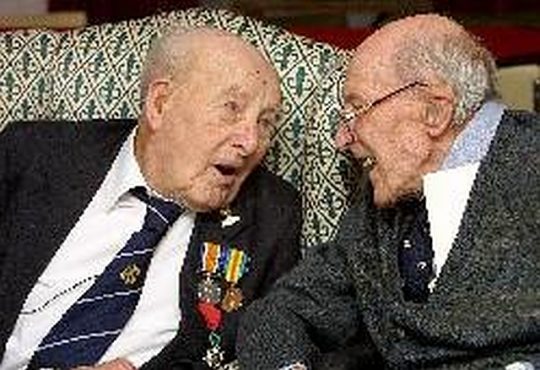
Philip Mayne was the last surviving British officer from World War One to die. He died at the age of 107 years and 139 days at a care hostel in Richmond, North Yorkshire in 2007. Philip’s war service was was brief and he never saw any action. However he was the last verteran to die who held the rank of officer. This happened thanks to a cadetship into the Royal Engineers which meant he was fast-tracked to second lieutenant — the lowest officer rank — in September 1918 at the age of just 18. The war ended six weeks later and he was demobilised on Christmas Eve 1918 without having set foot in France. Following the war he studied at Cambridge and became an engineer. With a birth date of 22 November 1899, Mr Mayne was alive in the 19th, 20th and 21st centuries. At his death he had three children, eight grandchildren and twenty-one great-grandchildren.
Read moreMajor T E Young
May 23, 2018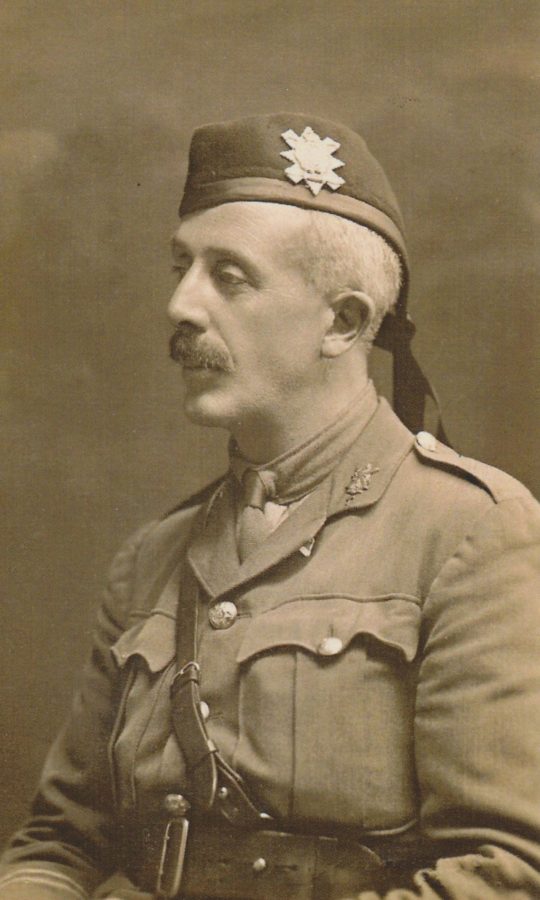
Submitted by Will Young. 1/6th (Perthshire) Battalion, Black Watch (Royal Highlanders) Thomas Young (TEY), my grandfather, was born in 1874 and commissioned into 4th (Volunteer) Battalion, Black Watch in 1898. At the outbreak of the First World War, he commanded “F” (Auchterarder) Company, 1/6th Black Watch, and was mobilised on 5th August 1914 and went with them to their war station which was at North Queensferry on the north side of the River Forth close to the railway bridge. He did not accompany the battalion when it went overseas in May 1915, and until he did go to France he served with one of the reserve battalions at various locations in the UK. TEY re-joined the 1/6th near Arras on 9th July 1916. The battalion went south to the Somme and after their costly attack near High Wood the Officer commanding “C” Company was killed, he took over its command. The 1/6th was withdrawn from the battle area and moved north to Armentieres. They stayed in this area until early October and during this time spent 28 days in the trenches, sometime in a “Rest Camp” and the remainder of the time training or working, and one day at the Divisional Horse Show. The battalion moved back to the Somme and on the 13th November he was wounded at Beaumont Hamel, during the Battle of the Ancre. After treatment in a hospital in France he was evacuated to the UK. He did not return to the front and left the…
Read more2nd Lieutenant Thomas Charles Goode M.B.E.
May 23, 2018
Researched by John Mills. Born 27th of January 1880 Thomas was the son of Sergeant Valentine Goode also of the Yorkshire Regiment and his mother was called Helen. He was part of a large family; he had five brothers and two sisters. He enlisted in Richmond on the 27th of August 1897. Being a first rate rifle shot he devoted himself to musketry and became an instructor. He served throughout the whole of the Boer War with the 1st Battalion. He was awarded the Queen’s medal with 6 clasps and the King’s with 2. In 1905 he married Mary Agnes Grace Dobinson. In 1914 he was with the 1st Battalion in India, his campaign medals indicate he was in France some time after 1915. He became a 2nd lieutenant in the Somerset Light Infantry (Prince Albert’s). He survived the war and retired with the rank of Captain on the 8th of June 1920. He was awarded the M.B.E. on the 3rd of June 1919 for his services in connection with the war in India. He must have returned to the army to serve in World War 2 because he has campaign medals (World War 2 service medal and war medal). Perhaps this might have been in some form of instructor role.
Read more4/7766 Private Thomas Holmes
May 23, 2018
Mary Burn visited the Green Howards Museum to tell us about her father’s cousin, Thomas Holmes. Prior to the outbreak of the First World War, Thomas Holmes worked for Mr Gaffanney, a coal dealer in Leeds. As a reservist, he was called up on the outbreak of War to the 9th Battalion, the West Yorkshire Regiment while his brother served with the 1st Scots Guards. At only 19 years of age, Private Holmes was sent to Gallipoli. One of the thousands to die at Suvla Bay, he was killed on 29th October 1915 and is buried at Hill 10 cemetery along with 548 other casualties.
Read moreWilliam McNally VC
May 23, 2018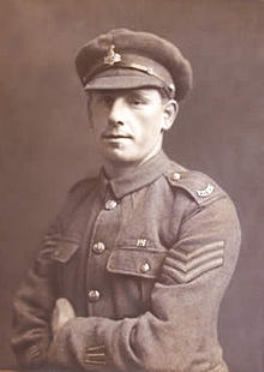
William was born on the 16th December 1894 in the village of Murton in County Durham. At 14 he would follow his father down the pit at Mutton Colliery. At the outbreak of war he enlisted on the 3rd September, aged 20, into the Yorkshire Regiment, The Green Howards, and was posted to the 8th (Service) Battalion. The Battalion travelled to France in August 19115 as part of the 69th Brigade, 23rd Division. It was during the Somme offensive in 1916 that William would win his first Military medal, having gone out into no-man’s-land to rescue a wounded officer. The following year during 3rd Ypres, generally known as Passcheandaele, he received a bar to his Military Medal, again recuing men wounded or buried under shellfire. In late 1917 he was part of the detachment of British and French troops sent to the Italian front to bolster the Italians after their disastrous defeat at the Battle of Caparetto. In October of 1918 the allied advance culminated in their victory at the Battle of Vittorio Veneto paving the way for the total defeat of the Austrian Army. It was during this battle that William received the Victoria Cross having put to flight the enemy and capturing a machine gun. William left the Army in February 1919 and returned to life down the pit at Murton Colliery. He married and would father 6 children. In 1940 he joined the Local Defence Volunteers in Murton and the following year served in the Durham Home…
Read moreWilliam Tuck
May 23, 2018
Submitted by Marcia Howard. William Tuck was brother to my maternal grandmother Emma Clifford (nee Tuck) in Gloucestershire, my mother’s Uncle Willie, and therefore my great-uncle although I obviously never had the chance to meet him. My Granny Clifford went on to lose 2 more brothers; heartbreaking for both her parents, and for herself and remaining siblings. William Tuck went down with his ship during World War I. His name is on the front panel of the Naval Memorial on Plymouth Hoe. The following entry is from the Register of Naval Memorials erected at Chatham, Plymouth and Portsmouth:- TUCK, Pte. William George, PLY/16293, R.M.L.I. H.M.S. “Monmouth.” Killed in action at Battle of Coronel, 1st Nov., 1914. Age 21. Son of George and Annie Tuck of Britton Bottom, Hawkesbury Upton, Badminton, Glos.
Read moreErnest Scriminger
May 24, 2018
Submitted by Paul Elliott. My Great Uncle, Ernest Scriminger was born in Leeds in 1886. He was the eldest son in a family of 4 sons and 5 daughters. he worked as a grocer’s assistant before joining the 3rd Battalion of the West Yorkshire Regiment and serving in the Boer War. He enlisted in the Green Howards in November 1904. he was almost 19 years of age, but was less than 5’4″ tall and only weighted 8 stone. The 2nd Battalion spent time in India and on garrison duty in South Africa before he transferred to the reserve. He was recalled to the regiment on the outbreak of war in 1914 and went to Belgium in the October. He would have served in the 1st Battle of Ypres and at Estaires. 1st Ypres saw the 2nd Battalion reduced in strength from 1000 men to only 300, with 250 killed and many wounded and missing. He was reported to be involved in the action at Neuve Chappelle on 12th March 1915, in which Corporal William Anderson won the Victoria Cross. Corporal Anderson lead a bombing unit of 9 men and succeeded in driving off the enemy with his bombs and those of his injured men. He is reported to have taken a large number of prisoners. He later died attempting a similar action. Ernest was wounded and taken prisoner. He died in a prisoner of war camp at Nider Ochtenhausen a year later. Only a week after receiving a letter from…
Read moreOliver H Ball
May 24, 2018
Photograph discovered in the archives of the Green Howards Museum by Stuart Hodgson, with information from Nottinghamshire County Council’s website. Second Lieutenant Oliver Ball was born in 1891 in Daybrook, Nottinghamshire. Both he and his brother, Walter were to die serving with the 10th Battalion, Yorkshire Regiment, which must have been a huge blow to his parents Alfred and Emma. After attending school in Nottingham where he joined the OTC, Oliver was employed at the Nottingham head office of the Union of London and Smith’s Bank. On 28th September 1916 the 10th Battalion were in the trenches near Fricourt consolidating the ground they had recently gained. German shells fell on the positions on a continuous basis. At about 8pm the shelling became much heavier ont the front line positions and as a result 2nd Lieut Oliver Ball was killed by shrapnel. He is buried at Guards’ Cemetery, Lesboeufs.
Read moreCaptain Leonard Yorke MC
May 24, 2018
Born in Church Fenton, Yorkshire in 1889, Leonard Yorke’s life was to come to a tragic conclusion ten years after the First World War came to an end. In his early years, Leonard lived in Castleford, the son of a Station Master with the NER. He moved to London to become an Electrical Engineer and following the outbreak of war was gazetted as a 2nd Lieutenant in the 4th Battalion, Yorkshire Regiment. By May he was in Belgium where on 24th and 25th the 4th Battalion were involved in heavy fighting. 2nd Lt Yorke was pulled out of the line due to being a vicitm of the first gas attack of the war, not returning to front line duties until August 1915. In late 1916 he was promoted to Lieutenant and by June 1917 he had attained the rank of Captain. His Military Cross citation of 28th September 1918 states that he “displayed great courage in the leading of his platoon at a time of exceptional difficulty and danger…..He was seriously wounded during the action”. The Yorkshire Post of 11 October 1918 reported “Capt. Leonard James Yorke, Yorkshire Regiment, son of Mr James Yorke, 19 South End Avenue, Darlington, has been wounded and is in hospital abroad”. After two years in hospital, Yorke was invalided out of the army. Leonard Yorke returned to London after leaving the army, but couldn’t cope following the stresses of war. On May 2nd 1929, Yorke shot himself on Hampstead Heath. At the inquest his…
Read moreArthur Arnett
May 30, 2018
Molly Copland visited the Green Howards Museum to tell us about her uncle Arthur Edward Arnett. Arthur Arnett was born in Wakefield on 3rd July 1896 and was educated at Sanda Elementary School and Leeds Central High School before working as a Junior Clerk at the Lancashire and Yorkshire Railway. He enlisted with the 2nd Battalion, York and Lancashire Regiment on 17th February 1916, serving with the British Expeditionary Force from 28th June. Following a transfer to the 5th Battalion, West Yorkshire Regiment Arthur was wounded at the Somme around 11th September 1916. He spent five weeks in hospital before being sent back to England, eventually returning to France with the 6th Yorks and Lancs on 18th March 1917. After transferring to the 10th Battalion following losses at the Battle of Loos, Arthur was killed in action at Gheluvelt on 28th September 1917 and is buried at Hooge Crater Cemetery in Belgium.
Read moreCecil Christian Jervelund
May 30, 2018
Researched by Katy Douthwaite Cecil Christian Jervelund was born in 1891, the son of a Danish Merchant, Albert Neilson Jervelund, becoming a naturalised British citizen in 1889. Before joining the army, he worked as a Clerk at the local Iron and Steel Works. Charles, his elder brother was a regular Officer in the Yorkshire Regiment and served in India, South Africa and Bermuda. Cecil had been an Officer with the 4th Yorks since 1913 and went to France with them on 18th April 1915. On May 24th, at Hooge, the Germans launched a devastating gas attack, in which 30 Green Howards were killed in action, 70 were wounded and 98 were missing. The heavy toll included Cecil, who was taken to hospital suffering from the effects of gas. After recovering and returning to his unit, Cecil was promoted to Captain on 16th February 1916. He survived the War and appears again in October 1920 when he was once more made a Captain in the 4th Yorks Battalion after they reformed as part of the new Territorial Army. He married Marguerite D Mangin in Ripon, Yorks in 1918 and died in 1942 at Middlesbrough.
Read moreMajor Charles Organ
May 30, 2018
Photographic research by Stuart Hodgson. Charles Organ had a long career in the army before arriving at Richmond Depot and acting as Recruiting Officer during the First World War, as his record from our museum catalogue recounts: Born at Woolwich 13th October 1853. Charles Organ joined as a Private 13th January 1873, Corporal 11th October 1873, Sergeant 15th August 1874, Colour Sergeant 27th August 1875, promoted to RSM on the 20th April 1882 and QM 1883, Hon. Captain 8th August 1893, Hon. Major 29th November 1900. He served in Bermuda, Halifax, Malta, Egypt, Cyprus, Egypt, Gibraltar and South Africa. He was employed as the Regimental Transport Officer 12th Dec 1900 – Sept 1902. Retired on 1st September 1902 but was then appointed QM the Royal Hospital Chelsea October 1903 – 1st September 1912, Created a MVO by King Edward July 1905. He served in the Nile Expedition 1885, Sudan Frontier Force, 1885-6, Boer War 1899-1902 including operations around Colesberg, actions at Paardeberg, Kitchener’s Kop, Proplar Grove and Drifontein and the occupation of Bloemfontein, was with the advance on Dewetsdorp, and action at Leuukop, in the march to Pretoria, actions at Brandfort, Kroonstadt, Vet and Zand rivers, and Johannesburg: took part in the advance eastwards, including the battles of Diamond Hill and Belfast – mentioned in despatches. He served with the Depot between August and November 1914 and then appointed as Staff Recruiting Officer in December 1915 becoming the Sub Area Commander for Gosport on the 19th February 1916. Died at…
Read moreSister Kate Luard
June 19, 2018
Sister Katherine (Kate) Evelyn Luard Kate was born in Averley Essex on the 29th June 1872, the daughter of the vicar and the tenth of thirteen children. Her childhood was spent at Aveley Vicarage and then Birch Rectory near Colchester. Between 1887 and 1890 she attended Croydon High School for Girls. Her headmistress and school founder, Dorinda Neligan, had been a nurse in the Franco-Prussian war of 1870/1, as well as being a suffragette and campaigner for women’s rights. She may well have been the inspiration for Katherine’s desire to go into nursing. On leaving school Kate took various jobs to earn money to train as a nurse. This she did at Kings College Hospital in London. In 1900 she served with the Army Nursing Service for two years in South Africa during the 2nd Boer War of 1899-1902. Following nursing work at home, on the 6th August 1914, aged 42, Kate enlisted in the Queen Alexandra’s Imperial Military Nursing Service Reserve. Kate served in France until 1918, firstly on ambulance trains then at Casualty Clearing Stations. She was awarded the Royal Red Cross and Bar, and was twice mentioned in dispatches for gallant and distinguished service in the field. Her various letters to her family at home were published in two books: ‘Diary of a Nursing Sister on the Western Front 1914-15’, published anonymously in 1915, and ‘Unknown Warriors: The Letters of Kate Luard RRC and Bar, Nursing Sister in France 1914-1918’ first published in 1930. Kate never married…
Read moreLeslie Hanson Marriage
June 19, 2018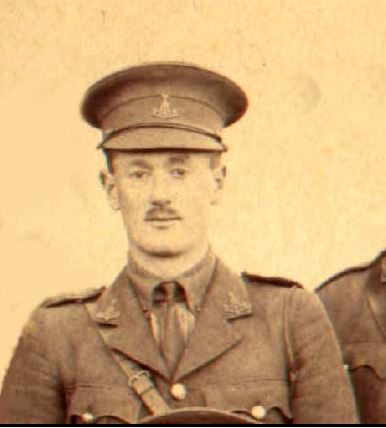
Reasearched by John Mills. Leslie Hanson Marriage was born in Chelmsford in 1892. He was educated at Marlborough College from 1905 to 1910 and in the summer of 1910 passed into the Royal Military College Sandhurst. He left in late 1911 and was commissioned on the 20th September as a 2nd Lieutenant in the Yorkshire Regiment. He made Lieutenant on the 2nd September 1914. He went to France with the 2nd Battalion and was wounded near Ypres on the 29th October 1914. He served with the Motor Machine Gun Corps in France from 10th August 1915 and was again wounded in March 1916. This time his wounds were described as ‘shell shock’ though the actual details are unknown. He was repatriated to England for rehabilitation. Six months later in November 1916 he was fit enough to be given command of a Home Cadet Battalion. In November 1917 he was appointed to the Egyptian Expeditionary Force. April 1918 would see him back in France second in command of the 74th MGC taking part in the action around the Somme and Albert to the Hindenburg Line in September 1918. He was promoted to acting Lieutenant-Colonel in December 1918. He volunteered for service in Russia for which he sailed in May 1919. He was awarded the Military Cross in 1920 and retired from the Army in September 1922. He married in 1926 and died in 1935.
Read moreHerbert John Friend
June 19, 2018
Researched by John Mills Herbert was born on the 16th June 1885 in India. He was baptised on the 8th July 1885 at St John’s Church in Meerut. He was the son of George Friend, a Lance Corporal in the Kings Own Scottish Borders. Nothing is known about Herbert’s childhood and early life. In fact the next that is known about Herbert is that he is a soldier with the Yorkshire Regiment. His service number, 9970, would indicate that he joined around December 1911 and was in the 2nd Battalion. He had been stationed at The Curragh at some point and while there he met his future wife Nora who lived nearby on the Harrison Estate in County Kildare. They were married on the 21st January 1916 while Herbert was home on leave from France. He attained the rank of Corporal on the 31st October 1914 and by October 1916 was a CSM. Herbert would survive the war and by 1919 he was part of the Expeditionary force sent to the Archangel area of Russia to assist the White Russians against the Bolsheviks. This campaign is well documented for the severe conditions and brutality. By September 1919 he was on his way home but in a poor state of health. Herbert and Nora settled in Reading and had two children, George and Enid. On the 14th January 1924 Herbert left the service’ He was given a presentation clock, the inscription reading ‘A token of esteem from members of the Mess…
Read moreEdoardo Giovanoli
June 19, 2018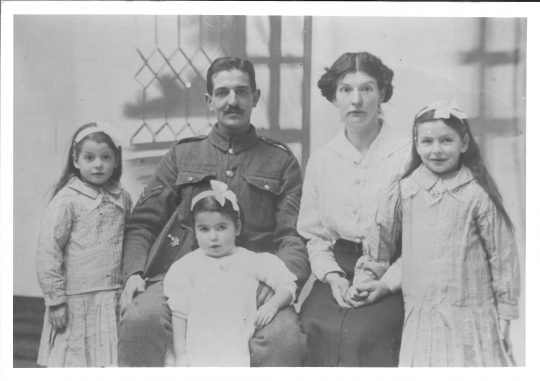
Information submitted by John Holdsworth. Edoardo Giovanoli was born in Samedan, Switzerland in April 1889, but by around 1907 he had moved to Filey in Yorkshire to work with a relative to learn the art of confectionery. Following the outbreak of the First World War, Edoardo decided to become a Naturalised British Citizen, which would allow him to fight for his adopted country. He joined the 5th Battalion, the Yorkshire Regiment as 3072 Lance Corporal E Giovanoli in 1915. On 20th September Edoardo was wounded while in the trenches outside of Armentieres, receiving gunshot wounds to the left arm and the neck. After hospitalisation and convalescence (during which time he met his newly born daughter, Dorothy) Edoardo returned to the front in 1916, attaining the rank of Corporal some time after this. Having spent most of the war in Belgium and France, it seems that Edoardo may have been used as an interpreter during the latter part of the conflict on the Italian-Austrian Front. Following the war the family moved to Bradford, and Edoardo worked as a Master Baker for Clark’s High Class Confectioners on North Parade. He became ill in 1927 and was admitted to St Luke’s Hospital. He died on 13th August and his death certificate records that the war wounds sustained 12 years earlier were the cause of his death. …
Read moreSidonie van Eepoel
July 3, 2018
Sidonie van Eepoel died just a few months before the end of the First World War at the age of 40. Her family story is shared with a quarter of a million other Belgians, who fled to England to escape the invading German Army in 1914. Around 10,500 of these refugees ended up in Yorkshire, the biggest intake of any area outside London. For those who stepped off the train after up to a month of travelling there was both relief and exhaustion. It was after mid-September 1914 that were the first Belgian migrants started to arrive in Yorkshire. Sidonie’s family arrived in Richmond in November 1914, establishing their home at 10 Frenchgate. A total of 17 Belgians appear to have been made welcome in Richmond, with some also living at 10 Park Wynd. While Sidonie and her mother died during the war and were buried in Richmond in the town cemetery on Reeth Road, 15 of their friends and family returned to their native land when hostilities ceased. They were fit, safe and well thanks to the generosity and hospitality of the people of Richmond in their time of need. Photo submitted by Sara Cox.
Read moreFlora Sandes
July 3, 2018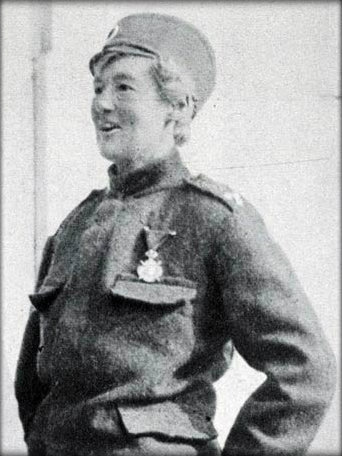
Researched by John Mills. Flora Sandes was the only woman to officially fight on the front line during WW1, having joined the Serbian Army. Flora was born on the 26th January 1876 in Nether Poppleton, near York, the youngest of eight children. From an early age she exhibited an adventurous nature, a real tomboy, somewhat surprising for the daughter of a vicar! At the aged of 9 the family moved to rural Suffolk. Even her middle class upbringing didn’t dull her desire for adventure. After school she trained as a stenographer in London and scrapped together all her money, and together with the proceeds of a legacy from an uncle she went off to see the world travelling to places like Egypt, Canada and America. Flora was 38 years old when WW1 broke out and was living in London at the time. She enlisted as an Ambulance Service Volunteer and just 8 days later she was on her way to Serbia with the first volunteer unit to leave Britain. She worked in Military Hospitals and by October 1915 was fluent in the Serbian language. She eventually enlisted in the Serbian Army, one of the few countries in the world that accepted female soldiers. She soon made a name for herself, rising through the ranks to Sergeant within a year. It wasn’t just soldiering that Flora matched her male counterparts. She could hold her own racing cars, shooting, smoking and drinking. She survived the front line fighting, received a terrible shrapnel…
Read moreBetty Stevenson
July 3, 2018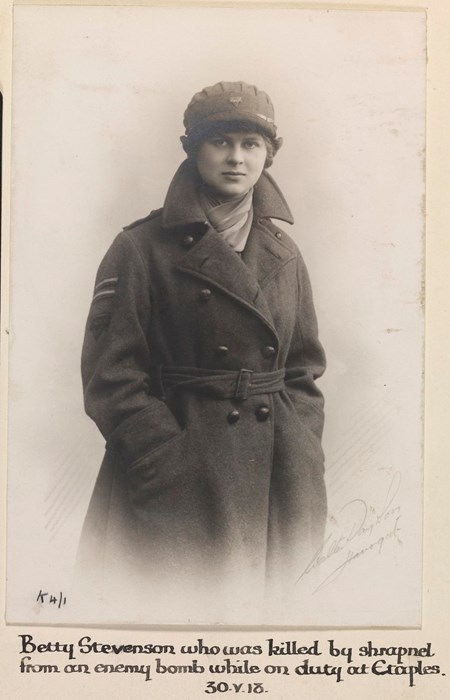
Betty was born on the 3rd September 1896 in Clifton in the Bootham area of York. She came from a well off middle class background and was educated at home until she was 14 whereby she was despatched to boarding school at St Georges Wood in Haslemere Surrey. From school she went to Brussels to study music. In 1913 the family moved to Harrogate where Betty’s father, Arthur, established himself as a leading estate agent. Betty had a younger brother born in 1901, James Arthur Radford, in which in her letters referred to him as JARS. Both Betty’s parents were active supporters of the YMCA. Her mother Catherine served throughout the war as chair of the YMCA’s Women’s Auxiliary. Betty appears to have acquired early in her life a high sense of civic duty. Betty and her parents were part of the group that travelled to London to help with the Belgium Relief Fund after the outbreak of WW1. They would be involved in the transferring of refugee families to the Harrogate area from their encampment at Alexandra Palace. In January 1916 one of Betty’s aunts went to France to manage a YMCA canteen and Betty was determined to join her. She set off on February 11th, aged 19, to join her in the St Denis Hut outside Paris. She completed her time at St Denis, took some home leave and returned to France to become a driver at Etaples in April 1917. Betty was extremely young at the time…
Read moreDriver John Marwood
July 17, 2018
Submitted by Peter Marwood, a long term resident of Richmond. I was brought up on my late father’s farm in Langthorne near Bedale. Driver John Marwood 671397 of the 379th Battery, Royal Field Artillery was my father’s brother and my uncle. John Marwood was born at Gayles near Richmond on the 16th of May 1890. He was the second of four children of John and Caroline Marwood. The family initially lived at Gayles where John senior was self employed as a master carpenter. By 1901 the family had moved to a rented farm at Aske Moor and began farming. After a few years they moved to a larger and better farm which was Low Coalsgarth farm. John is listed in the 1911 census as working as a gardener at Selaby Hall near Gainford. The family were living at the farm at the time of John’s death in France. He was wounded on the Somme during the famous Kaiserschlacht offensive which began on the 21st March 1918. My father and his other brother Harry recounted that John had been badly wounded at the Front and was taken to hospital in Rouen but sadly died of his wounds on the 25th of March 1918 aged 28. He is buried in the St Sever cemetery in Rouen. During the 1950s my father would usually attend the Great Yorkshire Show, along with my Uncle Harry and one older brother and if we were lucky myself or my younger brother would get to go too….
Read moreErnest Pilcher
July 17, 2018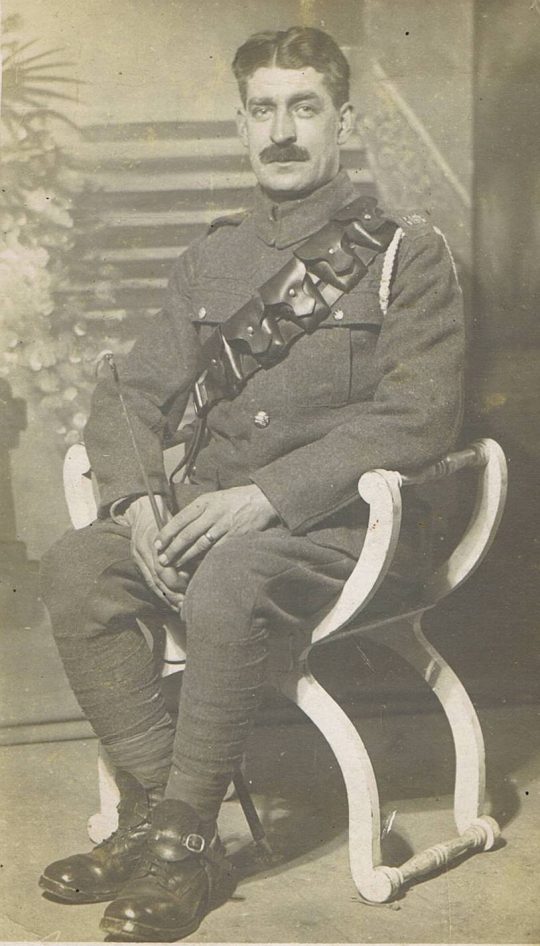
Peter Seaden-Jones visited us at a drop-in session at Richmond Station. From a photograph of his grandfather, we have managed to piece together the key details of Ernest John Pilcher’s war story. Ernest John Pilcher was born in Pietermaritzberg, Natal, South Africa in around 1881. According to the 1891 census, he appears to live in Chester as the 9 year old son of Frederick and Lucy Pilcher. He has a sister Edith and two brothers Archie and Arthur. His siblings are born in the U.K. but his father’s occupation as an Army Warrant Officer may explain Ernest’s birth in South Africa. On the 26th of December 1907 at the age of 26 he married Florence Alltimes at the Balham Hill Ascension church in Streatham. Florence was 23 years old at the time of their wedding. His occupation is recorded as a grocer. In the 1911 census Ernest and Florence were recorded as living at 23, Sussex street in Pimlico. He is listed as “Manager in the business of grocery stores”. Marjorie Edith their daughter was just 2 years old. At the age of 34 years and 6 months he enlisted in the army on the 22nd of November 1915. By this time his attestation record shows that he and Florence have a second daughter Peggy Dorothy born on the 6th of July 1913. Their address is now 20, Bellenden Road, Camberwell and his occupation is recorded as a “Traveller”. Although originally assigned to the Royal Field Artillery he transferred to…
Read moreRobert Baden Powell
July 17, 2018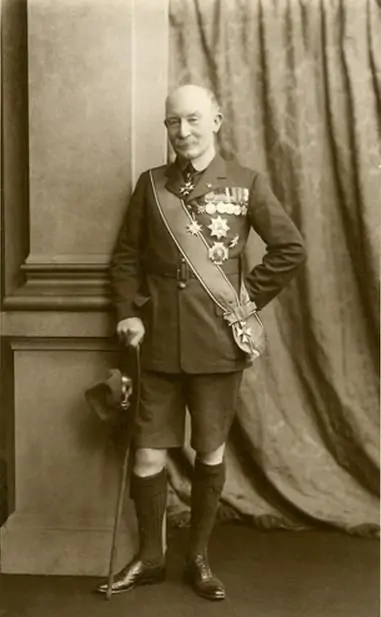
Submitted by Neil Duncan of the 8th Darlington (Cockerton Green) Scout Group. Lieutenant-General Robert Stephenson Smyth Baden-Powell, 1st Baron Baden-Powell, OM, GCMG, GCVO, KCB, DL was born in 1857 and had a long and illustrious military career, as well as having a profound impact on civilian life for generations of young people. Baden-Powell spent most of his military service in India and Africa where he honed his Scouting skills and began writing training manuals which would later be the basis for the Scouting Movement from 1908. One of his most famous commands was during the Seige of Mafeking in 1899 when a small garrison held out for 277 days and a ‘Cadet Force’ was drawn up take over small but important jobs to allow the adults to fight. These Cadets gain an honourable mention in the opening chapter of Scouting For Boys. He returned to England to take up a post as Inspector-General of Cavalry in 1903. From 1908-10 he was in command of the Northern Territorial Army. During this appointment, Baden-Powell selected the location of Catterick Garrison to replace Richmond Castle which was then the Headquarters of the Northumbrian Division. His plan was brought to fruition following the outbreak of the First World War. The original concept was for a temporary camp to accommodate 2 complete divisions, 40,000 single men in 2,000 huts. On the outbreak of World War I in 1914, at the age of fifty-seven, Baden-Powell put himself at the disposal of the War Office. Lord Kitchener…
Read moreDixon Overfield
July 17, 2018
Si Wheeler submitted the story of his great grandfather, Dixon Overfield, but it’s also a great example of the impact of war on all those connected to the soldier who served. “Dixon was married to Margaret and they had a daughter Madge, born in 1915. Dixon enlisted in Filey in September 1916. He originally joined the Royal Field Artillery but soon got transferred to the 6th Battalion, the Yorkshire Regiment. He was sent to France and saw action at Arras, before being moved to Belgium. Dixon survived this fight, but twelve days later he too was killed in action at the Battle of Poelcappelle on the 9th of October 1917 when a shell burst just above himself and several comrades. Their bodies were never recovered. Dixon is remembered on the Tyne Cot Memorial. Dixon’s wife died in 1924, leaving my grandmother, Madge, aged 9, an orphan. Raised by two aunts, then entering service at 13, Madge was taken under the wing of her housekeeper boss, Lizzie Andrew and became part of her extended family. Aged 18, Madge moved to London to train as a nurse, working through the Blitz and marrying a Dunkirk evacuee soldier, my granddad, Harry Wheeler. Harry didn’t mind where they settled to start married life, so they moved to Swanland in East Yorkshire, where Lizzie lived. My parents live there to this day.”
Read moreJoseph Hatton
July 17, 2018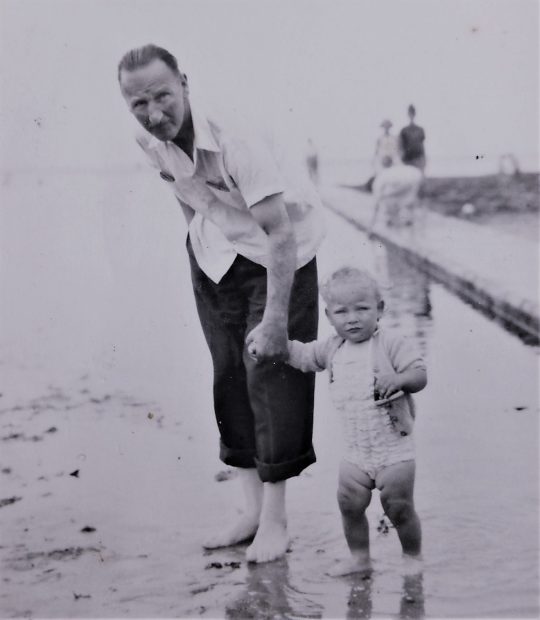
Submitted by Michael Kent. Joseph Hatton was my dad. I only recently learnt about his early life. Dad never spoke about the First World War. He was born 20 February 1896 in Bradford and had three sisters and two brothers. My dad never told me that grandad was a train driver in the 1890’s, or that I had a half brother born in 1915, that he lost his father in 1919 and his wife, when he was in his early twenties. I do not know what happened or where he went from 1922 until 1950 when he was living in London where I was born thirty years later, in 1952. 10724 Private Joseph Hatton was recruited in Yorkshire in August 1914 and served in the Duke of Wellington’s Regiment (3rd West Riding) as a Reserve. After training in England he was sent to the Western Front in 1915. In May of that year he was poisoned by gas. My dad didn’t die, unlike so many around him who suffered this cruel death, but he was evacuated via Boulogne to Manchester Western General Hospital to recover. He was posted again in December 1915. In March 1916 he was then posted to the 9th Battalion and embarked for France again in April. He had a few days leave in Etaples and then returned to the front. He was wounded in July 1916 by a shell explosion killing many men. Dad lost his hand. He was put on a train back to England….
Read morePhilip Baker
July 23, 2018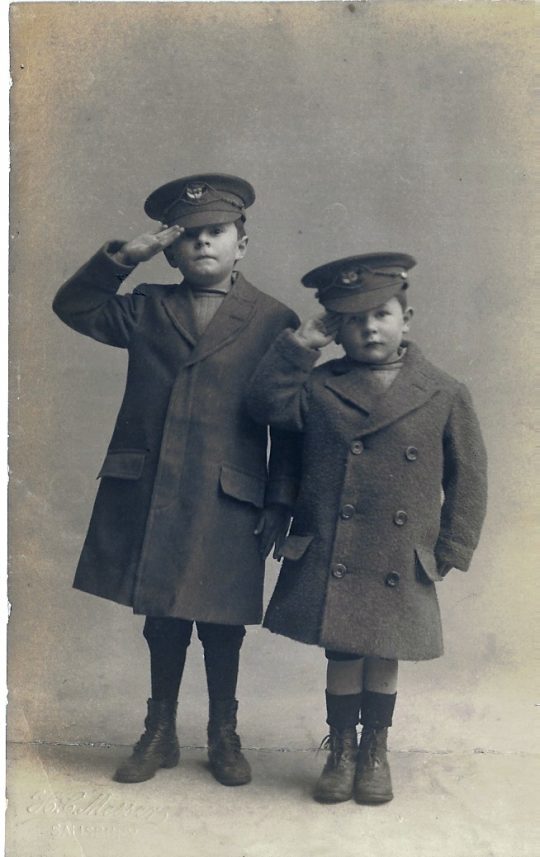
Marcia Howard submitted this photo of her father, Philip Baker (right) and her Uncle Leslie – both ready to defend King and Country in 1915. The story she has to tell connects the First and Second World Wars: “Philip my father and Uncle Leslie were the two youngest of the boys in their large family. With an ‘Army’ father in the Hampshire Regiment, it depended on his posting as to where each child was born. Uncle Leslie b.1907 was born in Bermuda, although by the time my dad arrived, they were back in England and he was born 1910 in Winchester. Older siblings had been born in various locations including County Cork, Aldershot and Hampshire. My grandfather Ernest Benjamin Baker was discovered to have haemophilia, a condition which eventually caused his demise, but with an Army Pension, was retained as an Army Messenger as far as I am aware. My grandfather, who died well before I was born, suffered a nose bleed after falling off his bike which caused him to bleed to death. From checking the National School Admission Register, Leslie went to St Thomas’s Higher Grade National/Service Church of England school in Winchester. I couldn’t find details of where my father Philip went to school, but I do recall him telling me during my early teenage years, that he had hated school, and one day had just walked out, never to return. It was a year before he was officially allowed to leave. Fortunately for him he was both…
Read moreArthur Bateman
July 23, 2018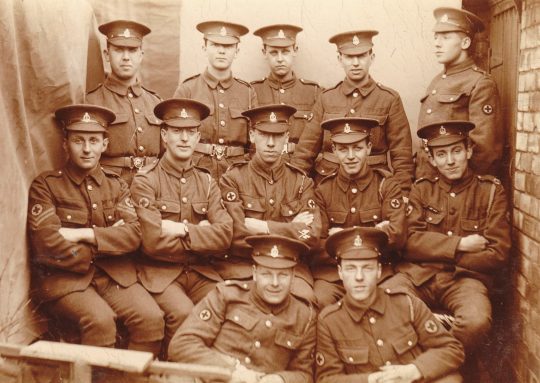
Submitted by Rachel Blenkinsop. Arthur Bateman (Rachel’s maternal grandfather) served with the Royal Army Medical Corps. The photograph of him with his peers shows that he qualified as a Signaller (seated in the centre of the group – a crossed flag badge on his left sleeve is evidence of his Signals qualification). He was based in Boulogne at the 83rd (Dublin) General Hospital. In addition to its role as a general hospital, the 83rd had three specialist units treating facial injuries, eye injuries and had a ‘physical medicine’ or rehabilitation unit established by the Red Cross. Electric shock treatment was used at the hospital – this was often seen as a way of attempting to treat the symptoms of shell shock, but was also used when trying to allieviate problems with limbs. In a handwritten poem by one of the patients, both the electric shock treatment and also Arthur Bateman’s artistic ability are drawn to the fore. The 83rd General Hospital was moved from Boulogne at the end of the conflict, but was re-established in the Rhur (part of the area occupied by Allied troops following the Armistice). Arthur’s photo album shows that he too was relocated to Langenfeld to help care for the men of the army of occupation. Phyllis Cawthra, who became Mrs Bateman in 1923 caught the Spanish ‘flu at the end of the war. While she survived, the infection caused her to suffer from deafness…
Read moreJohn Mattison
July 23, 2018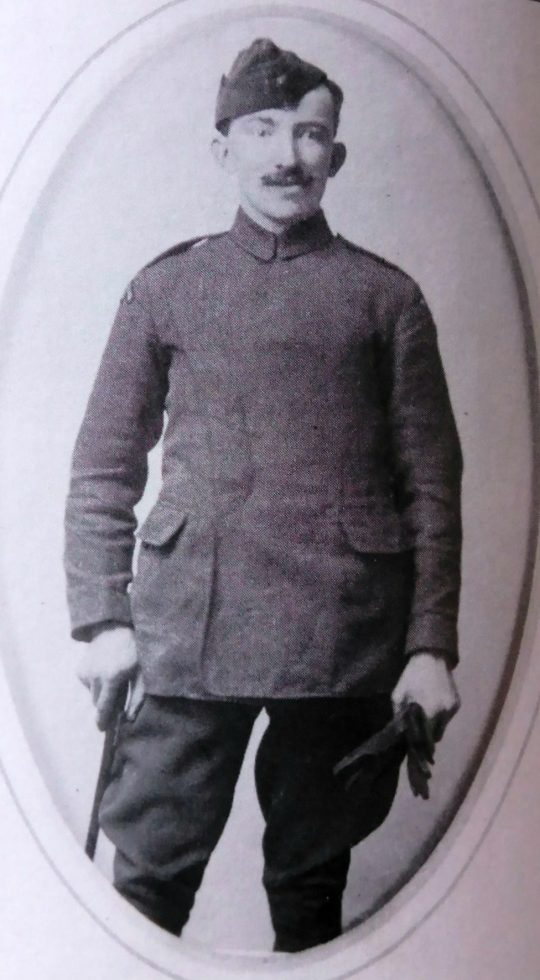
Alyson Swift contacted us through our website to tell us about her great grandfather, John Mattison. John was from Richmond and was called up on 10th May 1917, joining the Royal Flying Corps. While he may look very smart in what is known as his ‘Maternity’ pattern tunic and side cap, Alyson wanted to draw a different aspect of his role in the First World War to our attention: “He was an entertainer in the the camp concert party. He and his party won a talent contest at the Croydon Empire Theatre. He sang ‘the Laddies who fought and won’ and ‘keep right on to the End of the Road’ for which they won 20 pound!!”
Read moreSgt Percy Lelliott DCM
July 25, 2018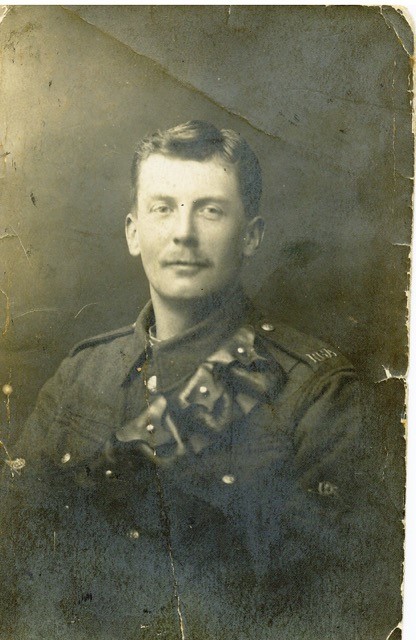
Submitted by Ron Taylor, “raised in Shute Road Catterick Camp, moved to Scotton and was schooled in Richmond before wandering around with the forces”……who wanted to tell us about his grandfather, Percy. Percy was born about 1891 in Brighton Sussex, and died 20 September 1967 aged 76. 68703 Bdr Percy Levi Lelliott, enlisted in the 119th Siege Battery, Royal Garrison Artillery, Sussex on 12 Dec 1915. He undertook initial training at Shorncliffe. His unit embarked for France on 5 June 1916, and he fought at the Battle of the Somme. Percy distinguished himself in the field on several occasions by bringing in wounded men under heavy gunfire, sometimes dragging them by his teeth. He was subsequently awarded the DCM. Discharged as Sgt (Acting BSM) 13 February 1919. Percy retired in 1946 after a long career in the Police Force. PC Lelliott received four Commendations from the Watch Committee and local magistrates, two of which referred to rescue operations at Fairlight and Ecclesbourne Cliffs. Retired, Grandpa Percy sat in his Windsor Chair, smoked his pipe and tended his greenhouse.
Read moreHenry Barningham Simpson
July 26, 2018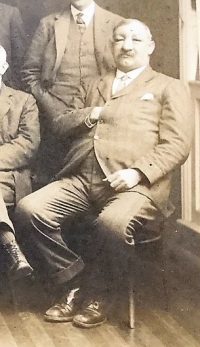
Alan Simpson, a resident of Richmond called into the musueum to tell us about his grandfather. After months of collecting stories from the time of the First World War for the Ribbon of Remembrance, we have our first story relating to our rural location. Henry Barningham Simpson farmed at High Rockliffe Farm Hurworth during the First World War. He was also given the role of official horse buyer to the War Department during the conflict. Alan Simpson recalled, “I know he had to travel to very many farms selecting the best of the cart horses to pull the guns and carts of the army. My dad told me that he hated having to take the farmers best and most useful horses. He knew very well that a lot would be killed or injured from the shelling, ‘blown to pieces’ were his actual words. I suppose he was given some leeway in selecting which horses to buy as food still had to be produced, how they were selected he never said but I suppose they had to be fit for purpose whether they be cart horses or hunters for the cavalry”. The requisitioning of horses during the First World War was dealt with by the Army Remount Service. This department existed before the conflict broke out, with a total establishment of 25,000 horses and mules, five Remount Depots and four Remount companies, with a strength of approximately 1,200 animals. Within 12 days, the establishment had been increased to 165,000 animals and…
Read more2nd Lt G H Smith
August 14, 2018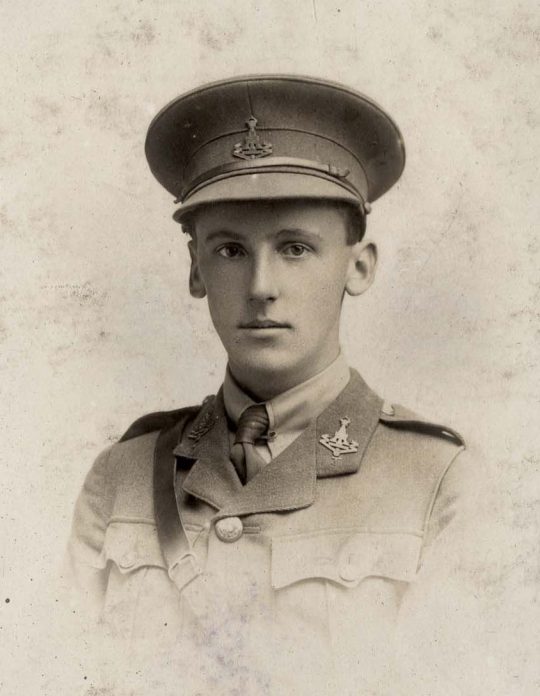
In October 1915 Geoffrey Howard Smith was commissioned as a 2nd Lieutenant in the 5th Battalion from being a member of the ranks of the Inns of Court Officer Training Corps (O.T.C.). At that time he was probably based at the O.T.C. training camp at Berkhamsted Common Hertfordshire. In August 1916 he is listed as wounded in France. He recovers from his wounds but in June 1918 he is listed as missing then confirmed as a prisoner of war in September 1918. Smith remained in captivity until his release and return to England in January 1919. This event is recognised by a letter sent to him from King George V.
Read more2nd Lt. Hadow
August 14, 2018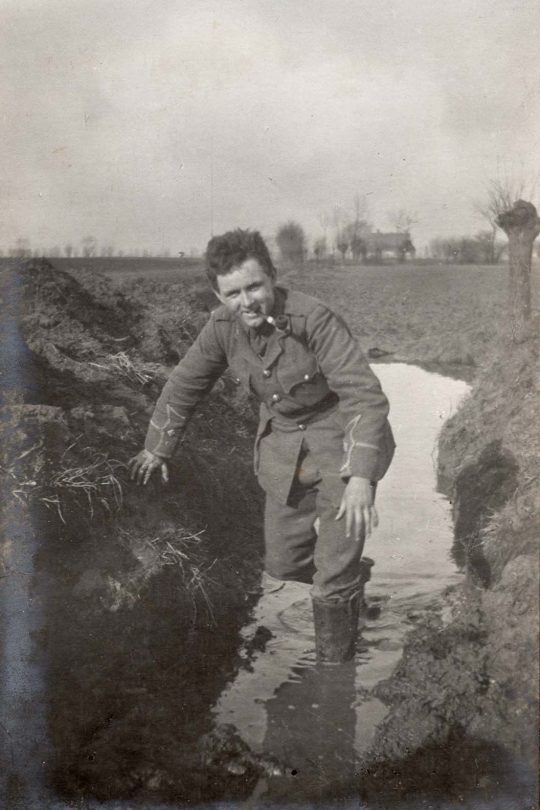
Gerald Francis Hadow was born in Scarborough in 1895, the son of Colonel A de S Hadow of the XIX Regiment of Foot (the Green Howards). He was commisioned as a Second Lieutenant on 15th August 1914 and promoted to Lieutenant in March 1915. His first actions were at the battles of neuve Chapelle and Festubert. His death at Givenchy on 15th June 1915 was recorded at the time: “He had reached the German barbed wire and finding he was practically alone, returned to his own trenches, which he reached untouched. Here he found his captain killed and all the other officers dead or wounded. His company went into action 180 strong and had 142 casualties. he returned to report to the C.O. and on the way, was struck on the head by a piece of shell. A captain under whom he served wrote; ‘I feel I have lost a young friend whom I had got to know and tested in perhaps the most severe time – war time – and he never failed. He was such a gallant little fellow and quite ready to die for the good cause.’”
Read more2nd Lt W Buckle
August 14, 2018
Information submitted by Mark Tovey, William Buckle is Mark’s wife’s great uncle. William Buckle was born in Middlesbrough. In 1914 he was a 21-year-old clerk working for a well-known Middlesbrough steel company. The war was 4 weeks old when he, like many other young men from North Yorkshire, went to Northallerton to join their local Territorial Army Battalion – 4th Battalion, The Yorkshire Regiment (4th Green Howards). On 16 April 1915, 4th Green Howards were ordered to Belgium. On 22nd April the German Fourth Army attacked the Allied front line in the North of the Ypres Salient and, using poison gas for the first time, threatened Ypres itself. This was a crisis and, despite their inexperience, 4th Green Howards went straight to the fight. For the next month the Yorkshiremen were in almost continual action, suffering many casualties. Private William Buckle was one of the Battalion’s 200 casualties. He had been shot twice, in the right shoulder and hip. He spent the next 2 months recovering before, as a corporal, training Green Howard recruits in Northallerton. Surprisingly, after his wounds healed, he volunteered for one of the most dangerous jobs in the Army – as a platoon commander. After a 4½ month course at an Officer Cadet Battalion at Denham, Buckinghamshire, Buckle was granted a commission as a Temporary Second Lieutenant in July 1916. The following month he was posted to 8th Green Howards. Buckle served on the Somme through the fierce battles of that summer and autumn until his…
Read moreAlbert Norris
August 14, 2018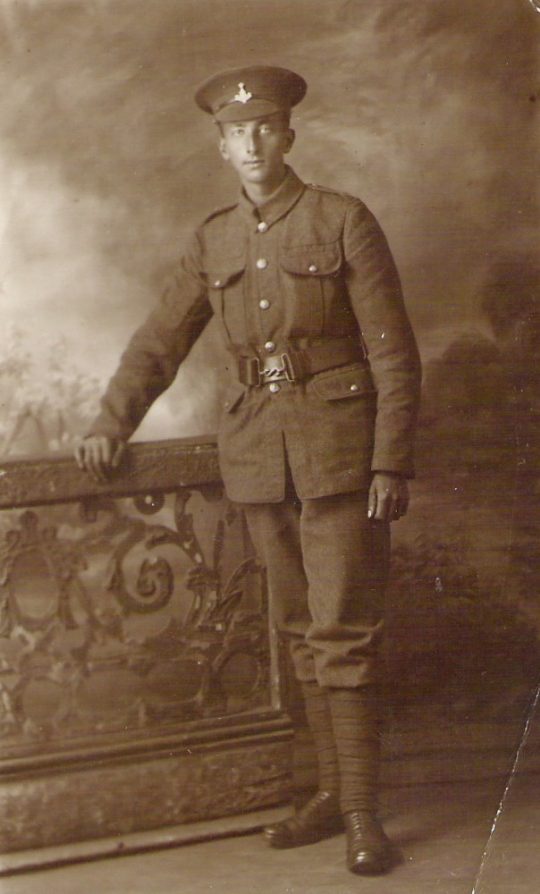
265990 Private Albert Norris served in the Yorkshire Regiment, joining up sometime after January 1915. For his service during the First World War he was awarded the British War Medal and Victory Medal. He was transferred to the Royal Munster Fusiliers and served at the garrison in Cork. Following the war, he ran a Draper’s shop in Tonbridge, Kent. In 1924 He married Myra Donovan. Albert’s step granddaughter is Dame Kelly Holmes, double Olympic Champion.
Read moreCaptain Amis
August 14, 2018
Submitted by Robert Amis. Captain Henry Amis (Robert’s grandfather) was commissioned into the 5th Battalion of the Yorkshire Regiment as a 2nd Lieutenant on 12 March 1915, Henry Amis transferred to the Royal Flying Corps. Family legend has it that 2Lt Amis was prone to crashing, which may account for his transfer back to the Yorkshire Regiment. The then Captain Amis was again serving with the 5th Battalion when on 28 October 1917 he was wounded and evacuated, suffering from the effects of mustard gas. Once he had recovered, he returned to the front line where he faced Germany’s final throw of the dice, the so called ‘Kaiser’s battle’ which was unleashed on 21 March 1918. Henry and the 5th battalion were in the thick of the fighting; trying to hold back the German advance. On 27 May 1918 he, along with 24 other officers and 638 Other Ranks, was declared missing. Amongst the papers donated to the museum by Robert is the diary of Captain Amis’ girlfriend, Dorothy Beckton. On 10 June 1918 she wrote… ‘Telegram saying my H G missing. I felt a sort of stunned at first…A horrible time of despondency, but there is really no need. I think my darling boy is almost sure to be a prisoner in Germany. It is rather heavy waiting but as soon as I can hear that he is safe, will be alright. And we shall be able to make up afterwards. I hope they will treat the dear old…
Read moreHarry Binks
August 14, 2018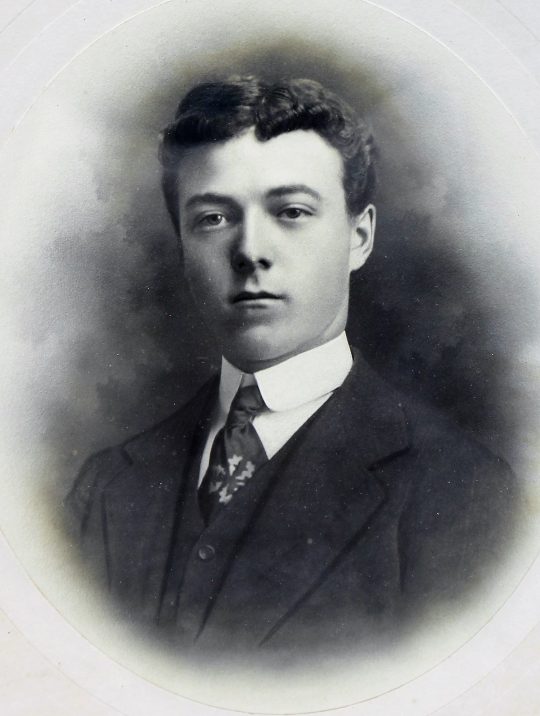
Story from Harry Binks, via Val Slater of Coverdale. Harry was named after his father, whose story is outlined below. My father, Harry Binks, was born at Highfield in Carlton on 11 September 1893, a short while before his twin brother Thomas. The 1901 Census recorded the family still at Highfield where my grandfather Thomas was farming, but shortly afterwards they moved to Lane House on the edge of the village. Harry went to Horsehouse school. In 1911 the family was living at Lilac Farm (House) – now Abbots Thorn – but Harry was not at home. He would have been working away as a farm labourer in Kettlewell; however he has not been found on the Census. On 11 December 1915 Harry enlisted at Leyburn. His address was Lilac House, Carlton and next of kin his mother Elizabeth Binks – his father having died in 1912. Harry’s occupation was farm hand. He was assigned to the Yorkshire Regiment – “The Green Howards” – and posted to France in October 1916, fighting at the Western Front until April 1917. Harry returned to France in September 1917 where the main focus was the Third Battle of Ypres, including the infamous Battle of Passchendaele. In December Harry was injured by gun shot wounds to his right thigh. After treatment he was deemed no longer physically fit for war service and discharged to the reserve in June 1918. At the end of the war Harry was in the Slough area where a number…
Read moreCaptain John Maughan
August 14, 2018
John was born on the 4th January 1890 at East Witton in North Yorkshire and was the eldest son of John and Annie Maughan. They lived at Abbey Hill, a large house overlooking Jervaulx Abbey near Middleham, North Yorkshire. John senior was the agent for the Jervaulx estate. John was educated at Marlborough College. He was gazetted to a commission in the 4th Battalion, The Yorkshire Regiment in 1909 and was promoted Captain on the 3rd November 1914. John went to France in April 1915 and was in action at the 2nd Battle of Ypres just a few days later. His distinguished service during this action resulted in him being ‘Mentioned in Dispatches’ by Sir John French. On the 12th February 1916 the Battalion occupied trenches around Hill 60 near Ypres. Work was ongoing repairing trenches when on the 14th February the Germans began to bombard them. The enemy also exploded a mine which killed thirteen men. On the 17th February, ironically regarded as a relatively quiet day, some minor shelling resulted in John being hit and killed by shrapnel. Captain John Maughan was buried in Poperinghe New Military Cemetery. John’s name is commemorated on the War Memorial at East Witton.
Read moreHugh Levin
August 14, 2018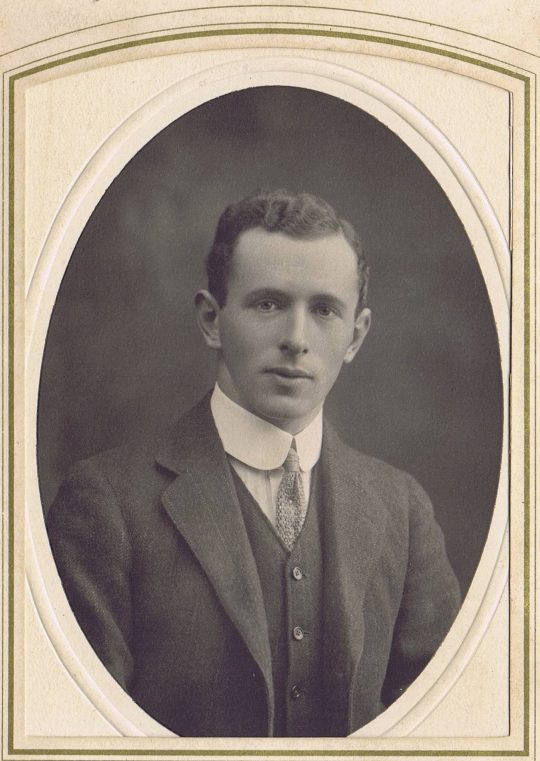
Born in York, 16th of January 1886, the son of Major H L M Levin, 19th Foot (the Green Howards). Commissioned as Second Lieutenant on 28th of January 1905 and promoted to Lieutenant on the 3rd of October 1906. He became a Captain prior to the First World War on 23 April 1913. In the First World War 1914-18 he went to Belgium with the 2nd Batallion. Was severely wounded at Gheluvelt, 29th of October 1914 by a shrapnel shell. His life was saved by the silver lucifer box (match case) he carried in his brest pocket. For the remainder of the War was employed on the staff at home. He retired in March 1921, but was recalled in September 1939 with the outbreak of World War II. He was awarded the rank of Honorary Lieutenant Colonel and an OBE for his service. The photograph of his fellow 2nd Battalion officers is remarkable in that of the 26 Officers pictured in October 1914, 10 were dead by the end of the year, 3 more were killed subsequently, 10 were wounded and / or taken prisoner, and only 3 appear to have survived the War unscathed.
Read moreElsie Maud Inglis
August 14, 2018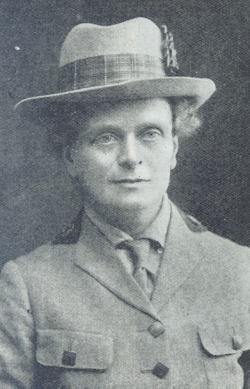
Elsie was born on the 16th August 1864 at Naini Tal in India. Her father John Forbes David Inglis was a chief commissioner in the Indian Civil Service. She was one of six siblings. Her father retired in 1876 and after a two year period in Tasmania, where two of her eldest brothers had settled, returned to Edinburgh. Fortunately for Elsie her father considered education for his daughter just as important as for a son. It was in Edinburgh, and then Glasgow, that Elsie studied medicine, something that was unusual and difficult for a woman to achieve. However she passed the requisite exams in 1892 and took up the position of house surgeon at a new hospital for women in Euston Road London. She was also an ardent supporter of women’s suffrage. Elsie returned to practice in Edinburgh and studied for further medical degrees at the University of Edinburgh graduating MB, CM in 1899. She now dedicated her life to her work, including the founding of a nursing home and maternity centre, and the suffrage movement. When war broke out in 1914 Elsie visited the War Office to offer her services. At the time the war was perceived to be short affair, and consequently Elsie received the historic remark: ‘My dear lady go home and sit still’. The remark became famous amongst British nurses working in Serbia. Whilst working under terrible conditions they would ask as to what was their next task. The answer, received with much amusement, would be…
Read moreEwen George Sinclair-Maclagan
August 15, 2018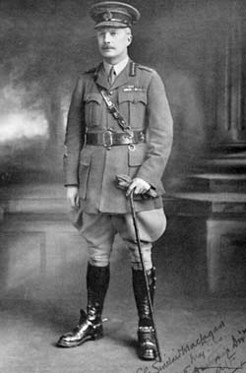
Ewen George Sinclair-Maclagan was born on the 24th December 1868 in Edinburgh. He was educated at the United Services College, Westward Ho! North Devon and commissioned as 2nd Lieutenant in the Border Regiment in 1898. He served in India, including the expedition to Waziristan in 1894-5, and was promoted Captain in 1898. He saw action in the 2nd Boer War (1899-1902) as an Adjutant in the 1st Battalion Border Regiment. He was severely wounded at Spion Kop, mentioned in dispatches and received the Distinguished Service Order. In 1901 he was posted to Australia when their Army was being organised, being appointed Adjutant to the New South Wales Scottish Rifles. On the 29th January 1902 he married Edith Kathleen, daughter of Major General Sir George French, at St’ Andrew’s Anglican Cathedral in Sydney. They would have one daughter. In 1904 Maclagan resumed regimental duty in Britain. Promoted Major in 1908 he then transferred to the Yorkshire Regiment. In 1910 Major General Sir William Bridges, who had known Maclagan in Australia, was recruiting for staff for the Royal Military College in Duntroon, Canberra. He made Maclagan director of drill with the rank of Lieutenant-Colonel. When Bridges raised the 1st Division Australian Imperial Force (AIF) he chose Maclagan to command the 3rd Infantry Brigade. On the 25th April 1915 landed at Gallipoli. A ridge leading from Anzac Cove is named after him. He would stay on the peninsula until evacuated sick in August 1915. He did not return to his Brigade in Egypt…
Read moreGeorge Butterworth
August 15, 2018
At the outbreak of the First World War, George Butterworth was being described as the most promising British composer of his day. George was born in Paddington, London in 1885 but at the age of six moved to Yorkshire when his father became first solicitor and then General Manager of the North Eastern Railway Company. George inherited his mother’s talent for music (she was a professional singer before her marriage). His parents sent him to Aysgarth Preparatory School, near Bedale where he played the organ during school services. His musical ability led to him gaining an Organ Scholarship to Eton College. He initally entered Trinity College, Oxford with the intention of studying law, but this idea was abandoned as he became increasingly interested in setting down the folk music of the British Isles. At the outbreak of the First World War, George enlisted in the Duke of Cornwall’s Light Infantry and was later granted a commission in the Durham Light Infantry. He was on active service for almost a year and awarded the Military Cross in 1917. The citation states that he had commanded the Company when the Captain was wounded ‘with great ability and coolness … and total disregard of personal safety’. Less than a month later, on Saturday 5 August, he was shot through the head by a German sniper in ‘Munster Alley’. Only a day later, William Short of the 8th Battalion, Yorkshire Regiment undertook the action which led to his posthumous Victoria Cross in the same…
Read moreJ W Horn
August 15, 2018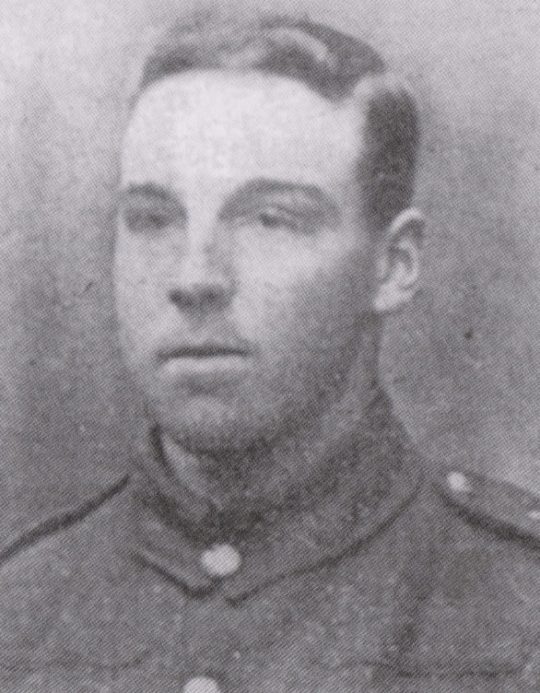
John was born in 1896 in Leyburn North Yorkshire. In 1900 the family moved to Burtersett near Hawes where John’s father Jeremiah worked as a stonemason at the local quarry. John had two younger brothers, Anthony and George. On leaving school John also worked at the quarry. In February 1916 he had married a local girl, Jane Ann Dinsdale. By the time of his wedding John was with the 4th Battalion The Yorkshire Regiment, having enlisted at Askrigg in October 1915. John embarked for France in April 1916. The Battalion would not take part in the Somme offensive until September 15th with the eventual plan for the 26th was for the Battalion to attack and capture German trenches running from Flers. It was during the German counter attack that the Battalion suffered heavy casualties, one of which was John. His body was never found and it wasn’t until early 1917 that his wife Jane was officially notified that her husband had been killed. By the time of his death Jane had given birth to a child. Private John William Horn’s name is commemorated on the Thiepval Memorial.
Read moreJohn O’Hern
August 15, 2018
John O’Hern is buried in Reeth Road cemetery, Richmond. He died of his wounds after the end of the First World War on 1 February 1919. He entered into service at the age of 29 years and 9 months while living at Mill Lane in Richmond. He worked at the paper mill and had also previously served in the 4th Territorial Battalion of the Yorkshire Regiment. His medal card shows his original regimental number (1669) and also his later number (200238) – as the 4th Battalion issued new nubmers in 1917. He was tried by Court Martial at Baizeiux on 9 October for being drunk on parade – after 6 days confinement he paid a 10 shilling fine. The card shows that not only did he receive the three well known medals nicknamed ‘Pip, Squeak and Wilfred’ – so called after a cartoon strip in the Daily Mirror, but also a Silver War badge due to his injuries towards the end of the war. Owing to a terrible gunshot wound to the spine, John O’Hern became paralysed. A bullet was removed from his spine through surgery in April 1918, but he died as a result of this battlefield injury months later.
Read moreK R Henderson
August 15, 2018
Kenneth Henderson was born on the 29th May 1895 at Sutton in Surrey, the third and youngest child of Robert and Janie Henderson. His father was a bank manager. The family were quite reasonably well off as the 1911 census shows the family having 3 servants. By this time Kenneth was at Charterhouse School. His early life is undocumented. On the outbreak of WW1 Kenneth enlisted in the 28th Battalion, The London Regiment (Artists’ Rifles). This was a popular unit for volunteers and a number would be selected to be officers in other Regiments, as Kenneth would be. On the 26th October he landed in France with the Artists’ Rifles and on the 15th March 1915 was made temporary 2nd Lieutenant with the 2nd Battalion, Yorkshire Regiment. During 1915 he saw action with the 2nd Battalion at Fromelles, Festuber and Givenchy. On the 7th July 1916 during the Somme offensive he received his fourth wound of the war. After the war he was with the newly reconstituted 6th Battalion, Yorkshire Regiment, for service in the Russian Archangel campaign. It was here that he received the Military Cross. The London Gazette of the 21st January 1919 read: ‘He has carried out the duties of a Company Commander of a mixed force at Bolshe-Ozerki and has worked in a very efficient way. He has had continuous service on this front since November 1918 and in four engagements in which his company has taken part he has proved to be a fearless and…
Read moreMarguerite McArthur
August 15, 2018
Marguerite was born on the 25th March 1892 in Kensington London. From an early age she had a love of books. She attended Norland Place School in Notting Hill. It was soon apparent that she was academically gifted. She also excelled at sport, especially Hockey. During the war years she became Honorary Secretary of the Norland School Old Girls Association. Marguerite left school in 1908 and went on to higher education attaining First Class honours at the Cambridge Higher Local with a distinction in history. In 1910 she went to Dresden in Germany to study culminating in First Class Honours again with a distinction in spoken German. She was also fluent in French. In January 1911 went to Canada in what was a combines holiday/studying venture. October of that year would see her entering Clough Hall Newham College Cambridge to study further in the German language, again attaining First Class honours. At the outbreak of war Marguerite was employed by the Young Men’s Christian Society (YMCA). The Society had been established in London in 1844 as a prayer and bible study group. At the outbreak of war it turned their attention to providing support for servicemen. In November 1914, working with the BEF, it established centres in France. By 1918 there were over 300 centres. Marguerite would find herself working in the War Office Translation Bureau because of her language skills. From March 1918 Marguerite was part of the Army Education Service of the YMCA at Etaples on the northern…
Read moreNellie Spindler
August 15, 2018
Nellie Spindler was born in Wakefield in September 1891. Nellie was her actual Christian name, being baptised on the 11th November 1891. In 1911 Nellie was a hospital nurse at the City Fever Hospital in Wakefield and from 1912 to 1915 was working at the Township Infirmary, Leeds. From November 1915 until May 1917 she was a staff nurse at Whittington Military Hospital in Litchfield. Nellie then worked as a Staff Nurse with the Queen Alexandra’s Imperial Military Nursing Service, which had been formed in 1902 from the Army Nursing Service of 1881. From May 1917 she was a staff nurse at Stationary Hospital in Abbeville, France. Neillie also worked as a staff nurse in No. 44 Casualty Clearing Station, a British evacuation hospital located at Brandhoek, a small hamlet near Poperinghe in Belgium. It had a high mortality rate as No 44 CCS was closer to the front line than most and also close to a railway line and munitions dump. It was shelled often as the enemy tried to destroy the rail network thus preventing more munitions reaching the front line. On the 31st July 1917 the Third Battle of Ypres began. On that day alone a total of 6869 casualties were registered in the four Casualty Clearing Stations and surgeons carried out 582 operations. On Tuesday, 21st August, 1917 the hospital was shelled and at 11 o’clock in the morning Nellie was hit by shrapnel. She became unconscious immediately and although tended by her fellow nurses she…
Read moreOlive Yeates
August 15, 2018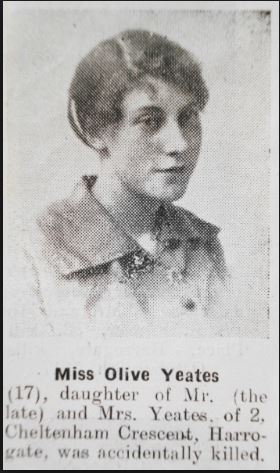
Olive was born on the 29th August 1899 in Harrogate. The 1911 census shows Olive living at home with parents George and Miriam, and baby brother George (aged 1). Other than she would gain employment at Barnbow Munitions Factory little is known of her life. Barnbow Munitions Factory, at Crossgates Leeds, was one of the new purpose built munitions factories to meet the demand for shells and ammunition. The factory was operational by December 1915, so it would have probably been around that time or shortly after that Olive started work there. It was a huge complex and at peak output was employing about 16,000 workers. The local train station was extended and would bring in workers from the surrounding towns and villages. It even had a farm producing 300 gallons of milk per day, with employees receiving a free daily milk ration. Munitions work was dangerous. Barnbow ran 3 shifts a day and involved hard manual work involving the use of heavy machinery. Most of the workforce was women and young girls, attracted by the high wages on offer. Conditions at the factory were very hot, the raw materials toxic which would turn their skin and hair yellow in a short time. This led to the nickname ‘The Barnbow Canaries’. The uniforms offered inadequate protection against the dust which could prove deadly if settling in the lungs, even though masks were provided. Olive worked in Room 42, as one of about 170 workers, where the fully loaded shells were…
Read moreCaptain Robert Murray
August 15, 2018
Robert Henry Murray lived with his family lived at West Cottage, Richmond. He was educated at Richmond Grammar School, and attended Selwyn College, Cambridge – rowing in the college boat at the Henley Regatta immediately before the outbreak of war. He was commissioned as a Second Lieutenant in the Yorkshire Regiment on 8th October 1914, but was quickly promoted to Captain on the 3rd of December 1914. Attached to the Royal Munster Fusiliers, he was Mentioned in Despatches while at Gallipoli. Captain Murray was killed while attending to a wounded man of his Company on the fire-step of his trench. Captain Murray fell in action on 7th July 1916 and is buried at Philosophe British Cemetery, Mazingarbe, Departement du Pas-de-Calais.
Read moreThomas Walton
August 15, 2018
Thomas was born around 1894 in Appleby Westmorland and settled in Hawes before the Great War. He married a local girl and had a family of 4 young children. He was a good footballer and played in goal for Hawes Football Club for many years in local leagues. He was also a member of the Hawes Conservative Club billiards team and secretary of the Hawes Brass Band. When he enlisted in 1914 Thomas was the first married man from Hawes to join up. Thomas joined the 6th Battalion The Yorkshire Regiment and saw action in the latter stages of the 1915 Dardanelles campaign and in February 1916 they were in Egypt. The Battalion embarked for France arriving at Marseilles on July 1st and then travelled to billets in Arras taking over trenches at Agny. In September 1916 they were entrenched in Thiepval area where on the 14th they encountered severe fighting resulting in heavy losses for the 6th Battalion, five officers and 130 men dead. One of the dead was Thomas, killed instantly by shellfire. At the time of his death Thomas had the rank of Corporal. His body was recovered and he is buried at Lonsdale cemetery, just north of Albert.
Read moreWilfred Whitfield
August 15, 2018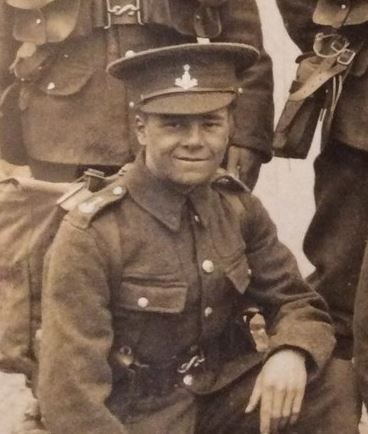
Wilfred was born in March 1896 in Marske by the Sea near Redcar on the East coast. When he was young his family moved to Middlesbrough where his father worked in the steelworks. Wilfred was training as a draughtsman when war broke out. Wilfred was just 5’ 2’’ tall, an inch shorter that the regulation height. But due to the great manpower losses he eventually got his chance in early 1915 when recruitment standards were somewhat relaxed. He enlisted in the 4th Battalion. It was in November of 1916 in the latter stages of the Somme offensive that the work party that Wilfred had volunteered for came under fire. On his way back to his own lines he was caught by a shell explosion. He was taken to a hospital at Abbeville where his left arm was amputated. Back in England Wilfred had to adjust to life without a limb. He was classed as ‘incurably unemployable’ and found it impossible to get a job. He used his time to study employment law and became a ceaseless campaigner for better conditions of his fellow jobless war wounded. He would continue to do so even when after he eventually gained employment. He was instrumental in establishing one of the first branches of BLESMA (British Limbless Ex-Servicemen’s Association) in Teesside. He married Elsie and his daughter Sylvia was born in 1932. However, his fifty cigarettes a day habit for most of his life would take their toll. He died of lung cancer in…
Read moreWilliam Hird
August 19, 2018
William Hird was nominated for the Ribbon of Remembrance by Dianne Evans, and his story illustrates a problem that can occur with records that are a century old. Thanks to the original 1914-16 enlistment leger at the Green Howards Museum, we can say with some confidence that William enlisted on 10th December 1914 in the City of Durham and that he was posted to the 3rd Battalion, based at West Hartlepool on 18th January 1915. According to his medal card 18390 Acting Lance Corporal William Hird served in France from 19th September 1915, and was entitled to the 1915 Star, the British War Medal and the Victory Medal. William is recorded on the ‘Soldiers died in the Great War 1914-1919’ database as having died on 29 September 1916 as a Private in the 7th Battalion of the Yorkshire Regiment. This might have been the case, but on examining the battalion war diary, the 7th Battalion were away from the frontline in training and there are no records of any deaths that day. Of course soliders would often die from wounds days after an offensive, however the Green Howards Gazzette for December 1916 records that 18390 W Hird was Killed in Action – there is a separate list for those who Died of Wounds. On further investigation, the Register of Soldier’s Effects lists William as being in the 6th Battalion when he was killed in action in France. The war diary of 6th battalion recounts the attempted assault on ‘Stuff Redoubt’…
Read moreCpl W G Padden
August 20, 2018
Anthea Dunne dropped into the museum with a photo of her father (pictured in the centre of the group), and after a little research she has managed to piece together the story of his service during the First World War. William George Samuel Padden was my father from Pontnewydd, near Newport, Monmouthshire, he volunteered and enlisted at Carmarthen in west Wales on 9th October 1914, as part of The Pembrokeshire Yeomanry, the Territorial Force. As a Private in the Pembroke Yeomanry, he was given the regimental number 4390. Although not compelled to, he signed up as willing to serve overseas. He was transfered to 210 Company of the Machine Gun Corps (part of the 4th Dismounted Brigade) on 22nd October 1916 and given the new regimental number 74792. Initially a private in the Machine Gun Corps, he later became a corporal (29th May 1918). In April 1916 he sailed for Alexandria as part of the 4th Dismounted Brigade, fought in Egypt, stationed at Wadi El Natrun for 2 years. By 1917 this brigade had become part of The Welsh Regiment. By May 1918 he was fighting on the Western front in France. He was wounded on September 25th 1918 and sent home to a military hospital in Reading with a fractured right femur. He was finally discharged from hospital on May 3rd 1919 with a 40% degree of disablement and a pension of 12 shillings a week [with a temporary bonus of 20%]. He received a Silver War Badge in…
Read moreEdmund Staveley
August 26, 2018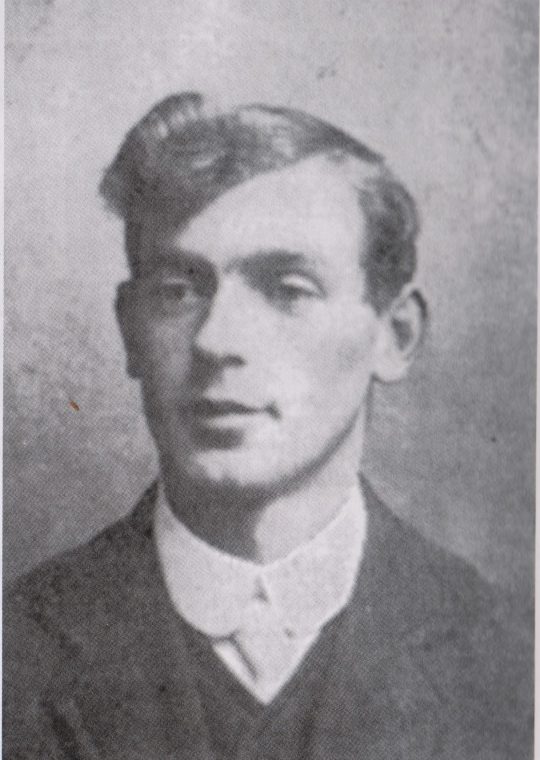
Edmund was born around 1885. Little is known of Edmund’s early life. In 1901 the sixteen year old Edmund was living at Park House, the Gayle home of a local solicitor called Simon Willan. Edmund worked there as an office boy. By the beginning of the war Edmund was married to Agnes Waggett and had a son, William, and a daughter, Nora. By then Edmund was employed in helping to run Strands Farm at Simonstone near Hardraw. Edmund enlisted at Leyburn joining the 9th Battalion Yorkshire Regiment. Private Edmund Staveley was killed on the 9th June 1917 during The Battle of Messines. He was 32 years old. He is buried in the Military Cemetery at Poperinge. Edmund’s brother, Lister, had already been killed the previous year during the Somme offensive.
Read moreFred Shaw
August 26, 2018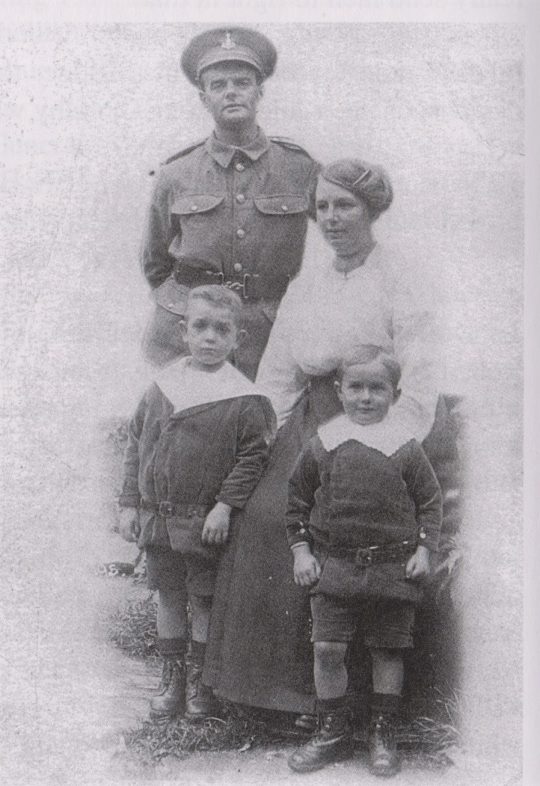
Fred, the fourth child of five to Ned and Ann Shaw, was born around 1884 at Slaithwaite near Huddersfield. His father Ned was a railway signal man and part time photographer. Two of Fred’s brothers would emigrate to Canada before the Great War began. Fred trained as a journeyman tailor and travelled to seek employment. Whilst in the Hawes district he met and married a girl from Hawes, Mary Elizabeth Blades, in November 1909. Fred enlisted in Hawes in June 1916, joining the 9th Battalion Yorkshire Regiment. Fred went to France in September 1916. Private Fred Shaw was killed on the first day of The Battle of Messines on the 7th June 1917 aged 33. Fred’s body was never found and his name is commemorated on the Menin Gate at Ypres. Sadly, just four and a half months after his father died, their son Jimmy died aged 5.
Read moreFred Sheilds
August 26, 2018
Fred was the youngest son of Joseph Shields, a Castle Bolton plumber and tinsmith. He was born around 1897. The 1911 census shows the family as having 3 children, Alice, 28, Joseph, 26, and Fred, 14, with his wife Elizabeth. They lived in a section of Bolton Castle, acting as caretakers, with Elizabeth providing refreshments for visitors. They also had a tinsmith’s shop in a building across from the castle making kettles and pans etc. which today is a storeroom. Fred enlisted at Northallerton on the 7th December 1915 and joined the 8th Battalion Yorkshire Regiment. Early in July 1917 Fred arrived with a detachment of men at Steenvoorde in northern France adjacent the Belgium border in the area west of Ypres. It was during the 3rd Battle of Ypres, better known as Passchendaele, that Private Fred Kilding Shields was killed. A shell burst in the trench where Fred and 3 others died, He was just 21 years old. Fred is buried at Tyne Cot Cemetery.
Read moreJohn Pattern
August 26, 2018
John was born in Leeds on the 31st July 1892. He was the eldest of five children. The family obviously moved round the country a lot as the 3rd youngest child was born in Liverpool and the two youngest children were born in Nottingham. John’s father originated from Norfolk, his mother from Hawnby in the North York moors. At some point the family settled in Great Yarmouth, the 1911 census giving an address as 86 Churchill Road. It was in Great Yarmouth that John married Dora (Dolly) Mary McQueen in September 1924. By 1939 they were living in Richmond, John’s occupation being a Secondary School Master, with Dora doing unpaid domestic duties. There does not appear to be a record of any offspring. John was obviously heavily involved with the town of Richmond and the people as he served as town mayor in 1957/8. John died on the 23rd November 1982 aged 90. At the time of his death he was living at 8 Gilling Road. During WW1 John served as a pilot, with the rank of Captain, in the Royal Flying Corps. John had joined the 10th Squadron RFC at Abeele, an airfield near Ypres Belgium, in May 1917. The 10th had been formed at Farnborough on the 1st January 1915. In April 1918 it would be re-designated the 10th Squadron RAF. Initially John flew De Havilland BE2s, a 2 seat biplane until the Squadron was re-equipped with Armstrong Whitworth FK8s, general purpose biplanes with a synchronised Vickers machine…
Read moreLt Turnbull
August 26, 2018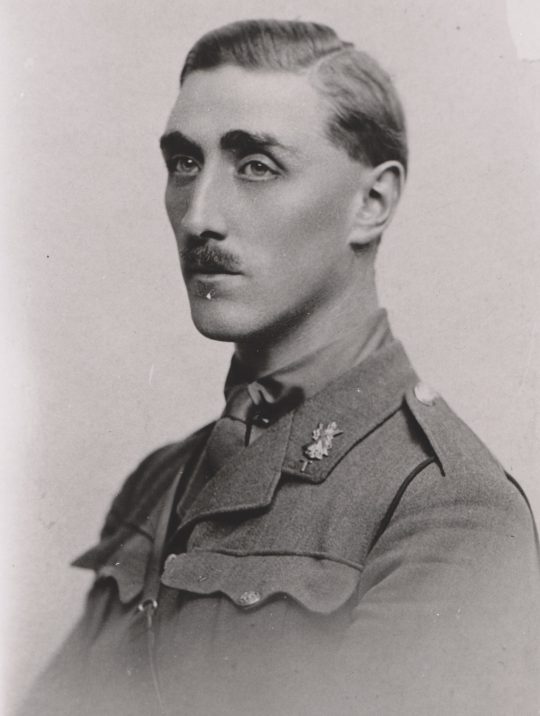
Sumbitted by John Young. My great uncle David Stevens Gibson Turnbull, the elder brother of my grandmother, was born in Edinburgh on 7th September 1890. Educated at The Edinburgh Academy and Uppingham School he went on to Edinburgh University. There he learned to fly, although he did not qualify as a pilot at that stage. He married early in 1914 and emigrated to Australia where he planned to start life in Harvey, West Australia, as a fruit farmer. However, following the outbreak of war on 4th August 1914, he returned to Scotland to fight for his country. Initially he joined the Black Watch as the family had strong connections with my home town of Auchterarder in Perthshire. He was posted to 3/6th Battalion one of the sister battalions to that in which his brother-in-law (Major TE Young) was already serving. However, he had the flying bug and on 25th March 1916 he joined the Royal Flying Corps. He initially trained as an Observer but after a short period with No3 squadron RFC in France he returned to train as a pilot. He gained his pilot’s licence at Shoreham on 5th June 1916. He joined No 10 Squadron RFC, equipped with BE 2c aircraft, on 8th July 1916 and a few days later made his first operational sortie. He flew on operations for the next 7 months; engaged in artillery spotting, light bombing and aerial photography. Having survived this operational tour he was posted back to England for duty as a…
Read moreThomas Outhwaite
August 26, 2018
The Outhwaite family came to live in Stalling Busk in the Raydaleside area near Bainbridge in the 1730s to farm the land. Thomas’s father William had married Eleanor Pickard, a girl from Newbiggin near Aysgarth. They later lived for a time at Ingleton in the Dales where Thomas was born in 1880. Thomas would be one of 6 children. Shortly after 1880 they moved back to Stalling Busk. Thomas’s father eventually became the gamekeeper on the estate of Colonel Percy Williams, MP, of Raydale Grange. In 1905 Thomas’s brother William took over the Rope works in Hawes, which still operates today under the Outhwaite name. By now Thomas had married Gertrude Sherrington, a girl from Tunstall near Catterick and was working with his father on the Raydale Estate. Thomas enlisted in 1915 joining the 9th Battalion Yorkshire Regiment. It was during The Battle of Messines in June 1917 that on the 19th Private Thomas Pickard Outhwaite was wounded, he died of his wounds later that day. He is buried at the Military Cemetery in Poperinge.
Read moreArthur Dobson
August 31, 2018
Submitted by Paul Elliott. Many people will, no doubt, have the same experience as myself, in that my grandparents and parents never discussed or talked about their war experiences. Arthur Dobson was a Great Uncle of whom I was totally unaware. He was born in 1896 and lived with his parents, Benjamin and Emily at Commercial Street, Rothwell, Leeds. He was a miner. He joined the Kings Own Yorkshire Light infantry as 37722 Private Dobson and went to France in September 1915 with the 9th Battalion. They were active at the Battle of the Somme and Arthur was posted as missing in September 1916. His parents twice put appeals for information about him in the Yorkshire Evening Post. He was eventually found to have been killed in action on September 16th 1916. He is commemorated on Rothwell war memorial and at Thiepval. He was 20 when he died.
Read moreEdwin Scriminger
August 31, 2018
Submitted by Paul Elliott. My maternal grandfather, Edwin Scriminger, was born in 1892 and worked as a bricklayer living in the Leeds suburb of Meanwood. He joined the West Yorkshire Regiment in early 1915 and went to France. He became a Lewis gunner and, unfortunately, in 1916, a casualty, when he was hit in the lung by a bullet. Invalided from the front line to a casualty clearing station, he was sent to hospitals in Colchester and Stourbridge. On his eventual recovery he was sent to the Northumberland Fusiliers where he became a mess servant. In 1918 he was transferred to the Durham Light Infantry and sent to Archangel on the North Russia expedition. Like the majority of those sent to Russia he was not considered physically fit enough to be sent back to France. The DLI were used principally for guard duties, although some of his notes describe the subduing of a mutiny by Croat troops. After demobilisation in 1919 he returned to the building industry, eventually becoming a manager in a house building company. He died of cancer in 1972, aged 81. His service numbers were: 24904 West Yorkshire Regiment. 41631 Northumberland Fusiliers. 24th Batt. 78110 Durham Light Infantry. 2/7th Batt.
Read moreGeorge Dobson
August 31, 2018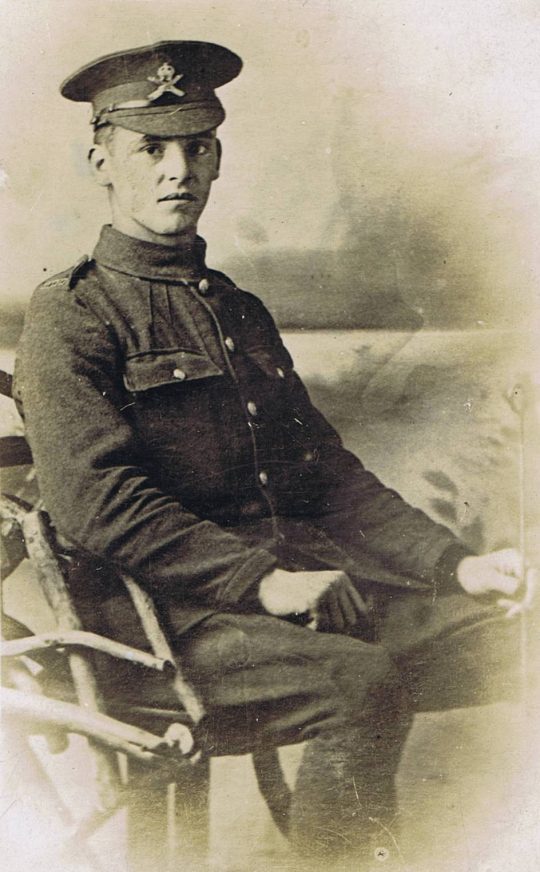
Submitted by Paul Elliott. George was a Great Uncle, the younger brother of my paternal Grandmother. I had no knowledge of his existence until recently. He lived in Church Street, Rothwell, Leeds, was married in December 1914 to Jane Ann Ambler and worked as a miner. He joined the Kings Own Yorkshire Light Infantry (regimental number 25522) in September 1915 at Pontefract. He was transferred to the Machine Gun Corps (35672) in December 1915 and went to France in May 1916 with the 40th Company. He is one of the people whose Full Service Record survives. It shows that he had two sons, Alan born in 1915, and George born in March 1917. He died of wounds in April 1918 having served in France and Belgium. He is not commemorated on the Rothwell War Memorial. He was buried at Outtersteene Communal Cemetery Extension, Bailleul. His wife received a pension of 25 shillings and 3 pence a week and inherited £1- 6s with a gratuity of £11-10s. He appeared on the Yorkshire Evening Post Roll of Honour on 4th May 1918, described as a driver and having died of wounds.
Read moreJack Charlton
August 31, 2018
Sergeant John (Jack) Charlton joined the Army as a Territorial in 1908 when he enlisted in the 4th Battalion, Alexandra, Princess of Wales’ Own Yorkshire Regiment (The Green Howards). He served on the Western Front from April 1915 where he had a distinguished career, earning a Distinguished Conduct Medal and being Mentioned in Despatches in 1917. One particular act stands out from his memoirs which earned him a commendation from his Commanding Officer was while serving at the Arras Front while he was in charge of Battalion communications. After heavy shelling cut phone lines he used a Lucas Day Light Signalling Lamp to request an artillery barrage to defend the HQ from German gas shells. This Lamp was donated to the Museum and can be seen on display. Jack also suffered injuries during his service, firstly in April 1915 when he was gassed at Zillibeck and another, more serious gas attack got him sent home towards the end of 1917 where he remained for the rest of the War. While on Leave in 1916 Jack got engaged to Phillis Blow but they didn’t get married until 1918 after we was sent home. During 1918 he attended various training courses including a Signals Course at the Armoury School near Dunstable but before he was able to finish the Armistice was signed and so he was demobbed at Hornsea.
Read moreJohn Mitton
August 31, 2018
John was born in October 1876, the eldest son of Warrin and Ellen Mitton of Hawes. His father Warrin was both a joiner and a farmer. John married a girl from the Leyburn area, Mary Teresa, in July 1905 and had two daughters. Before joining the Army he spent four years as a postman in Raydaleside and previous to that, for about 14 years, a rural postman at Finghall near Leyburn. It was while he was there he got married. On leaving Finghall the people on his round presented him with a marble clock, pipe and a pouch containing some money. Needless to say he was a very well liked postman! He played for Hawes football team for many years, and for two years the club secretary. He was a fine billiards player and a member of Hawes Church choir. John was described as a cheery likeable chap. John enlisted at Leyburn joining the 2nd Battalion Yorkshire Regiment and embarked for France at the end of July 1916. On April 7th 1917 the Battalion readied itself for the Arras Offensive which was due to start on the 9th. Private John Mitton was killed on that opening day. He was 40 years old. John is buried in the Neuville-Vitasse Road Cemetary, SE of Arras.
Read moreJoseph Allen
August 31, 2018
Joseph (third from left) was born around 1884 in Ainderby Steeple near Northallerton in North Yorkshire. He was the eldest of five children to Thomas and Amelia. He would eventually end up living at East Witton where he worked on the Jervaulx estate. He married Agnes Kendray and they would have three children. Joseph was a fine athlete as witnessed on Coronation Day June 22nd 1911. In the fell race to the top of Witton Fell and back Joseph came first. His exploits were published in the parish magazine. Joseph enlisted at Middleham joining the 7th Battalion Yorkshire Regiment. The Battalion embarked for France on the 13th July 1915. It was during operations in February 1917 in an area of the Somme that heavy German artillery would take a heavy toll. A shell destroyed a cellar being used to house stretcher cases killing most of the men. One of those reported missing was Private Joseph Allen. His body was never found. Joseph’s name is commemorating on the Thiepval Memorial. A service was held at East Witton Church on the 3rd March. Tragically, one month after the service, Joseph’s widow Agnes died, aged 33, leaving three young orphans.
Read moreNorton Elliott
August 31, 2018
Submitted by Paul Elliott. My grandfather, Norton Elliott, was born in Rothwell, near Leeds, in 1890 and worked as a miner. In August 1914, at the outbreak of was, he joined the RAMC, but transferred to the RFC in July 1915. He became a mechanic and was promoted to Sergeant in August 1916 and to Flight Sergeant and Chief Mechanic in 1918. He subsequently became a specialist driver and served in the RAF until 1923. He married Evelyne Dobson in 1919. I know nothing of where he served or in which squadrons. At the outbreak of World War 2 he ran away from home to re-join the RAF at the age of 49. My grandmother was reputed to be something of a dragon. He again achieved the rank of Flight Sergeant and served until 1944. He died of cancer in 1970 at the age of 79.
Read moreReginald Howes
August 31, 2018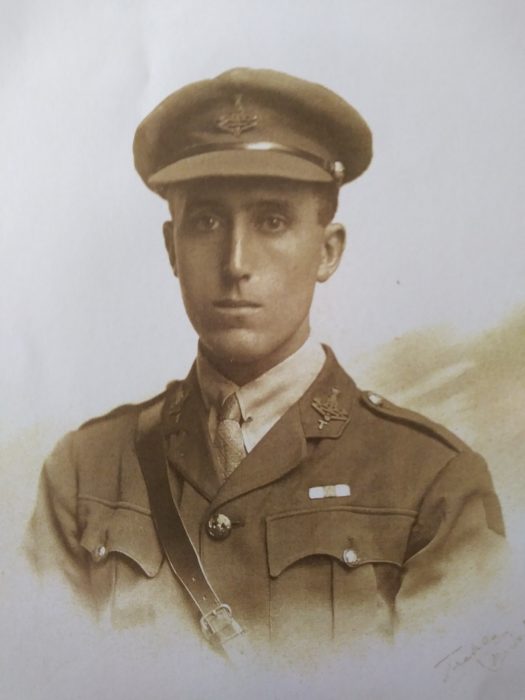
Ruth Kendon came into the museum and told us the story of her father, Reginald Howes. Reginald Howes (1889-1977) attended the University of London Officer Training Corps (OTC) between 6 May 1915 and 20 July 1916 before being commissioned as a 2nd Lieutenant in the Yorkshire Regiment on 21 July 1916. He served with the 4th Battalion as temporary Adjutant and Intelligence Officer, and was wounded on 15 September 1916 at Kemmel, just south of Ypres. Ruth remembers him saying he was wounded on the day tanks were first used. Howes was awarded the Military Cross in March 1918, for “conspicuous gallantry and devotion to duty” on the Somme, during the Kaiserschlacht offensive and promoted to Captain the following month. He was taken prisoner on 27 May 1918 and released on 14 December 1918. Ruth kindly donated a number of items which belonged to her father to the museum for safekeeping.
Read moreSamuel Kirk Lambert
August 31, 2018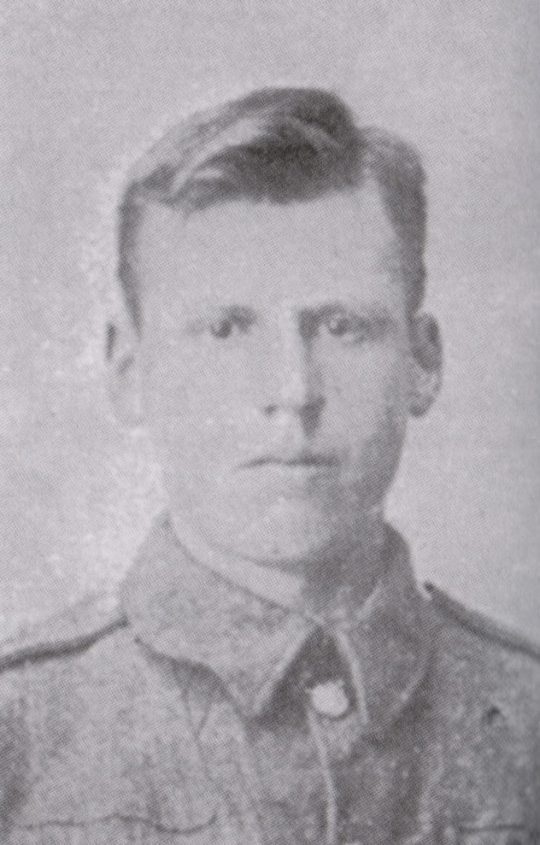
Samuel was born in 1894 at Askrigg. His mother, Frances, was 20 years old and single. However, 5 years later she married Wilfred Kirk, the likely father of Samuel though the 1911 census has Samuel down as a ‘stepson’. Wilfred was some 20 years senior to Frances and a farmer. They would have four more children, all girls. However, the 1911 census only shows two daughters as being listed. Samuel attended Hardraw School and worked on the family farm. Samuel enlisted at Leyburn in June 1916 joining the 6th Battalion Yorkshire Regiment. The Battalion went to France later that year. On November 1st 1917 the Battalion was in the support line SE of Loos in northern France. Between the 4th and the 6th work was spent on improving the Battalion trenches. On the 9th Samuel and his colleagues were helping in the preparations for a raid, cutting wire and ladder placements. On the evening of the 9th during heavy shelling Samuel was badly wounded. He was taken to a Casualty Clearing Station near Bethune. On the night of the 12th November Private Samuel Kirk Lambert died. He is buried in Choques Military Cemetery.
Read moreWilliam Helmsley
August 31, 2018
William was born in 1897 in the village of Thoralby, near Aysgarth, in the North Yorkshire Dales. Birth registrations show he was born in the first quarter of that year. He was the youngest son of farmer John and his wife Alice, living at Town Head Farm. The 1901 census shows he had two older brothers, Ralph 10 and John Hunter 7, and a sister Elizabeth 9. However, the 1911 census only shows William, and by that time his mother was a widow at 42. Also at the time, three boarders lodged at the farm. William attended the local school and in his teens became a valued member of Aysgarth Amateur Dramatic Society. At the outbreak of war, aged 17, he enlisted in the 10th Battalion Yorkshire Regiment. He went to France in October 1915. By the onset of the 3rd Battle of Ypres in 1917 William was now a Corporal. It was during this offensive on the 3rd October that the 10th Battalion was involved in an action on Broodseinde ridge. It was during the heavy shelling on the 4th that William was killed. His body was never found. William is commemorated on a panel at the Tyne Cot Cemetery. He was just 19 years of age when he died.
Read moreWilliam Rutley
August 31, 2018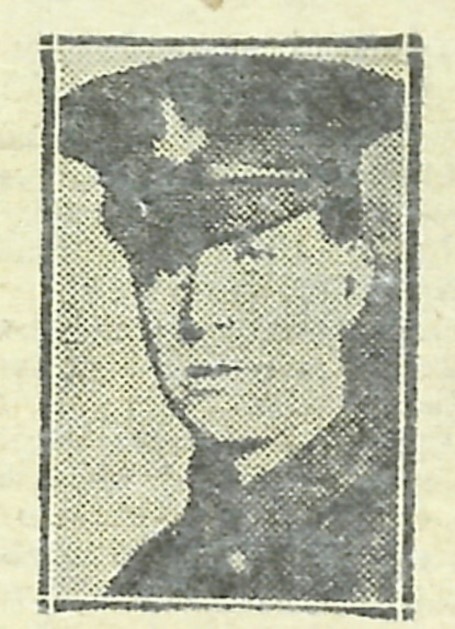
William was the son of William and Mary Rutley of 8 Mabal Street, Middlesbrough. He enlisted in late 1914 and was posted to the 8th Battalion of the Yorkshire Regiment. The 8th Battalion left for France in late August 1915 and occupied trenches in the La Rolanderie and Bois-Greniers districts throughout October, November and December. William is reported to have died of wounds on December 16th. He was 22 years of age. He was awarded the 1915 Star, the British War Medal and the Victory Medal. He was buried at Sailly-sur-la Lys Canadian Cemetery, Pas-de-Calais.
Read moreJohn William Lodge
September 1, 2018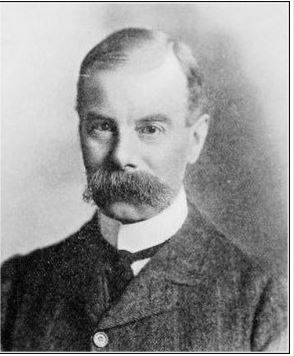
John was born on the 8th August 1855, the only son of Robert and Mary Lodge of The Rookery Bishopdale near Aysgarth. He was educated at St. Peter’s School, York and Gonville and Caius College, Cambridge. He graduated MA in 1879 and was called to the Bar at the Inner Temple, London in 1883. At 18, John had joined the 5th West York Militia, which became the 3rd Battalion Yorkshire Regiment in 1881. He would serve with the battalion in the 2nd Boer War (1899-1902). The Aysgarth parish magazine of June 1902 reported on his return from two years’ active service. “A large and enthusiastic crowd met him at the station, the West Burton Band playing appropriate airs. After much hand shaking and cheering, Mr Tomlinson in an admirable speech welcomed Colonel Lodge back to Wensleydale… After Colonel Lodge replied, giving a most interesting sketch of what he had had to do in South Africa, the band headed the procession from the station, Colonel Lodge riding in a wagonette with his sisters.” From 1906 until retirement in 1912 he would be the Battalion Commander. At the outbreak of the First World War, John offered his services and returned to his old Battalion as Major, remaining with it until May 5th 1916 when he was appointed to the command of a Garrison Battalion. As Squire of Bishopdale, Colonel Lodge was a Justice of the Peace for the North Riding and was on the Yorkshire Fisheries Board. He was a skilled angler…
Read moreEdward Barker
September 5, 2018
Edward was the Great Uncle of Robert Raw and Margaret Hird, who visited the museum during one of our Ribbon of Remembrance drop-in days. Edward, born in Richmond (he lived for at time along Frenchgate and then at 3 Maison Dieu) worked as a plumber for the North Eastern Railway, and enlisted after the outbreak of war in York. He became a Private in the 17th (Service) Battalion (NER Pioneers), a group whose skills were vital in constructing and maintaining the railways that developed behind the lines which kept the troops equiped and fed for the duration of the war. Edward was killed on 2nd November 1917, during the period where the battalion were working on light railways in the Ypres sector and suffered from shrapnel and gas shelling as well as high-explosives. Edward Barker is buried in Bard Cottage Cemetery, Belgium.
Read moreWalter G Barker
September 5, 2018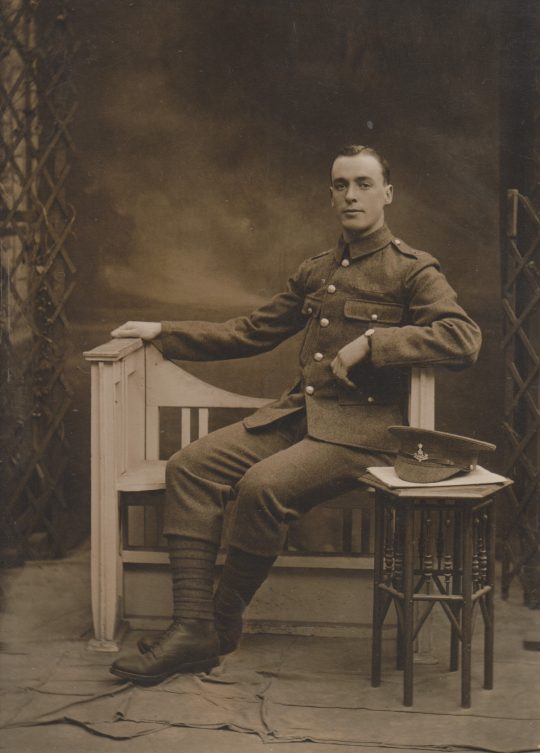
Walter Gorner Barker was born in Richmond on 2 August 1889. For a time he lived with his family at 71 Frenchgate. He worked as a footman for Sir Mark Sykes at the family seat, Sledmere House near Driffield. Sykes was Commanding Officer of the 5th (Territorial) Battalion of the Yorkshire Regiment before the war. It seems that Walter may have served as a territorial soldier before the war (he has a low early regimental number 2274 which is then revised later to 240643). He enlisted at Scarborough and became a Private in the 5th battalion. Walter died on 27 May 1918, south of Craonnne. Prior to this, the battalion war diary records several days as ‘day quiet in trenches’ before the ominous entry for 26th May – ‘”Stood to” at night owing to information received that enemy attack was to be delivered on morning of 27th May’. The diary records that the bombardment began at 1 am with the enemy attacking at 4.30am. The battle lasted for four days. Walter Gorner Barker is commemorated on the Soissons Memorial in France.
Read morePrivate George W Kidson MM
September 5, 2018
Margaret Carrigan visited the museum on a recent drop-in day, to tell the story of her father, 38026 Private George W Kidson of C Company, 9th Battalion Yorkshire Regiment. He enlisted in Richmond in May 1916 – but was told to return home until his call up papers arrived, which they duly did on 5th September 1916. George spent two weeks at the Depot in Richmond and then went to Hartlepool for training. One memorable incident during the night of 29th November occurred when George was on guard duty – a German Zeppelin was brought down. The war really began for George when he arrived at Canada Trench near Ypres – he recalled, “In the trenches each night we were told what to do, I was told to stand on the Fire Step. While I was there at night about 7 Germans walked past me, so near they could have picked me up, if they had seen me. I said to the Serg, “should I fire?”, he said no – not to give the position away.” Later in the year he saw action at Polygon Wood. “On Sunday 30th September we were rushed back, where a German prisoner gave himself up. He told us that the Germans were coming the next day – October 1st. I shall always remember Polygon Wood. Come they did on the Monday. Our Platoon were firing for all they were worth. My rifle was muddy, and the bolt would not work, so I took out…
Read moreAlfred W Salmon
September 5, 2018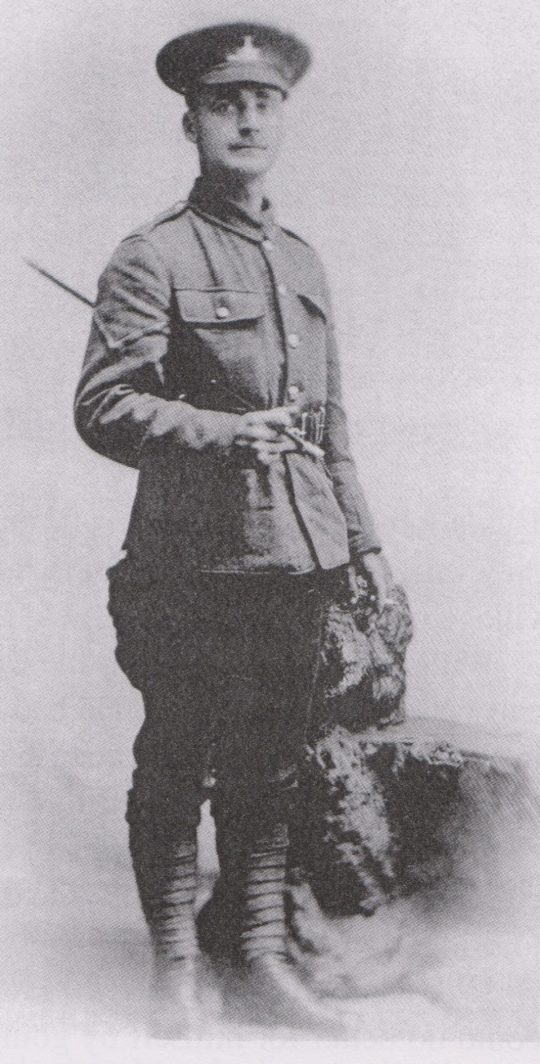
Alfred was born around June 1882 at Thornaby near Stockton, the son of Thomas Salmon, a foreman brewer. Alfred would eventually become an assistant grocer at Leyburn. Here he courted Lizzie Chiltern. Lizzie’s brother James had joined the West Yorkshire Regiment and was killed in June 1917 aged 20. It would appear that they never married as Alfred’s attestation form, when he signed up, has him as unmarried. The 1911 census has Alfred living in Leyburn as a boarder to a widow Catherine Pearson, aged 70. He enlisted on the 8th April 1916 at Leyburn joining the 5th Battalion Yorkshire Regiment. By early 1917 Alfred had been wounded and was to spend the rest of 1917 and part of 1918 convalescing in England. He was discharged from the Army on the 15th April 1918, his rank being Lance Corporal. Alfred was now living in Waverley Terrace, Darlington. It was here that he died from pneumonia, exacerbated by his war wounds on the 16th February 1919 aged 36. Alfred was buried in Darlington West Cemetery.
Read moreL Cpl Thomas M Coates
September 5, 2018
Thomas was born around 1883 to George and Margaret Coates. George was a farm worker. By 1901 the family was living at Marsett in Raydaleside where Thomas and his two brothers, George and Albert were born. The children attended Stalling Busk School. On leaving school Thomas worked in the Council Offices in Hawes. Thomas enlisted on the 6th October 1915 joining the 4th Battalion Yorkshire Regiment. Thomas would gain the rank of Lance Corporal. On the 26th September 1916 during the latter part of the Somme offensive Thomas won the Military Medal for bravery in the field. However, he was severely wounded. On an attack of a German trench a soldier threw a stick bomb which exploded at Thomas’s feet whereby he received serious wounds to his leg and face. Despite this he still managed to dispatch the German soldier with his bayonet and in doing so saved a colleague. Thomas spent 11 weeks at a hospital at Rouen where he underwent four operations. Two more operations followed in England before he was discharged from the Army on the 14th July 1917. Thomas eventually went back to his old job until he married Elizabeth Watson in 1921. They then went to live at The Heugh, a large isolated house above Nappa Scar near Settle in the Yorkshire Dales. They ran it as a guest house, and it was here that their two daughters, Margaret and Mary, were born. On the 21st January 1925, after only three day’s illness, Thomas died…
Read moreAlbany D Scott
September 5, 2018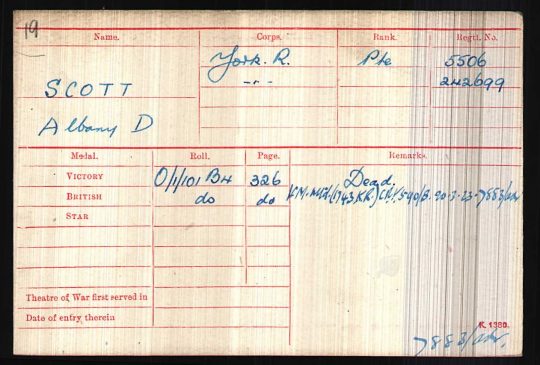
Albany was born on the 18th April 1882 to Robert Scott and Elizabeth Bridgwood in Bradford, Yorkshire and was 32 years old when war broke out. He was married to his wife Mary Ascough, had two young children, son Kenneth and daughter Olive. He had a job as an estate gardener and lived in a tied cottage in Snainton, Yorkshire. He enlisted in Scarborough and it is unclear why he joined the war effort with the Territorial Force but it was said he was not a drinker and had numerous Temperance Medals to prove so! He began his military career as a member of the Territorial Force with the service number 5506. His medal roll adds that he was in both the 6th and then the 5th Battalions of the Yorkshire Regiment, before he was transferred into the 2nd Battalion Yorkshire Regiment in 1916, with a new service number of 242699, possibly first seeing action at the southern end of the British Somme offensive line and at the battle of Transloy Ridges, in October 1916. During this time period he came home wounded, was allowed to recuperate, and once he was fit, he returned back to the front line in early 1917. During the German Spring Offensive of 1918, the Germans grouped in thick fog and overran the trenches where Albany was fighting and took him, along with many others, prisoner on March 22nd. Unfortunately a shell exploded nearby and captors and captured alike were killed. He was 4 weeks…
Read moreHarold Binks
September 5, 2018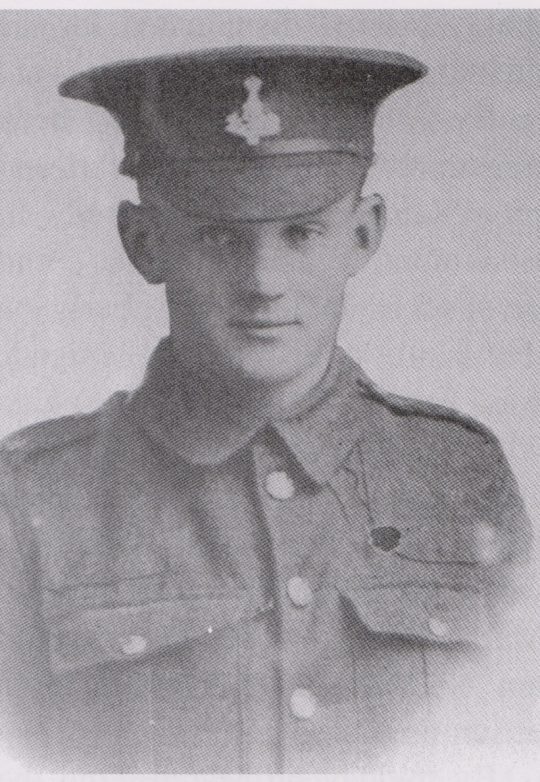
Harold was born in 1894 in Well, a small hamlet to the east of Masham in North Yorkshire. He was the eldest of five children of Thomas and Elizabeth Binks. Thomas had also been born in Well, whereas Elizabeth was from Thornton Watlass near Bedale. Thomas was employed as a gamekeeper on the nearby estate of Snape Park. Harold enlisted in Leyburn in 1915 and joined the 13th Battalion Yorkshire Regiment. The Battalion mobilised and arrived in France on June 6th 1916. The Battalion went into the front line near Loos and would see action at The Battle of Ancre on the Somme. In 1917 they saw action during the German retreat to the Hindenburg Line and at the Battle of Cambrai. March 21st 1918 saw the start of the German Spring Offensive. At the action between Arras and Bapaume on the 22nd March Private Harold Binks was killed. His body was never recovered. He is commemorated on the Arras Memorial. He was 23 years of age.
Read moreJoseph D Raw MM
September 5, 2018
Joseph was born around 1897 in Aysgarth North Yorkshire. His father James was a cowman on a local farm. The 1911 census shows one other child, a son Simon. Before joining up Joseph was employed as a farm hand in West Burton. Joseph enlisted at Leyburn joining the 2nd Battalion Yorkshire Regiment. By September 1916 he was at the front. Joseph would prove to be a brave soldier, twice being recommended for distinction. He was finally rewarded at the end of April 1918 when he received the Military Medal for gallantry he had shown during the action in the St. Quentin area from March 21st to the 28th. Sadly one week later he was dead. On the 6th May the Battalion was in the Ypres Salient. During heavy engagements with the enemy he was killed on the 8th May. He was 21 years of age. His body was never recovered. Private Joseph Dixon Raw MM is commemorated at the Tyne Cot Cemetery.
Read moreSergeant William James Denton Milson D.C.M.
September 18, 2018
Sergeant William James Denton Milson 7813 D.C.M. 2nd Battalion Yorkshire Regiment. This story was submitted by Andrew Hume Voegeli. Serjeant Milson was the brother of his maternal grandmother Lily Muriel Boyes (nee Milson) born in Beverley in 1896. William James Denton Milson was born on the 1st of February 1890 in the Parish of St Mary’s Beverley Yorkshire. He was the eldest of 6 children, his father was William Carr Milson and his mother was Ann Maria Milson, nee Cooper. His father was a boot maker but did serve in several regiments including the Yorkshire Regiment. Young William enlisted in the Yorkshire Regiment aged 14 years and 7 months on the 24th of August 1904 as a drummer boy. He was 4 feet 11 inches tall, had a fair complexion, grey eyes and light brown hair. He was working as a message boy at that time. Before the outbreak of World War 1 he served in India. On the 6th of October 1914 he landed at Zeebrugge and took part in the 1st Battle of Ypres. By 1915 his leadership skills led to his promotion to Serjeant. On the 15th of March 1915 he was awarded the Distinguished Conduct Medal (D.C.M.) for leading a rescue party for men trapped under continuous sniper fire. The Yorkshire regiment gazette recorded this as follows: “D.C.M.s have been awarded to Sergt Milsom, Cpl Wilson and Pte Howard for their work when the Boche’s mine was exploded at Givenchy on the 29th of November. The…
Read moreSapper Joseph William Colling
September 25, 2018
William Colling – Sunderland Joseph William Colling was the father of Brenda Crinall of Little Crakehall, who called in at the museum with a friend who wanted to contribute a story to the Ribbon of Rememberance. Brenda didn’t really know a great deal about her father’s participation in the war, but was interested when we offered to take a look and see if any records still existed from that time. As fortune would have it, her father’s service record was available to see and so we were able to piece together some of his experiences from the time of the First World War. Before enlisting Colling worked as a sorting clerk and telegraphist for the G.P.O. in Sunderland. Prior to going to German East Africa (G.E.A.) in 1916 he served for 13 months in France. Some of the most dangerous activities he undertook was to lay cables as close to the enemy lines as possible. These cables were essential for information and orders to be relayed to and from the battlefront. In 1916 the German plan for war in G.E.A. was to divert Allied forces away from the Western Front in Europe. Colling sailed from Devonport on the 8th of February 1916 and he arrived in Durban on the 6th of March.On the 14th of March he arrived at Kildini inlet near Mombassa. Over the next few months he and his comrades came under heavy attack several times as they advanced south towards German forces.This included fierce action near Kilosa….
Read moreDuncan Harvie
September 26, 2018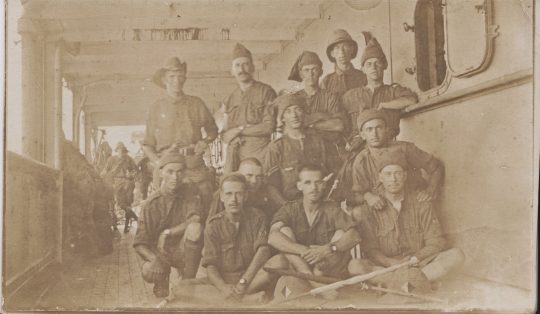
Vicki Walker of Little Crakehall called into the museum to show us a photograph of Duncan Harvie, her grandfather. The photo is a postcard addressed to ‘Mary and Sam’, sent on 3 April 1916 and shows a group of Signallers on board HMS Laconia. Duncan Harvie (5th South African Regiment) is sat at the front of the group with crossed legs. The ship’s log shows the Laconia (an armed merchant cruiser) to be anchored at Zanzibar on that date, on it’s way to British East Africa (now Kenya). The ship was used in the early part of the war to patrol the South Atlantic and the Indian Ocean, but in April 1915 her role changed and she was used as a headquarters ship to aid in the fight in German East Africa. Following her return to to Cunard, the Laconia was sunk by U-50 160 miles northwest of Fastnet while returning form the United States on 25th February 1917. Twelve people were killed following a double torpedo strike.
Read morePrivate George Brown
October 2, 2018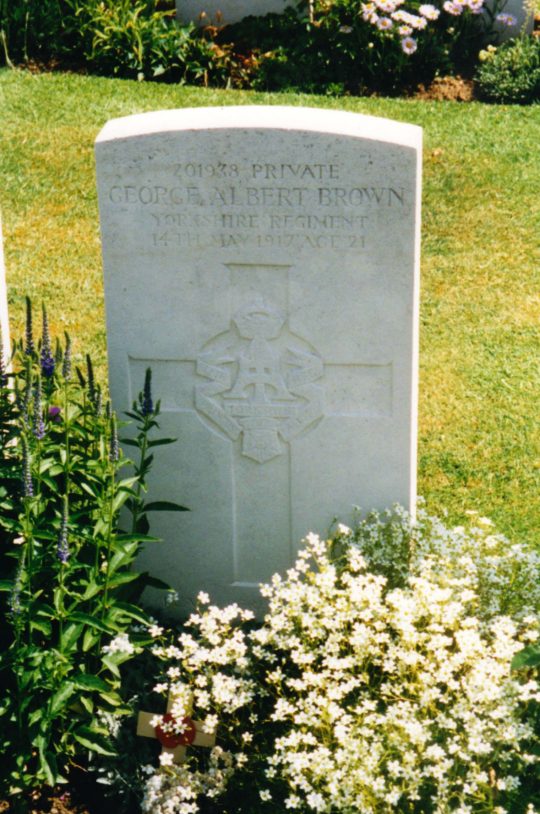
Shirley Stephenson visited the museum to tell about the story and final letters of 5444 Private George Brown, 7th battalion, Yorkshire Regiment, the youngest brother of her mother in law. George was the seventh of nine children. Three of his brothers also served in France but survived. In 1915, he left his family home in Brandon, County Durham, to live with his older sister and her family on their farm in North Cowton. Here, he worked for them and was learning the trade of butchery, his sister and husband hoping to set him up, eventually, in his own business but he was called up in May 1916. He enlisted at Croft and was sent to Babworth Camp, Retford. At the beginning of July, he writes to his sister, Mary, and her husband, Tom, asking them to apply to his commanding officer for a month’s leave in order to assist them with haytime saying, ‘……tell him I worked for you and you can’t get anyone else…. I think you will succeed as he can’t refuse.’ Unfortunately, he could because the Regiment was posted to France; three weeks later, ‘we are going to face the foe….. we poor devils with three months’ training.’ By 25th July, George and his Company were training on the French coast ‘…… it is very hot here…… very tiresome marching around in the sand all day….. we get better food than in Retford but not much of it.’ Three weeks later his letter reads, ‘…. I am…
Read moreCaptain M J Kavanagh
October 3, 2018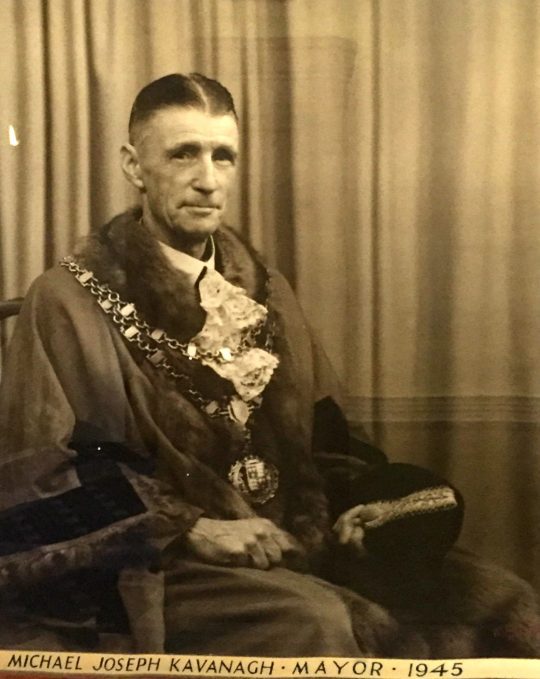
Information submitted by Liz Thompson, a resident of Richmond. Michael Joseph Kavanagh (Liz’s Great-Uncle) was born in Walsall, Staffordshire on 20 February 1879. He joined the South Staffordshire Regiment, serving in the Boer War in the Cape Colony, the Transvaal and at Wittegbergin. At the outbreak of the First World War he reenlisted into the same regiment as a Private and advanced to the rank of Colour Sergeant. He was Commissioned as a Second Lieutenant in January 1915 and promoted to Lieutenant in September of the same year. He was wounded twice during the Battle of the Somme and was awarded the Military Cross. The citation published in the London Gazette stated “For conspicuous gallantry during operations. Though knocked over and wounded by a shell, he took over command of a machine gun company two days later, and, suffering from shock and considerable pain, stuck to his command and did good work”. He was promoted to Acting Captain on 8 March 1918. On his retirement in November 1919, Michael Joseph Kavanagh was granted the full rank of Captain. In later life Captain Kavanagh moved into local politics, being elected to the position of Mayor of Walsall in 1945. During the Second World War he served as Platoon Commander of No. 21 Platoon of the 27th Staffordshire Home Guard.
Read moreArthur John Buchanan Richardson
October 6, 2018
Arthur John Buchanan Richardson Arthur was born in Guisborough North Yorkshire in the first quarter 1895. He was the eldest son of Colonel William Richardson, a solicitor of Guisborough and his wife Averil Mary, daughter of Arthur Buchannan, also a solicitor of Guisborough. Arthur entered Rugby Public School, Warwickshire, in 1909 and left in 1913. In August 1913 he entered as an Articled Clerk in the firm of Solicitors founded by his great grandfather and carried on by his grandfather. He received his Commission as a 2nd Lieutenant in the 4th Battalion, The Yorkshire Regiment in June, 1913, and went to camp with them in August, 1913. He was again in camp in August 1914, at Colwyn Bay, when War broke out. The Regiment was recalled into training at Darlington, when he was given the command and a new Company of Signallers. He next went with the Battalion to Newcastle on Tyne, on coastal defence. Arthur would not die leading his men over no-man’s-land or in some heroic fighting. He would die of meningitis, contracted on service, in his billet at Newcastle on 4th January 1915. Three months later, the Battalion went out to France. Arthur was just 19 years old. A local newspaper report, headed “Cleveland Mourns the Death of a Gallant Officer”, provides details of a military funeral at Guisborough Church attended by local dignitaries: ‘The coffin was borne by men of the 4th Battalion, with fellow Officers Colonel Bell, Captain Charlton and Lts Williams and Jervelund present….
Read moreCatherine Walls
October 6, 2018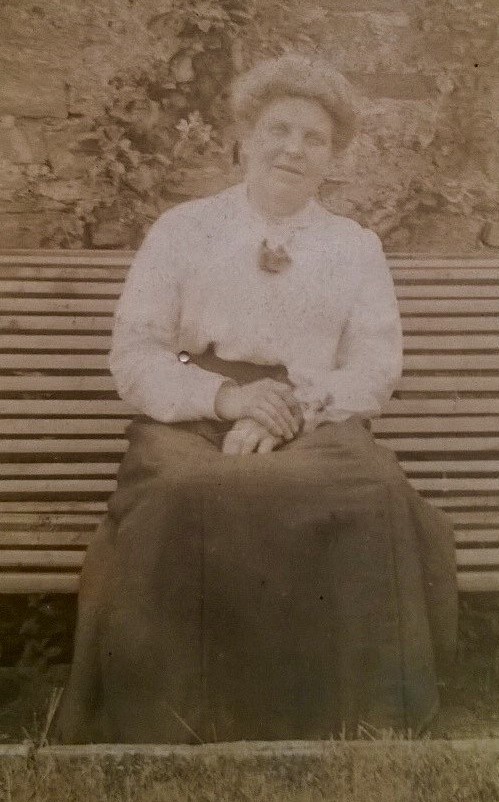
Valerie Slater of Coverdale provided this story about her grandmother, Catherine Walls – a happy and unusual tale wherein all 5 of her sons survived the Great War. In 1883, Catherine Louisa Polden, then living in Dorset set eyes on George Walls for the first time. It was love at first sight. George was twenty years older than Catherine and arranged the wedding with all haste – the marriage by licence took place at Hampreston near Wimborne. Catherine left the county of her birth, never to return. After journeying north, Catherine and George made their home in Carlton at Coverdale Cottage. The couple had three daughters and five sons born between 1886 and 1898. George died in 1908 so Catherine had to face the anxious war years supported by her daughters. She was a religious woman, so her faith combined with her respected and busy life as unofficial midwife in the village helped her to get through. Her prayers were answered. William Walls (born 1898) served in the Machine Gun Corps; George (born 1889) was with 21st Kings Royal Rifles, being wounded by shrapnel at the Battle of Flers-Courcelet on 17 September 1916; Alfred (born 1891) served in the Army Service Corps and then the Loyal North Lancashire Regiment, he was hospitalised twice (the second occasion being the result of a gas attack); Joe (born 1896) enlisted with the King’s Royal Rifle Corps with his brother Dick. Joe was discharged from the army in November of 1916 due to ill…
Read moreLt Henry Stanley Tempest Bullen
October 6, 2018
Jennifer Bullen visited the museum to show us the memorial plaque to Lt Henry Stanley Tempest Bullen, her father-in-laws elder brother. Harry Bullen of ‘D’ Battery, 251st Brigade of the Royal Field Arilltery was Killed in Action on 14th April 1917 during the Battle of Arras (an action launched in support and as a diversionary action to the larger French offensive on the Chemin des Dames). He died at the age of 20 and is buried south of Arras at Beaurains Road Cemetery, which was designed by Sir Edwin Lutyens. His mother, Edith Bullen lived in Gosforth, Northumberland. A memorial window to Lt Bullen was erected in St Nicholas Church, Gosforth following the war.
Read moreJohn Vivian Nancarrow
October 6, 2018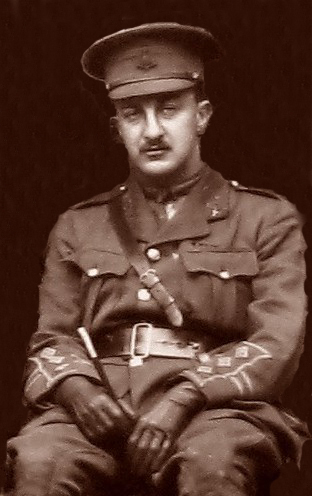
John Vivian Nancarrow was born on the 6th June 1885 in Middlesbrough. He was eldest son of George and Charlotte Nancarrow of ‘Ravenscroft’ at Grove Hill in Middlesbrough. John was educated at Leys School and Kings College in Cambridge attaining an MA and a Law degree. He was admitted a Solicitor in 1909 and became Secretary to Middlesbrough Chamber of Commerce. He had joined the 1st Volunteer Battalion of the Durham Light Infantry in 1907 and later was attached to the Northumberland Fusiliers at Newcastle. At some point he moved to Cornwall and was attached to the Duke of Cornwall’s Light Infantry. In 1911 he is recorded as being a Solicitor in Camborne Cornwall. Shortly after John was back in Middlesbrough joining the 4th Battalion Yorkshire Regiment as a Lieutenant. He was promoted Captain in late 1913. Prior to his mobilisation to France he had become engaged to Miss Elsie Harkness of Stokesley North Yorkshire. The 4th Battalion arrived in France in April 1915 and were at Ypres by the 23rd. The Battalion were straight away into Ypres offensive being involved in the Battle of St Julien. During the attack at Fortuin on the 24th John was leading his men forward when he was shot and died instantly. Subsequently his body was never recovered. He was 29 years of age. John is commemorated on the Menin Gate at Ypres.
Read morePrivate Alfred Arthur Hibben
October 9, 2018
Submitted by Christine Gayton Private Alfred Arthur Hibben was my great uncle Private Hibben served in his home regiment, The 1st Battalion, Queen’s Own Royal West Kent Regiment (R.W.K.). He was born in Dartford Kent and enlisted on the 1st of April 1914 at Gravesend Kent. He was 5 foot 4 inches tall, weighed 109 pounds and worked as a plumber’s mate. His age was stated as 17 years, 248 days but in fact, he was only aged 16 having been born in the last 3 months of 1898! He was posted to France on the 31st of January 1915, which still made him under the 19 years minimum required to fight abroad ( in reality he was still only 17). On the 22nd of July 1916 the 1st R.W.K. attacked the south east corner of High Wood. No significant gains were made in this assault but the R.W.K. suffered 420 casualties, approximately 50% of those who went over the top. Private Alfred Arthur Hibben was one of these soldiers and was therefore presumed killed on the 22nd of July 1916 aged 18 years. His body was not recovered but he is commemorated on the Thiepval Memorial Pier and Face 11C, France. The photograph shows Alfred aged 2 with his parents Arthur and Elizabeth and baby sister Ivy.
Read moreCaptain Frank Woodcock
October 9, 2018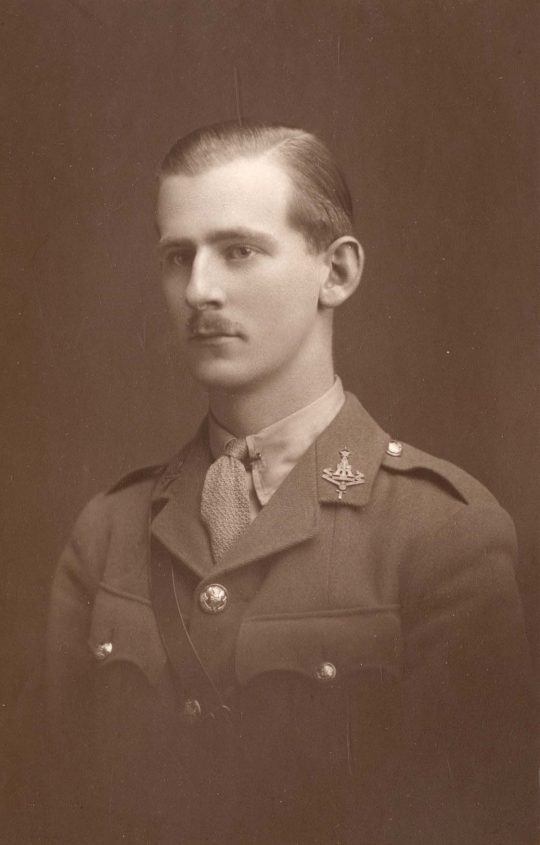
Captain Frank Woodcock 5th Battalion of the Yorkshire Regiment Captain Woodcock, who was only 22 years of age, was the youngest son of John and Elizabeth Woodcock of Driffield Yorkshire. He was killed in action during an assault on the 15th of September 1916. Frank was one of 6 children having 2 brothers and 3 sisters, the family must have been “comfortably off” because the 1901 census records his father as “living on his own means” and they had a servant called Margaret. He was educated at Bridlington School, where he was in the Officer Training Corps (O.T.C.). He became a Second Lieutenant in a Territorial Battalion in December 1912. He was promoted Lieutenant in April 1914 and then to Captain in May 1915. The Regimental Gazette recorded his death as follows: “The death of Captain Woodcock deprives his battalion of a very capable Company Commander and a very popular Officer. Despite his youth, he very soon proved himself an Officer of much resource and dauntless courage. He was wounded when wiring in front of the trenches in July 1915, and returned to France in January 1916 when he succeeded to the command of a Company. It was in this capacity that he showed himself a cool and capable Commander with great initiative and pluck, always setting a fine example to his men when any dangerous work had to be performed. He was twice mentioned in despatches. Captain Woodcock is buried at Flatiron Copse cemetery in France.
Read moreClement Rose
October 15, 2018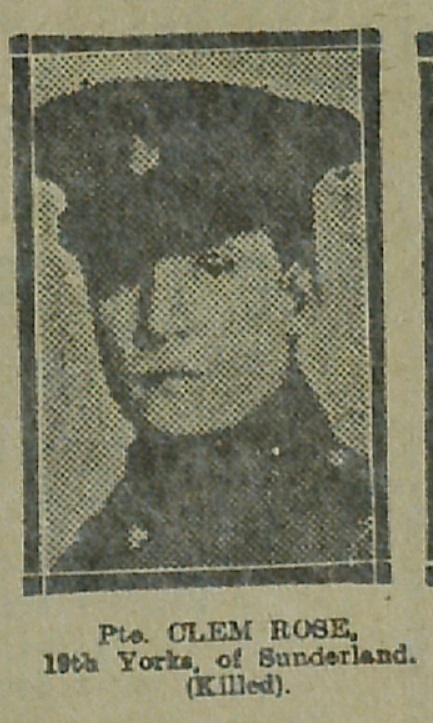
Clement Rose was the son of John and Mary Rose of Monkwearmouth, Sunderland. His father was a mast-maker. He enlisted in the East Yorkshire Regiment in October 1914 at the age of 17. His elder brother was serving with the Yorkshire Regiment and claimed Clement for them. The 8th Battalion left for France in late August 1915 and on October 11th they relieved the 11th Sherwood Foresters Regiment in trenches at Rue Marles. 15734 Private Clement Rose was killed in action on the 13th, one of the 8th Battalions first casualties. He was buried at Desplanque Farm Cemetery, La Chapelle-D’Armentieres and left his effects to his mother, £2-10s and a gratuity of £3.
Read moreEarnest Tewson
October 15, 2018
Colin Parker’s Grandfather, Earnest Tewson A/Cpl 13277 joined the Yorkshire regiment in Eston. He was awarded the Distinguished Conduct Medal, 1915 Star, British War Medal and Victory Medal. This was for conspicuous gallantry and devotion to duty. He held onto his post, after his platoon commander had been killed, and only withdrew when the situation was secure, and all his ammunition and bombs had been expanded, he saved the whole line from been turned. After the war, Earnest worked at Dorman Long, married Ava (Abby), and went on to have two children Elsie and Lily (Mr Parker’s mother), and lived in Grangetown, near Eston.
Read moreErasmus Darwin
October 15, 2018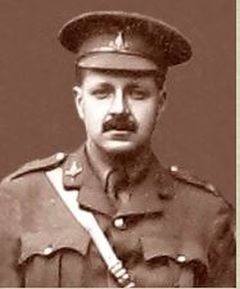
Erasmus Darwin was born on the 7th December 1881 in Cambridge and lived at ‘The Orchard’. He was the only son of Horace Darwin FRS (Fellow of the Royal Society) who was Chairman of the Cambridge Scientific Society. He was also the grandson of the famous naturalist Charles Darwin. Erasmus was educated at Horris Hill School near Newbury and at Marlborough. He then went on to Trinity College, Cambridge University to study Mathematics. On leaving Cambridge he worked at Mather and Platts in Manchester, a hydraulics and pump engineering company. He then moved on to work for Bolckow, Vaughn & Co Ltd Iron and Steel in Middlesbrough, whereby, at the outbreak of the war he was Secretary of the Company. He lived at the time at Saltburn on the north east Yorkshire coast. As soon as war broke out he joined up and was gazetted on the 12th September 1914 as a 2nd Lieutenant the 4th Battalion Yorkshire Regiment. Apparently just before he left England he was summoned to the War Office and offered a Staff appointment at home in connection to munitions work. Though the work was important he opted to stay with his unit making the case that there were plenty of older men equally qualified for the work. The 4th Battalion arrived in France on the 18th April 1915 and were straight away into the 2nd Ypres offensive which started on the 22nd April. The Battalion was involved in the Battle of St Julien in the heart…
Read moreErnest Pigg
October 15, 2018
Ernest Pigg was the son of James and Maria Louise Pigg of 7 Langley Avenue, Thornaby on Tees. He enlisted in late 1914 and was posted to the 8th Battalion of the Yorkshire Regiment. The 8th Battalion left for France in late August 1915 and took over trenches in the area of La Rolanderie and Bois-Greniers. Having been in France for only one month 11605 Private Ernest Pigg is reported to have died of wounds on 28th September. He was buried at Sailly-sur-la-Lys Canadian Cemetery in the Pas-de-Calais. He was awarded the 1915 Star, the British War Medal and the Victory Medal. His effects, which were left to his father James, constituted £2-2s and a gratuity of £3-10s.
Read moreErnest Wyatt Burnett
October 15, 2018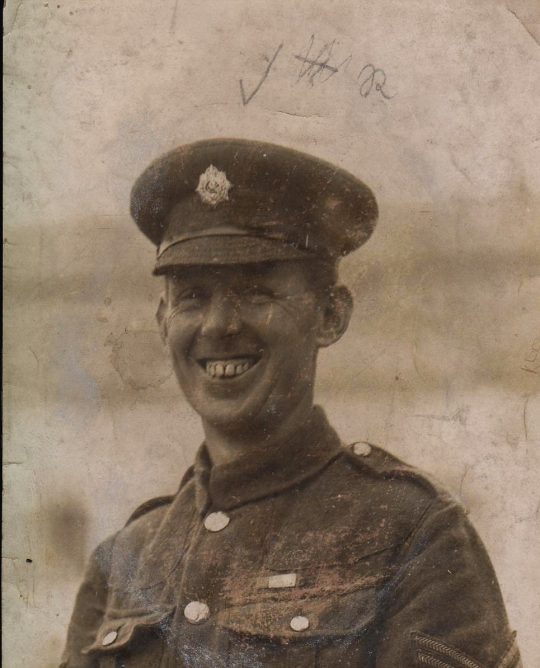
Gerald Burnett visited the museum to relate the story of his grandfather Ernest Wyatt Burnett. My Grandfather, Ernest Wyatt Burnett was born in Chudleigh, Devonshire, in 1886. After minimal schooling and several agricultural jobs, Ernest moved to London and became a chauffeur with various employers including Thomas Tilling. He spent the pre-war years driving around Great Britain with American tourists and contemporary industrialists such as Tommy Lipton of tea fame. Ernest enlisted with the Royal Army Service Corps, Mechanical Transport Branch, in April 1915 and became a Staff Car driver. In 1915, the Government appointed five official Western Front War Correspondents, Philip Gibbs, Percival Phillips, H. Perry Robinson, W. Beach Thomas and Herbert Russell. Ernest was assigned to be their driver, a position he held until the end of the war. Ernest was transferred to the Reserve in February 1919. Alongside his ‘Pip, Squeak and Wilfred’ decorations he was awarded a Silver Medal for Merit by Nicholas I, King of Montenegro. During WW2, Ernest served with the Home Guard at Balcombe Place, his Sussex home, where he was chauffeur to Lady Gertrude Denman who was President of the Women’s Institute and Honorary Director of The Women’s Land Army. My Grandfather was one of the lucky ones. He served his country, survived two World Wars, and lived a full and interesting life.
Read moreGilbert Davison Pitt Eykyn
October 15, 2018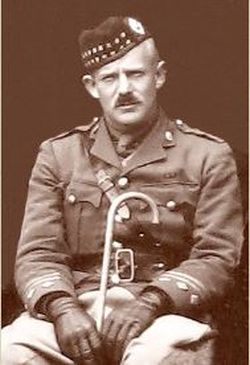
Gilbert Davison Pitt Eykyn was born at the France Lynch parsonage in Gloucestershire on the 22nd August 1881. He was baptised on the 29th September 1881. He was the only son of the late Reverend Pitt Eykyn. His father at the time of his death was Chaplain at Parel Bombay. Gilbert married Emily Constance on the 28th November 1902 and a son, Duncan Arthur, was born on the 11th August. The 1911 census shows that Duncan was born Poona in India. At some point after the family returned to England they moved to Northallerton in North Yorkshire. Gilbert was a career soldier. He was also a gifted linguist, having passed Army exams in Russian, French and Hindustani. He received his first commission with the 3rd Loyal North Lancashire Regiment in 1899. He then joined the 4th Manchester Battalion in May 1901 and was promoted to Lieutenant on the 24th December 1901. He joined the Royal Scots on the 4th February 1905 attaining the rank of Captain on the 26th June 1913. On the 13th February 1913 he was appointed adjutant to the 4th Battalion Yorkshire Regiment in Northallerton. During his military career he had served in India and saw action in the 2nd Boer War (1899-1902). Gilbert was with the 4th Battalion Yorkshire Regiment when they arrived in France just prior to the 2nd Ypres offensive. He was killed leading his men in the storming of St Julien on the 24th April 1915. He was 34 years old. Gilbert has…
Read moreHarry Kinchin
October 15, 2018
Harry was born sometime in the 2nd quarter of 1880 in Richmond North Yorkshire. He was the son of John James and Martha Kinchin of 11 Castle Hill Richmond. His father worked as a joiner. Harry was the eldest of eight children. The 1901 census shows Harry, 20, Walter 18, Allanson 16, Annie, 14, Moses 11, Martha 8, Elizabeth 5 and James Stroud 1. By the 1911 census Harry was married to Priscilla and had two daughters, Lilla 7 and Muriel Martha 1, and a son Walter 4. Harry also made a living as a joiner. At the time they resided at 7 Reynoldson Yard in Richmond. At the outbreak of war Harry and his brother Allanson joined up and went into the 4th Battalion Yorkshire Regiment. Harry and Allanson left with the 4th Battalion from Newcastle for France on the 17th April 1915 and after disembarking at Boulogne on the 18th arrived at Ypres by the 23rd. The Battalion was immediately involved in the 2nd Battle of Ypres and on the 24th April were ordered to make an attack on St Julien. During the attack 5 officers and 10 other ranks were killed. On the next day, the 25th, the Battalion had just the one man killed in the trenches. Harry’s death is recorded as the 25th so he could have been that single death, or it’s possible that he was actually killed the day before. He was 34 years of age. Harry may have been buried after his…
Read moreHenry Robinson
October 15, 2018
Kevin Robinson of Dalton on Tees visited the Green Howards museum to tell us about his great great grandfather, Sergeant Henry Robinson MM. Henry joined the Yorkshire Regiment (the Green Howards) as a very young man and soon left the UK to serve in the Boer War. Henry had several service numbers during his career with the earliest (and therefore a low number) being 421. On returning from the Boer war he then went to serve in the First World War both in France and Belgium, Henry and his division engaged in 2nd & 3rd Battle of Ypres, 1st & 2nd Battle of the Somme and the Battle of Arras to name a few. He is believed to have been a very accomplished horseman. His army career spanned some 4 decades as a Territorial reservist. During this time he picked up a proud chest-full of medals including the Military Medal awarded 10th October 1916. Adding a Bar to his MM in October 1918, other medals believed to be Queens South Africa Medal, 1914 Star, British War Medal, and Victory Medal with Oak Leaf (Mentioned in Despatches). Henry was also a Hero when not serving his country he was serving children with fun, Henry and his wife Elvira lived in a motor home at Derby Street / Cooper Street / Canon Street Common in Middlesbrough. They operated several fun fair rides which included swing boats and a roundabout. They continued to run the fun fair rides for several decades into the…
Read moreJames McAndrew
October 15, 2018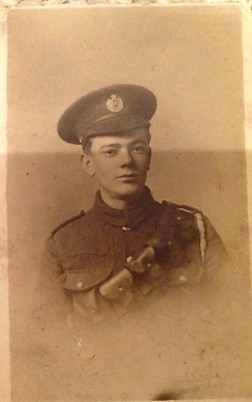
Deborah Hutchinson sent us this information about her Great Uncle, 459480 Driver James McAndrew, 450th Field Company, Royal Engineers. James was the oldest boy in a family of 9 – 3 girls and 6 boys much admired by his brothers and sisters, especially by his youngest sister Kitty – her grandmother. Born 1898 in Chester-le-Street, James moved with his family to 11 Mary Agnes Street, Coxlodge, Newcastle upon Tyne in 1901. When he left school he worked as a coal miner in Regent’s Pit, Gosforth along with most of the community. In 1914 he enlisted and joined the Royal Engineers as a driver. He was part of the Mesopotamian Expeditionary Force. He was one of the many non-battle casualties in the area due to the extreme weather and unhygienic conditions. He died of yellow fever on 10th October 1918 at the age of 22 – just a month and a day before the Armistice – it was also his mother’s birthday. He is buried in Amara War Cemetery in Baghdad, Iraq. His name appears on the War memorial in St Charles RC Church, Gosforth. His parents, Thomas and Liza, had been active fund raisers to build this church when they arrived in the area in 1901.
Read moreJohn Avery
October 15, 2018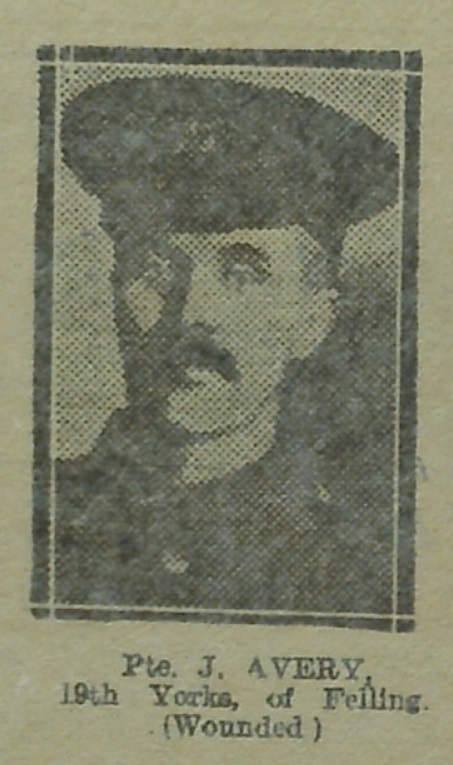
John Avery was a miner and lived at Felling on Tyne, Co. Durham. He was married to Elizabeth Anne Speight. He was 29 years old when he enlisted at the outbreak of war and was initially posted to the 10th Battalion but subsequently served in the 11th and 8th. John suffered a gunshot wound to two fingers on his right hand in September 1915 and subsequently from the effects of gassing and shell shock. He was posted to the reserves in early 1917 and sent to work at Heworth Colliery, Felling on Tyne. Due to his wounds he was unable to work full weeks and he applied for a disability pension. He was granted 12 shillings and 6 pence a week to rise to 13/9d and subject to review after 48 weeks. He was awarded the 14/15 Star, the British War Medal , the Victory Medal and a Silver War Badge.
Read moreJohn M Hewison
October 15, 2018
John Matthew Hewison lived in Penshaw and enlisted at the start of the war at Shiney Row. He was the son of Matthew and Anne Hewison of Shiney Row and he was married to Agnes. He would have left for France in late August 1915 and the 8th Battalion would have been involved in training and undergoing acclimatisation visits to the front line when he was killed in action on September 22nd. 14961 Private John Hewison died at the age of 22 and had been in France for only 3 weeks. He was awarded the 14/15 Star, the British War Medal and the Victory Medal. His wife inherited his effects of 14s/4d and a gratuity of £3-10s. He was buried at Brewery Orchard Cemetery, Bois-Grenier.
Read moreJohn C Morris
October 15, 2018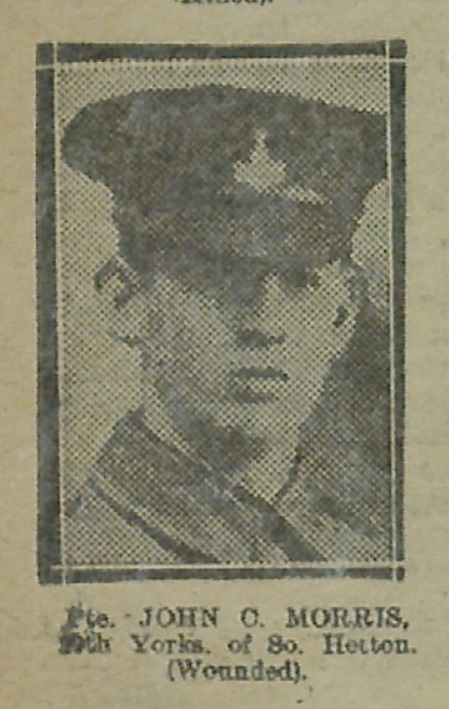
John Charles Morris was from South Hetton. He was born in 1896 and was 18 when he enlisted in the Yorkshire Regiment as 14136 Private Morris. He served in the 8th, 9th and 10th Battalions and was awarded the 1915 Star, the British War Medal and the Victory Medal, as well as the Silver War Badge. He was wounded in December 1915 and again in November 1916. He suffered a gun shot wound to his left hand and lost part of a finger and substantial power and movement in his right hand. He also suffered a shrapnel wound to his left foot. These injuries precluded manual work due to a lack of power in his hands. After his discharge in December 1918 he was awarded a pension of 8 shillings a week and was subject to regular reassessments of his injuries. He died aged 61 in 1957.
Read moreJohn M Osborne
October 15, 2018
John Malcolm Osborne, submitter Jackie Wilson’s father, was born on 14th October 1888 to Frederick Osborne and Lydia Lindridge in Goudhurst Kent, having 7 siblings. In 1911 he was living at home in Goudhurst, Kent working as a motor mechanic. During the First World War he joined the Royal Naval Air Service on the 22nd October 1915 with the service numbers of 208815 and F 8815, before the creation of the Royal Air Force by the merger of the RNAS and the Royal Flying Corps on 1 April 1918. His papers record that he was five feet seven and a half inches tall, had brown hair and grey eyes, with a fresh complexion. He was stationed at President II, a shore based depot at White City, London. When called to a Zeppelin crash site, John removed the propeller as a souvenir. At a later date the propeller was fashioned into a walking stick. A clock was also made from the remains of the propeller, owned by Jackie’s Godfather. John Osborne was transferred to the reserve in April 1919 and discharged April 1920. John married Florence Huddlestone in Shepherd’s Bush, London, 3rd March 1918. In the 1930s he lived in Hammersmith with his wife before they moved to Cambridge. He died on the 4th February 1953 at Chesterton Hospital, Cambridge, leaving effects of £224 14s 6d to his widow Florence Maud Osborne.
Read moreJohn Sweeney
October 15, 2018
John Sweeny was 22 years of age when he enlisted in the Yorkshire Regiment in late 1914. He was the son of John and Mary Sweeney of Washington Station, Co. Durham. The 8th Battalion arrived in France in late August 1915 and John is reported to have been wounded in that November. He was again wounded in December 1916 and was killed in action in August 1917. The only reported 8th Battalion casualties at this period were working as Yukon Pack Carriers, re-supplying the front line with munitions in the area of Ypres. He is commemorated on Panel 33 of the Menin Gate at Ypres, Belgium. 144466 Private John Sweeney of ‘A’ Company was awarded the 15 Star, the British War Medal and the Victory Medal.
Read moreNorman Angus
October 15, 2018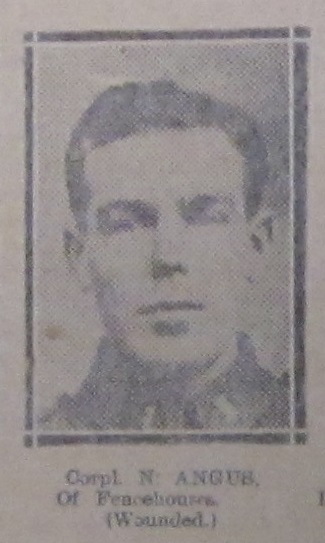
Norman Angus was born at Southwick, Co. Durham in 1890. He was working as a miner prior to enlisting in September 1914. He was posted to the 8th Battalion of the Yorkshire Regiment. He would have been sent to France in September 1915 and he had a somewhat chequered career. He had been promoted to Corporal by early 1916 but was reduced to Private. He was wounded in December 1915 and again in September 1916 and unfortunately had to forfeit 6 days pay for unauthorised absence in 1917. 14043 Corporal Angus was awarded the 1915 Star, the British War Medal and the Victory Medal. He died aged 84 in March 1975.
Read morePercival Charles du Sautoy Leather
October 15, 2018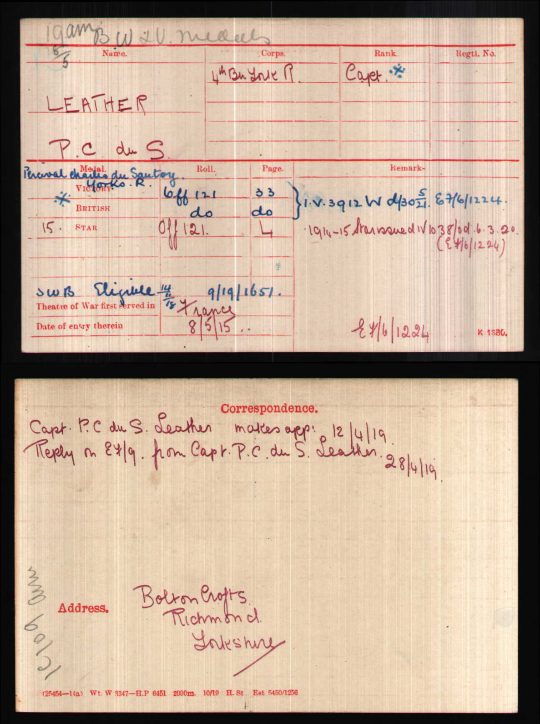
Teresa Maxwell came into the museum to tell us about her grandfather, Percival Charles du Sautoy Leather. Captain Leather was born at Cramond near Edinburgh on 28th March 1867. He graduated from New College, Oxford in 1886. He worked as a Tea Planter and Stock Broker. Captain Leather original saw service as a Captain with the 3rd Battalion, the Northumberland Fusiliers but was transferred to the 4th Battalion of the Yorkshire Regiment on 5th September 1914 and he joined his new Battalion in France on 8th May 1915. It was not long before he was in action and he suffered the effects of a gas attack on 23rd May 1915 and was wounded again at Sanctuary Wood in June 1916. His wounds ended his military service and he relinquished his Commission on account of ill health stemming from his wounds and was granted the honorary rank of Captain from 15th November 1918. After the war Percival lived at Maison Dieu in Richmond where he died on 4th October 1944.
Read moreRichard Oliver
October 15, 2018
Richard Oliver was 22 years old when he enlisted at Cramlington in September 1914. He was from Esh Winning, Crook, Co. Durham and was a miner. He enlisted in the Northumberland Fusiliers but was posted to the Yorkshire Regiment. He served in the 9th and 10th Battalions and whilst with the 10th Battalion in 1915 he was awarded the Military Medal. He served in France and Italy and became disabled due to the effects of gassing. He was discharged in March 1920 and was initially given a pension of 8 shillings a week, but this was subsequently withdrawn and his appeal rejected. He left the army as a Corporal, he served in France from 1915 to 1917 and on the Italian Front from November 1917 until December 1918.
Read moreRobert Codling
October 15, 2018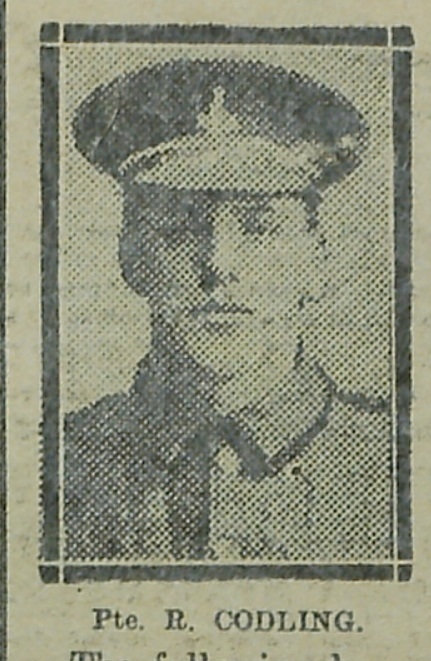
Robert Codling was the son of John and Elizabeth Codling of 13 Revesby Street, Tyne Dock, South Shields. At the outbreak of war he enlisted in the Yorkshire Regiment and was posted to the 8th Battalion. 19873 Private Codling arrived in France in September 1915 and was in and out of the lines in October, November and December. The 8th Battalion relieved the 10th West Riding Regiment in trenches at La Rolanderie on the 18th December. Robert was awarded the DCM for his actions on the 21st. His citation reads, “For conspicuous gallantry near Rue du Bois on 21st December 1915, when under heavy fire and in the face of rifle grenades, he returned to a wounded comrade and brought him in. Later in the day he joined a patrol and searched under heavy fire for his platoon officer who had failed to return”. On 13th October 1916, at the age of 21, he died of wounds. The battalion had been serving in the area of Contalmaison and had suffered a number of casualties. He is buried at Dernancourt Communal Cemetery Extension in the Somme.
Read moreCaptain Thomas Ernest Dufty
October 23, 2018
Captain Thomas Ernest Dufty 5th Battalion Yorkshire Regiment Captain Dufty was born in on the 30th of June 1880. His father was Arthur Richard Sykes Dufty and his mother was called Katie. He was educated at Pocklington Grammar School. He joined the 5th Battalion in 1912 and became a lieutenant in June 1913. Prior to this his profession was as a banker and manager of the Bridlington branch of the London Joint Stock Bank. Dufty was promoted to Captain on the 18th of April 1915. He was reported as killed in action on or about the 19th of May 1915 (killed by a shell). His Battalion had been deployed to Sanctuary Wood (1.9 miles east of Ypres). He left a widow, Beatrice, and a 4-year-old son Arthur Richard. He is buried at the Vlamertinghe Military Cemetery in Belgium and commemorated at the Manor Road Cemetery Scarborough.
Read more2nd Lieutenant Arthur F Clarke
October 26, 2018
2nd Lieutenant Arthur F Clarke was attending the 5th Battalion annual camp in Wales when war broke out. He spent the first months of the war moving between Scarborough, Hull, Newcastle, Hartlepool and Darlington. On the 18th April 1915 he went out to France and was wounded during a gas attack on the 26th May 1915. The Green Howards Gazette records: “The day seemed interminable as the poor shelter had to be hugged tight all the time. With darkness came the order that we were to pass through GHQ lines and take up a front line position in Zouave Wood facing Hooge, where the main attack by the enemy had been made. That little strip of ground has since been the cockpit of our Western front. On our journey up another man was killed, and Lieutenant A F Clarke was wounded. That tour was destined to be the worst we had so far entered upon.” We know he returned to the front line as the Green Howard Gazette for January 1916 records that he was wounded. He rose to the rank of Captain in November 1916.
Read more2nd Lieutenant Richard Birkenhead Wilton
October 26, 2018
Richard Birkenhead Wilton was the son of Charles and Elen Wilton of Stafford. After the outbreak of war Richard joined the 15th (Reserve) Battalion of the Yorkshire Regiment which had 12 officers and 750 non-commissioned officers and men. The battalion moved from Skipton to Rugeley in Staffordshire. In January 1916 Richard is listed as a temporary Second Lieutenant in the Reserve battalion. November 1916 sees him transfered at that rank to the 9th battalion. The Green Howards Gazette records that Richard was Killed in action on 1st October 1917. On the night of 30th September the 9th battalion took over from the 8th battalion in the line where the war diary states “Very heavy barrage put up by enemy from 4.30am; ‘C’ Coy on our left attacked; heavy casualties feared. Communication between HQs and Coys very difficult” His death is recorded on the Tyne Cot Memorial in Belgium.
Read moreArthur Bateman
October 26, 2018
The story of Private Arthur Bateman was compiled by Margeret Sparke, his granddaughter. Arthur was born in 1879 – the son of William and Mary Bateman of Battersea. He worked as a labourer and married Emily Jackman in September of 1903. After the outbreak of war Arthur joined the Yorkshire Regiment, enlisting at Kingston-on-Thames. His service was quite unusually as he was posted to a total of 4 battalions. He served with the 4th, 7th, 6th and 2nd battalions of the Yorkshire Regiment. He has two regimental numbers (9166/235033) – the earlier number suggests that he may have served with the 4th battalion before the war as a Territorial soldier. He died on 6th November 1918, just before the Armistice came into force and is buried in Bettrechies Communal Cemetery in France. Tragically, with Arthur’s death being so close to the end of the war, his widow Emily only found out that he had been killed in action while taking part in an Armistice street party.
Read moreArthur Selwyn Morley
October 26, 2018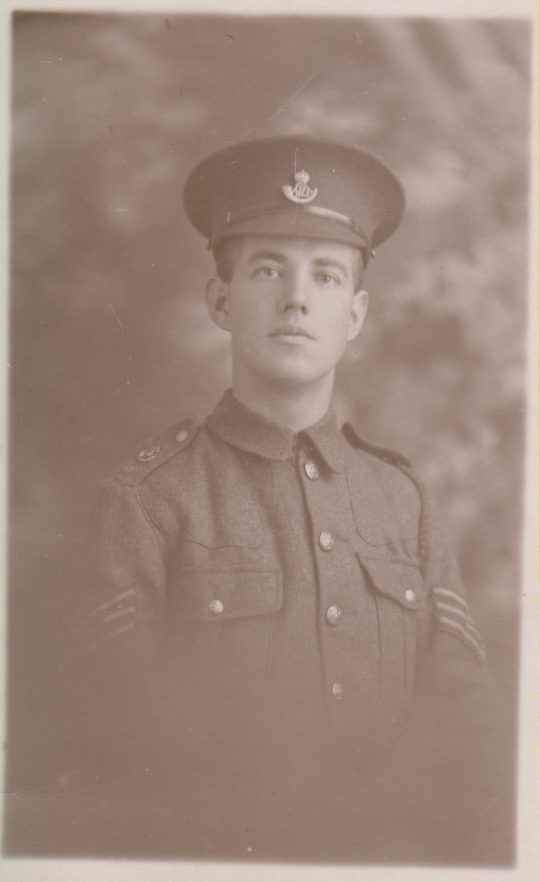
Information submitted by Mrs Drury of Richmond. Arthur Selwyn Morley MC was one of nine children of a Weardale hill farmer who sold up in 1894 and moved to Houghton-le-spring, County Durham. Arthur ran with the Houghton and District Harriers. When war broke out Arthur and three of his five brothers joined up. His regiment was the Durham Light Infantry and he did his training at Bullswater Camp, Woking, Surrey when he was a Lance Corporal in 1914, before he proceeded to the Flanders trenches. On one of his precious leaves he married in haste, as many soldiers did who had seen the countless deaths and injuries and knew their own chances of survival were not good. On one occasion in the trenches Arthur took command of his company, being a temporary Second Lieutenant, when senior officers became casualties. He led several attacks on an enemy position and behaved with great coolness and courage until his battalion was relieved. For this conspicuous gallantry he was awarded the Military Cross, but only weeks later he was killed and never got the chance to see his daughter. His name is on the Menin Gate. His elder brother William had a son soon after Arthur’s death and named that son for Arthur.
Read moreEdward Methuen Stone
October 26, 2018
The Green Howards Museum’s Fiona Hall shares her thoughts about Edward Methuen Stone, her maternal grandfather: “This picture shows my grandfather, Edward Stone, with my Mum on her wedding day in 1960. Edward was born in St Mary le Bow in London in about 1900; in the 1901 census he is shown as living with his parents and three older sisters – Eliza, Emma and Julia, and a brother, John in Armagh Road. There is absolutely no existing anecdotal information regarding Edward’s war service within our family. My older cousins, who knew their granddad as young children, can’t remember anything ever being said about it. My grandfather died ten years before I was born, and I can only remember my Mum saying what a kind and gentle father he was. My great uncle John was ten years older than Edward. It seems he served in the Royal Engineers and also survived the war. No service record exists for Grandad Stone, so we do not know when he enlisted or was demobbed, or precisely where he served, his medal card shows he was a Private in the Norfolk Regiment. A researcher at their regimental museum managed to find just one intriguing reference to him. On the 10th of October 1916 he is recorded as being in 23 Base General Hospital, Amara, Mesopotamia with a ‘slight gunshot wound’. That’s it. There’s nothing else. The boy from Bow was in what’s now Iraq! Needless to say my cousins are gobsmacked. How could we…
Read moreErnest Farrar
October 26, 2018
Judith Farrar told us the story of Ernest Holdsworth Farrar, the Great Uncle of her husband, Don. Ernest Farrar was born in 1882 in Leeds, after a spell at Teacher Training College in Isleworth, Middlesex he went on to study at Trinity College, Cambridge. He attained both a BA and BSc. After his graduation, Ernest spent some time in Dresden in Germany, and while the reasons for this sojourn are no longer known, it is highly likely that he continued as an academic at the University of Dresden. On his return to England Ernest was appointed to the Headship at Todmorden Secondary School. This important work continued after the outbreak of the First World War, but with the introduction of conscription in January 1916, Ernest was compelled to face several Tribunals when it was insisted that he enlist. The School Governors tried to intervene and to keep him as Headmaster, but he was sentenced to 6 months in Wormwood Scrubs prison. After an unsuccessful appeal, Ernest was sentenced by the Central London Tribunal to 6 months in Dartmoor Prison in 1917. His reasons for refusing to fight are given in the extract from the Yorkshire Post.
Read moreEvelyn Fletcher
October 26, 2018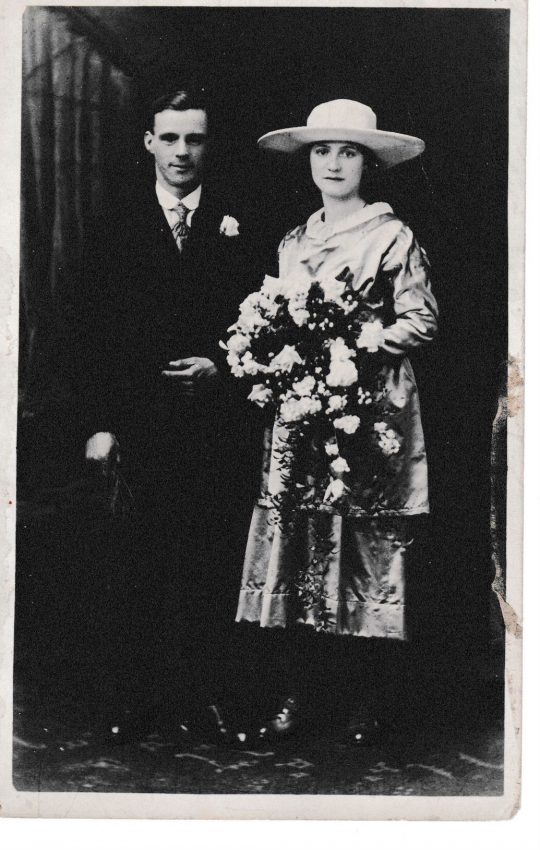
Marion Moverley, a Richmond resident, provided us with information about her grandmother, Evelyn Fletcher. My grandmother was called Evelyn Fletcher and born in 1898 in Halifax. She met my grandfather Tom Stocks who was born in 1897 in Bradford, and they married in 1920. They both played a part in the War. Tom joined up, Evelyn worked in munition factories. The photograph shows a munitions factory in the Bradford/Halifax district, with two figures picked out by ‘x’ marks in biro. The girl marked on the left appears to be Evelyn and the one on the right is probably her sister, Lizzie Fletcher.
Read moreGertrude Bell
October 26, 2018
Fiona Hall, Communications and Retail Manager at the Green Howards Museum submitted this story about one of the most important women of the First World War (in fact of any) era. I’m intrigued by this local hero – a complex character. There’s not enough space here to describe the many achievements of Gertrude Bell, and that’s not the point of this entry. Although I do recommend you take some time to acquaint yourself with her if you are not already familiar with this fascinating woman – archaeologist, mountaineer, one of the first women to gain a degree at Oxford (a First in History) but an anti-suffrage campaigner, the first to work for British military intelligence, colleague of TE Lawrence, and also the first to write a government white paper. She was born in 1868 into the sixth richest family in England, the granddaughter of the industrialist Sir Isaac Lowthian Bell, and lived in Redcar. When war broke out her request for a government posting to the Middle East was denied. Instead she volunteered with the Red Cross, taking charge of the missing and wounded office in Boulogne. Meanwhile her brother, Maurice, a career soldier and Boer War veteran was commanding the 4th Bn The Yorkshire Regiment on the western front. Imagine working in the environment Gertrude was working in- with the very possible chance she may have to ‘process’ information about the fate of her own brother. Maurice was in fact invalided home in 1916 and died in 1944. In…
Read moreJack Bell
October 26, 2018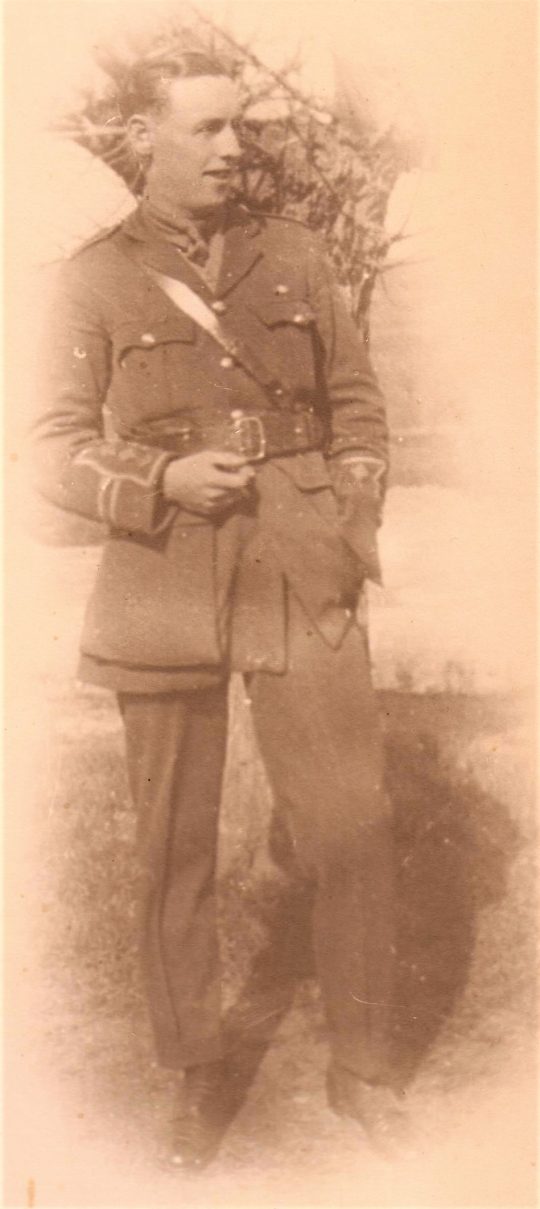
Story submitted by Mrs Drury. Jack (John Adam) Bell was the son of a gamekeeper at Langdon Beck in Teesdale, County Durham. He grew up in the countryside a became a railway clerk. When he joined the army and went to experience life in the trenches he had the horror of standing next to a fellow soldier when his head was blown off. Jack also had to endure the news that his own brother had been killed. Jacks country knowledge became most useful in the mire of Flanders. He would cut trenches to make a sleeping place out of the mud, trap rabbits and stew them in a metal helmet. He would look after horses for officers who had never had to look after their own mounts before. He described how starved the horses were near the front line – the near stampedes when fodder was brought and how the horses gnawed each others’ manes and tails for food. He remembered how long the cavalry had to stand mounted and how weak horses collapsed. Remounts were needed constantly and Jack was sent in to break in and train them. He was stationed on the Thames, possibly at Tilbury, to receive horses, practically wild sent by ship from South America and often in a sorry state on arrival. He had six weeks to prepare each batch (size unknown) for dispatch abroad. During this training Jack rode these recovered and lively horses with a ladies side saddle as he said it was…
Read moreJack Morley
October 26, 2018
Mrs Drury of Richmond visited the museum to tell us about Jack Morley, her great uncle. Jack Morley was one of nine children of a hill farmer in Weardale, County Durham and a keen athlete. In 1914 he lived in Toronto, Canada whither he had emigrated and worked as a cabinet maker. When war broke out he returned to England, to his mother’s great joy, to join up in the Durham Light Infantry. One of his five brothers was Customs and Exciseman for Swaledale and Wensleydale, based in Richmond, near Catterick Camp where Jack did some training. Jack would ride over to Richmond to visit and would tie up his horse in the garden to the great delight of his nieces! Jack served in the 1915-1917 Salonica Campaign in northern Greece, at the time that city was badly burned. Jack organized the transport of supplies, mainly by mules through the hills up to the Struma Front. His height was 6’3” and together with his high-heeled riding boots and his high officer’s helmet, he made a commanding figure in securing the co-operation of the locals! In his time off he enjoyed shooting in the nearby Vardar Estuary marshes and brought home fine striped woollen socks run through with silver thread. The stamps from the postcards he sent home are still in a family stamp collection.
Read moreNancy Bainbridge
October 26, 2018
Story submitted by Mrs Drury, a resident of Richmond. Nancy Bainbridge was born in Weardale, County Durham in May 1894. She was one of eight children whose parents were hardy hill farmers. Nancy was a very practical person and joined Queen Alexandra’s Imperial Military Nursing Service in 1914. Nancy served at a military hospital in East Anglia where the nurses received casualties straight from the Somme. Her upbringing on a farm had afforded her some preparation for the ensuing, distressing sights and sounds. She described how the men arrived with mud and tufts of grass in their wounds. The nurses found out the hard way that soldiers’ skin, subjected to the mustard gas attacks in the trenches, could not be washed with water as that inflicted pain. Nancy received many deathbed requests. After the war Nancy worked as a private nurse in families with disabled soldiers and patients with other conditions. She married Captain Jack (John Adam) Bell. Nancy had a brother William, also a hill farmer and ten years older. He joined the Northumberland Fusiliers, but saw little service because, when detailed to chop an officer some sticks, a splinter blinded him in one eye. Another sibling, Violet, worked in Barnard Castle’s recruiting office. Her soldier husband Harry Raine was awarded the Military Cross. The medal was presented to the Bowes Museum, Barnard Castle.
Read morePercy Perry
October 26, 2018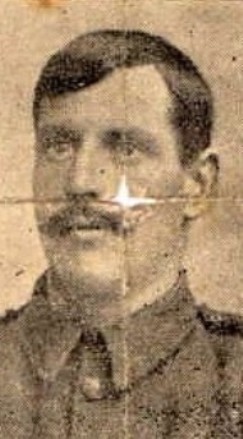
Information provided by Roger and Helen Raisbeck. Percy Charles Perry was born on 22 June 1886 to George and Selina Perry in Dorset, England. In 1902, at the age of 16, he joined the 5th Battalion of the Coldstream Guards at Yeovil (probably transferring to London before 1905). In 1905 he transferred to the army reserve (and enlisted again in 1914 service number 18562, Coldstream Guards). He fought at the Battle of Mons which was the first major action of the British Expeditionary Force (BEF) in the First World War. He was wounded in action and hospitalised. He sent a photograph postcard home to his wife, Lucy, simply saying “I am first on your left [in the picture], going alright, PP”. Unfortunately he was unable to return to action and was discharged on 7 October 1915. He qualified for the 1914 Star (also known as the Mons Star) on 13 August 1914 as well as being awarded the British War medal and the Victory medal. Percy had 5 brothers, 4 of which joined the navy. One of his younger brothers, Ernest Sydney Perry, was lost in the Battle of Coronel off the coast of Chile on board HMS Monmouth on 1 November 1914. A newspaper cutting calling the Perrys a “Family of Patriots”, shows Percy in the centre flanked on either side by his brothers. Percy returned to civilian life back in England after his discharge in 1915 and encouraged his daughter Edna May Perry to knit socks for soldiers…
Read moreTempest Carey Bullen
October 26, 2018
Submitted by Jennifer Bullen daughter in law of Lieutenant Bullen. Tempest Carey Bullen was born on the 28th of May 1898 in North Shields. He is listed in the 1901 census along with his father Tempest Carey, his mother Edith, brothers William and Harry and sisters Edith Anna and Kathleen. His father’s occupation is listed as “ship broker”. The family were living in the Percy ward of Tynemouth and must have been comfortably off because they had a servant called Ada George and a nursery maid called Elizabeth Knox. By 1911 the family had moved to Woodbine Avenue in Gosforth. In the census Tempest’s mother Edith is listed as head of the family so it is likely that Tempest senior was deceased. His elder brother (aged 15) is now an apprentice Fitter. They have a boarder, Hugh Robson (an apprentice Ironmonger) and a servant called Mary Jane Malpas. Jennifer recounts that Tempest was under age when he first tried to enlist and was promptly sent home! He persisted and subsequently joined up and went on to be awarded the Military Cross in 1918 aged about 20. He survived the war and his death is recorded in 1976 in South Shields.
Read moreWilliam Billam
October 26, 2018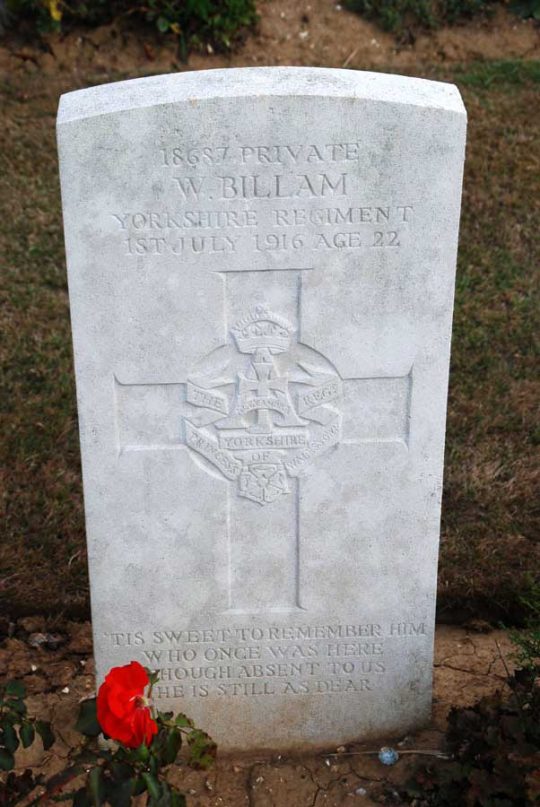
Submitted by Pam Reed – William was her first cousin once removed. William Billam was born Robert William Beckwith Earsdon in Jarrow on 17 September 1893. By 1906 his mother and stepfather Elizabeth and George Billam had moved to Hinderwell, 8 miles north of Whitby. In 1911 William was living with them and had taken his stepfather’s surname of Billam. In 1913 William married Ada Simpson and continued to live in the same village. On the outbreak of the First World War he enlisted on 15 August 1914 at Whitby as 12122 Private Billam in the 11th Reserve Cavalry Regiment. However on 1 November 1914 he was discharged as ‘being unlikely to make an efficient soldier’. Having failed to make the grade in the cavalry, he promptly volunteered for the infantry . At the end of 1914 he enlisted again at Whitby as 18687 Private Billam in the 2nd Battalion of the Yorkshire Regiment. William was killed on 1st July 1916, first day of the Battle of the Somme. He was buried in the Dantzig Alley British Cemetary in Mametz along with 2052 other British soldiers. His name is on the Hinderwell War Memorial. He left a widow and 2 year old daughter. Extract from the Whitby Gazette Friday 18 August 1916 as follows:- Killed in action on July 1st. Private William Billam, aged 22 years. He was the first to enlist from Hinderwell on August 15th 1914. “His country called and he answered”
Read morePrivate Percy Raworth
October 27, 2018
Percy Raworth was Judith Farrar’s grandfather’s cousin, she visited the museum to tell us his story. Percy Raworth was born in 1890 and attended Elmfield College in York. His father William ran a local building firm, and later became a local Councillor in Harrogate. By 1911 Percy was a Joiners’ apprentice and well on the way to joining the family firm. His career seems to have taken a side track as he was working as a ‘Stock Keeper’ at his brother-in-laws leather warehouse at Rushden, Northamptonshire when he enlisted. Originally a member of the Machine Gun Corps, Percy went on to serve with the Tank Corps, specifically, ‘D’ Brigade and win the Military Medal. The Rushden Echo of 10th November 1916 notes that he: Has been in action several times with the ‘Tanks’, once he was four hours under fire digging the ‘Tank’ out of a German dug-out into which it has sunk. On another occasion the ‘Tank’ caught fire, and Private Raworth and his driver got the military medal.’ Percy died on 23rd September 1917 of wounds he received during a German air raid. It seems that his tank again became grounded and whilst Percy was digging it out German aircraft attacked. Capt. F. A. Robinson wrote to Percy’s father: ‘…he was struck by an enemy bomb. He was made as comfortable as humanly possible under the circumstances, and you will doubtless find some consolation in the knowledge that he did not appear to feel very much pain……our experiences…
Read moreGeorge Ellis
October 31, 2018
Submitted by Pauline Blewis. George was born in Old Malton and joined the Green Howards in around 1905. In the same year he married Annie Hemstock, a Richmond girl. Their family of three sons and a daughter were raised in the barracks, now the Garden Village. George served during the Boer War and during the First World War was transferred to the 13th Battalion (October 1915)- the battalion was made up of ‘Bantams’. George served through the war up to the Battle of Cambrai. On 23rd November 1917 he was sent up to the front line with his battalion with the aim of taking Bourlon Wood and village. Tanks were sent in with the infantry following up, eventually the village was taken after hand to hand fighting. George died during this advance and while his body was never found his name is inscribed on Panel 5 of the Cambrai Memorial. After his death the family were moved from the barracks into a house inside Richmond Castle.
Read morePhyllis Margaret Jenkins
October 31, 2018
Phyllis was born in Dowlais, Glamorganshire, Wales in 1892, the daughter of Margaret Jane and David Thomas Jenkins. She joined the British Red Cross on the 21st of January 1918. Subsequently, she was stationed as a Voluntary Aid Detachment Nurse in the Other Empire Force, British Red Cross, Catterick Camp. Surviving photographs imply that Phyllis was part of the dental team stationed at Catterick. Phyllis volunteered at Catterick Camp until the 14th February 1919.
Read moreGeneral Sir E S Bulfin KCB CVO
October 31, 2018
Bulfin was born in Woodtown Park, Rathfarnham, Co Dublin in 1862. Although he attended Trinity College, Dublin, he did not take a degree, choosing a military career instead.He was commissioned into the Princess of Wales’s Own (Yorkshire Regiment) in 1884. After 30 years of service he became Colonel of the Regiment in 1914. As Colonel, Bulfin wanted the Regiment to stand out in the Army Lists with a more unique name. He pushed for the traditional nickname of ‘The Green Howards’ to be made official to differentiate between all the other ‘Yorkshire’ Regiments. He was finally successful in 1921, and the name lasted for the next 85 years.
Read moreThomas Cole
October 31, 2018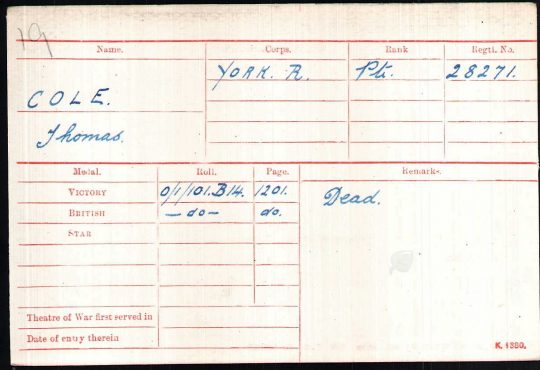
Submitted by Olivia Wallis of Richmond. Thomas Cole, son of Ben and Jane Cole, was born in Gainford, Durham in 1882, though the farming family resided in the local village of Newsham. On 9th June 1906, Thomas married Margaret Ellen Watson in St Cuthbert’s Church, Durham and, by 1911, Thomas and Margaret were the parents of Thomas, aged 3, Mary, aged 2, and Ben, aged only 11 months. Following the outbreak of war, though the exact date uncertain, Thomas enlisted at the neighbouring village of Dalton, and joined the 9th Battalion of the Yorkshire Regiment. Throughout his time with the 9th Battalion, Thomas wrote often to his devoted wife and children. In October 1916, Thomas wrote to tell his wife that he had become teetotal, news he expected to surprise his wife, explaining ‘I can’t drink French beer!’ Perhaps more poignantly, Thomas also expressed to Margaret his hopes of the future and a hope that future generations would never suffer the horrors of war. Thomas never got to pursue his hopes, he was killed on 23rd June 1917, aged 35. The battalion war diary for 23rd June does not detail events of that day, it simply collates casualties for the month as 6 men killed, 1 wounded and 2 missing. Private Thomas Cole is buried at Dickebusch New Military Cemetery, Belgium and commemorated locally on the war memorial in Newsham village.
Read moreBlackbird Baggott
November 1, 2018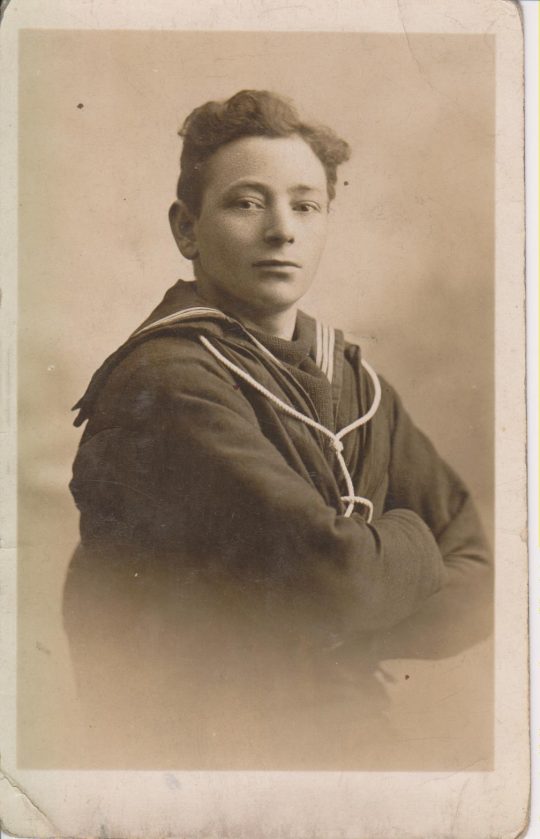
Howard Muckle a resident of Richmond for the last 50 years (via Corbridge and Newcastle) provided this story of his grandfather, Blackbird Baggott. Blackbird Baggott (named after his mother Jane Blackbird) joined the Hawke Battalion of the Royal Naval division in 1915 and served at Gallipoli as an infantryman between May and August that year. The British Royal Naval Division was made up of men from the Royal Navy and its reserve forces. These men, who were not needed at sea, fought on land alongside the Army during World War One. The records cover more than 50,000 officers and ratings who joined the Royal Naval Division or who passed through Crystal Palace, London when it was used as an initial training centre during the First World War. Blackbird was transferred to the Army Service Corps and then the Royal Flying Corps as a Fitter from 1916 to 1919. After being demobbed in 1920 he married and had two children but rejoined the RAF in 1923 (with service number 47402). He served with 1 Squadron, 55 Squadron in Iraq from 1926 – 28, and then 503 Squadron in the UK, with whom he was serving when he died in 1935. His death certificate stated Blackbird Baggott died of Malnutrition whilst based on a training camp at RAF Halton.
Read moreDavid Logan
November 1, 2018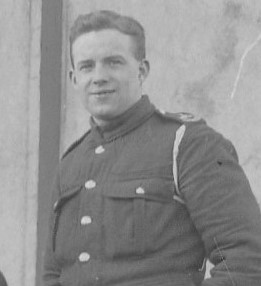
Mairi Featherstone visited the museum to see if we could find out a little about her grandfather, David Logan’s First World War service. After a some investigation, it became clear that he had been in the Royal Field Artillery. On of the original postcards revealed that he had been at Scotton Camp (it is inscribed with “Cooks and Waiters, Sergeant’s Mess, Scotton Camp, Yorks 19/6”), which was eventually absorbed into Catterick Camp during the war. No 5 TF Artillery Training School was based at Scotton Camp in 1915, which is the most probable reason for his time there. David’s medal card shows that he was in France by May 1915. There are two regimental numbers on his medal card, an early number, 971 referring to the Territorial Force RFA and a second reference 645569. 645569 Gunner David Logan was entitled to the 1915 Star, the British War Medal and the Victory Medal at the end of his war service.
Read moreErnest John Tyler
November 1, 2018
Deirdre Tyler of Richmond explained the story of Ernest (Ernie) John Tyler to us at one of our drop-in days. Ernie was born on 23 April 1880 in Edmonton, London. He served in the Royal Engineers 1914-1919, mainly with 29 Division and saw active service in the Dardanelles and the Somme. He embarked for his first active service on 2 June 1915. He was one of the few Royal Engineers aboard the “S.S. River Clyde” in 1915, when it was ill-fatedly beached at “V” beach, Cape Helles, Gallipoli, under the guns of the defenders. Six VC’s were subsequently awarded to the ship’s crew for their courage in maintaining the bridge and rescuing the wounded from the beach. Ernie subsequently spent time in Egypt and then at the Home Depot. He suffered from typhoid or enteric fever and as a result was granted home furlough from 29 February to 19 April 1916. He also caught malaria, being classed B,ii for six months as a result. He was awarded a Good Conduct Badge on 18 June 1917. Ernie lost two of his brothers in the Great War, one at Gallipoli, and another at sea. After the First World War, Ernie returned to his work in the postal service and was in charge of the first telegraph message motor cycle delivery riders. He had six children who survived into adulthood. Five served their country in the forces; four in the second world war and one post war. Bernard, his eldest son, was killed…
Read moreGardner Kennedy
November 1, 2018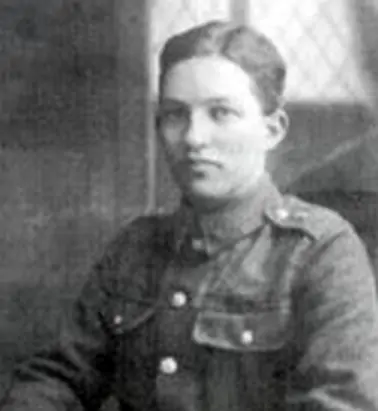
Helen Bennett visited the museum to tell us about Gardner Kennedy. (William Robert) Gardner Kennedy was my paternal Irish Grandmother’s first cousin. He was the son of Mary and William Kennedy of Ardbana House Coleraine, Northern Ireland. His father had an engineering firm. He was my Irish Grandmother’s cousin. (Annie Morton McMillan of Turnagrove Co Antrim) There is a very strong familial likeness between Gardner Kennedy and his Turnagrove cousins, most of whom I knew. Gardner Kennedy died on the Swaben Redout on July 1st 1916 which is where his regiment the Royal Iniskilling Fusiliers fought Reg no:18637. Lance Corporal, Machine Gun Corps (Infantry) 1st Battalion Royal Inniskilling Fusiliers. He has no known grave and is remembered on the Thiepval Memorial, and on the Coleraine War memorial, although on the latter his Christian name is incorrectly spelt. He enlisted on 5th October 1915. His brother, Lieutenant John Alexander Kennedy, survived the war. However further tragedy struck the family on 2nd March 1917 when the Kennedy family lost their only daughter, Mary Boddie, wife of Geoffrey W Boddie. Comment: About 1959 or 1960 I visited Edie Kennedy who (I presume) was Gardner Kennedy’s sister law at Ardbana House, a splendid detached house full of faded elegance. I met Jack, Edie’s son who was a wild child, liked building his own racing cars. Of Edie, I remember only a little old lady, shrunken but lively, sitting regally amongst the faded and cluttered Second Empire furniture in front of a huge fireplace with…
Read moreGeorge Ernest Hurwood
November 1, 2018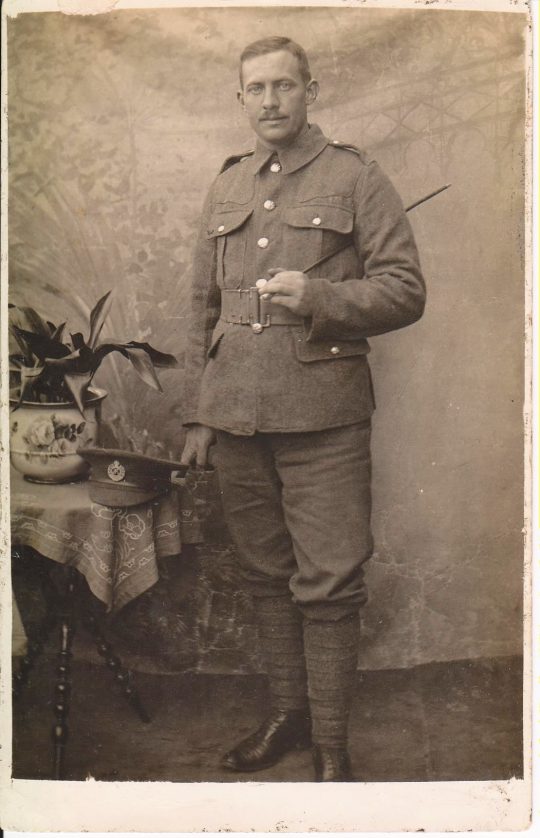
Vicky Hurwood provided this information about her grandfather, George Ernest Hurwood. He was born on 19 November at Scorton 1880 to Richard and Mary Hurwood. He worked for the Post Office with his father. When the war broke out George would enlist as a Sapper in the Royal Engineers, his Regimental Number being 67828. His medal card gives his ‘Theatre of War’ as France where he had arrived on the 7th October 1915. He was awarded the 1915 Star, which means he enlisted before conscription was introduced, along with the British War medal and Victory medal. George made and engraved match box covers recording Ypres 31/7/17 and Arras 9/4/17 which Vicky still has at home. He survived the war and is commemorated on a list at the Scorton War Memorial Institute. He ended the war as a Sergeant and from his demobilisation on the 30th June 1919 became a Class Z Reserve.
Read moreWilfred Wood
November 1, 2018
Wilfred Wood, an employee of the North Eastern Railway before the outbreak of war, served with the 5th battalion of the Yorkshire Regiment. His commanding officer, 2nd Lt G H Smith wrote the following to his father: “Dear Mr Wood – It is with deep regret that I inform you of the death in action of your son, Pte. W. Wood. He was instantaneously killed on the morning of the 19th instant by a whizz-bang shell, which dropped into the trench he was in; he was buried behind the line on the 20th, and a good cross is being erected to his memory. Words cannot express how deeply I feel for you in your great loss. He was a good soldier, and always kept up bright spirits. The men of my platoon join me in the deepest sympathy for you” 240637 Private W Wood died on 19 July 1917 and is buried at Heninel Communal Cemetery Extension.
Read moreGeorge Johnson
November 1, 2018
Edith Purkiss wanted to tell us about her father’s war service. George Johnson Junior was a Richmond lad whose father, also called George had seen active service in Egypt with the West Yorkshire Regiment. The 1911 census shows George Jnr was working as a groom and living in Richmond at 20 Bargate along with his parents and siblings. George Jnr enlisted into the Yorkshire Regiment on 3rd September 1914. Having survived the First Battle of the Somme unscathed he was later injured at the Second Battle of the Somme in 1918. He lay in no man’s land for a considerable amount of time, wounded, until he was carried to safety by Mr Buchanan who later became manager of Timothy Whites & Taylors chemist shop (now Boots). George was severely wounded in his right leg and left arm, and was sent to a convalescent hospital in Sheffield to recover. His wounds were so severe that he was discharged, aged 24 years on 26th June 1918. Although he survived, George suffered from ill health due as a result of his wounds all his life. Ironically, he was finally granted a war pension of the day he died, 15th June 1959.
Read moreGosnay William Riley
November 1, 2018
Diane Hawthorne sent in a request for us to look into her grandfather’s First World War service – this is what we managed to discover. Gosnay William Riley attested on 10th December 1915 into the 11th Battalion Yorkshire Regiment at Brighouse and was assigned the regimental number 27654. The 11th was a Home Service Battalion dealing with Drafts and Reinforcements. In September 1916 the 11th amalgamated with the 16th Durham Light Infantry as a Training Battalion thereby losing its distinct identity. At some time prior to this Gosnay transferred to the 10th Battalion Yorkshire Regiment. He had been promoted to the rank of Corporal. Sometime thereafter he transferred to the 9th York and Lancaster Regiment. His Regimental number was 34441. On the 3rd March 1919 he became a reservist in the British Army with many thousands of others.
Read moreHenry Manning
November 1, 2018
Vicky Hurwood visited the museum recently, amongst her stories was one about her grandfather Henry (Harry) Manning. 165485 Gunner Henry Manning enlisted on 6 September 1916. From his Service Record, he served with the Royal Army Service Corps for a year and 160 days and with the Royal Field Artillery for two years and 335 days. His service was undertaken in Salonica, but his record also indicates 75 days in South Russia, as part of the British force involved in the Russian Civil War (Britain aimed to thwart the Bolshevik revolution and was keen to control the oil reserves at Baku). Harry left Russia due to suffering from malaria. Vicky recounts that her grandfather was once wounded in the leg, recovered and was sent back to the front, here he found that his goat (which he kept for milk) had been eaten by his mates! He told stories of the wet and mud and fungi growing on his clothing. Also of great sacrifice. By luck his unit were camped on the top af a ravine, when the rains came hard. By morning the ravine had filled up and men, horses, gun carriages were all being swept away by the torrent. This all just seemed just like a story to Vicky at the time he told her this. For his service Harry was awarded the British War medal and Victory medal.
Read moreHarold Moore
November 1, 2018
Harold Moore was born around 1898 at Mirkport near Hawes, with his twin sister Hilda. He was the second youngest of a family of ten children to Richard and Mary Moore. In 1901 they were living at Mirkpot Farm on the Hawes-Ingleton road where Richard was a farmer and stonemason. By 1914 they were living at Catriggs Farm near Hawes. Harold enlisted in Leyburn in May 1918 joining the 9th Battalion Yorkshire Regiment. He arrived in France on October 11th, just one month from the Armistice and the cessation of hostilities. As Harold joined his Battalion, it had just come out of front line action in the Premont area between St. Quentin and Cambrai. A week later on the 24th October the Battalion was involved in capturing a machine gun post in a wooded area. During this action Harold, along with a number of other casualties, was severely wounded and later died. He had been in the war just 13 days. Private Harold Moore is buried in the Premont British Cemetery SE of Cambrai. He was just 20 years old.
Read moreJohn Francis Allan
November 1, 2018
John Francis Allan (pictured here as a child) was Vicky Hurwood’s great uncle. He was born in Richmond on 7 December 1886, the fifth son of Leonard and Mary Allan. During the First World War he served as Stoker Petty Officer J F Allan K/89 aboard HMS Formidable. Following the outbreak of World War I, the ship was part of the 5th Battle Squadron which conducted operations in the English Channel. The ship and her men were was based at Portland and then Sheerness to guard against a possible German invasion. Despite reports of submarine activity, early in the morning of 1 January 1915, whilst on exercise in the English Channel, Formidable sank after being hit by two torpedoes from U-24. The loss of life amounted to 35 officers (including the Captain) and 512 men from a compliment of 780. She was the second British battleship to be sunk by enemy action during the First World War. Stoker PO John Allan has no known grave and is commemorated on the Chatham Naval Memorial and Richmond War Memorial.
Read moreJohn Stoney
November 1, 2018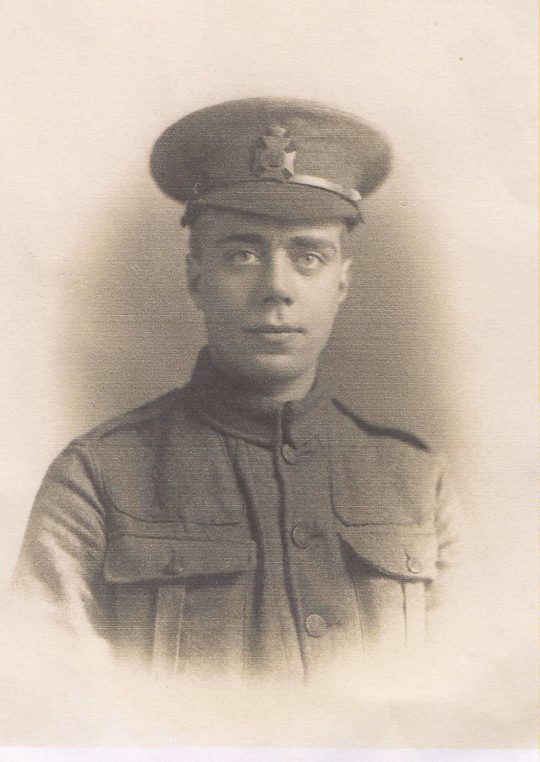
Judith Farrar visited the museum to tell us about Rifleman John Stoney, the uncle of her husband, Don. John enlisted as R/41447 Private J Stoney, King’s Royal Rifle Corps, and was attached to the 9th battalion, London Regiment (Queen Victoria’s Rifles). The final letter from John to his sister, Hilda still survives. The letter of 12th June mentions many things – a royal visit to Leeds, his hopes that his sister is selected for the school cricket team and the fact the locals in France ‘won’t even let us get water from their pumps.’ A key passage states ‘I was sorry to hear about the explosion at the munition works and hope the casualties are not so heavy as you say they are reported to be.’ He died tragically close to the end of the war, aged 18 on 25 August 1918 and is remembered at the Memorial in Vis-en-Artois.
Read moreJoseph Stoney
November 1, 2018
Information from Judith Farrar which relates to her husband Don’s great-uncle. Joseph Stoney’s occupation before the war as a stonemason, a skilled trade which places strenuous demands upon the worker’s hands. This was of some consequence following his attempt to enlist at the start of the First World War. He had previously been a territorial soldier with the West Yorkshire Regiment and when war broke out he naturally offered his services to his former regiment. His record shows that he was accepted, but that after only sixteen days he was discharged. The medical discharge paper records ‘Deformity of both thumbs, rheumatoid arthritis. Loss of gripping power. General debility.’ This judgement is reinforced by a second comment in a second hand, ‘Not likely to become an efficient soldier.’ This judgement did not deter Joseph from trying again, as his medal card attests. He managed to join the 1st Battalion, Yorkshire Regiment as 21581 Private J Stoney and was awarded the British War medal. Unfortunately John died either on the way out to India where the battalion was stationed, or when returning on leave. John died from dysentery on 10 May 1917 and is buried in the Cape Town (Maitland) Cemetery. His headstone appears to record the correct regimental number, but displays the West Yorkshire badge, rather than the Yorkshire Regiment.
Read moreSeptimus Allan
November 1, 2018
Vicky Hurwood’s great uncle, Septimus Frederick Herbert Allen was born in Richmond on 1 December 1891. He was the seventh son of Leonard and Mary Allan. He was awarded the 1915 Star and so joined the British Army before the introduction of conscription. Arriving in France on 25 January 1915, he initially served with the Army Service Corps before being transfered to the 9th battalion, Northumberland Fusiliers. 48457 Private Septimus Allan was Killed in Action on 25th November 1917 and having no known grave he is one of the 35,000 men commemorated on the Arras Memorial. His name is also listed on the Richmond War Memorial.
Read moreJoseph Whitwell Bainbridge
November 1, 2018
Information submitted by Mrs Audrey Grundy. Joseph Whitell Bainbridge was born in 1896, his family ran Bainbridge’s Drapers Shop in Richmond Marketplace. Which occupied the building where Penley’s stands today. He was a territorial solider with the 4th battalion of the Yorkshire Regiment prior to the outbreak of the First World War and appears to have rejoined as a volunteer with the same battalion after the conflict started. Joseph arrived in France with the 4th battalion on 18 April 1915. His territorial regimental number (2370) was later revised to 200533. His war service led to the award of the 1915 Star, the British War medal and the Victory medal. Joseph’s older brother, Thomas Lawrence Bainbridge (also of the Yorkshire Regiment) was killed during the Battle of Arras on 23 April 1917. He had been awarded the Military Medal for bravery in the field.
Read moreThomas Tidyman
November 1, 2018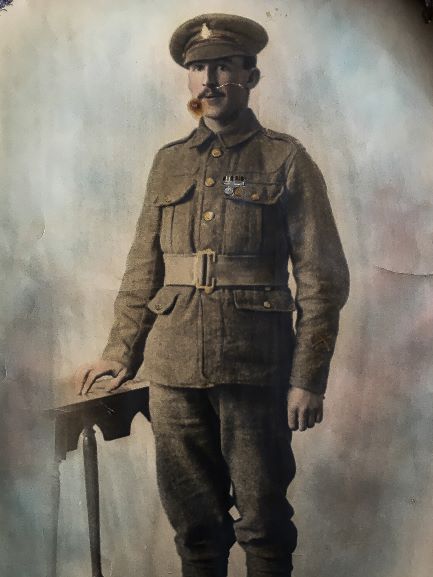
Information submitted by Lynne Pengelly. Thomas William Tidyman known as Bill (although this may have only been after he moved to Bradford) Born 1st November 1896 in Norton, Stockton on Tees the 2nd child, eldest son of John and Mary Tidyman The 1911 census shows him living and working on a farm in Agglethorpe (possibly Brecongill) with his parents and 6 siblings, his older sister is listed as a diarymaid. He enlisted on 24th May 1918 at the age of 23 into the 9th battalion of the Yorkshire Regiment and was wounded by a gunshot in his right forearm sometime in September 1918, he was transferred to the Bangour War hospital in Edinburgh and was discharged on 19th June 1919. Carl at the Green Howard’s museum was able to tell me that my grandad had been a marksman when he saw the badge on his uniform and also explained about the silver war badge given to injured men to wear after they had been discharged as unfit for further war service. After the war he returned to the farm his father died in 1920 and his mother died in 1927, at sometime he met my grandma who was visiting some friends who had relocated to Coverdale and they were married in Bradford on 7th December 1929. He was a tenant farmer at Harrop Edge Farm in Allerton Bradford until 1942 and then the family moved to Allerton village and he had a milk round. He worked for the War Ag…
Read moreWilliam Bowman
November 1, 2018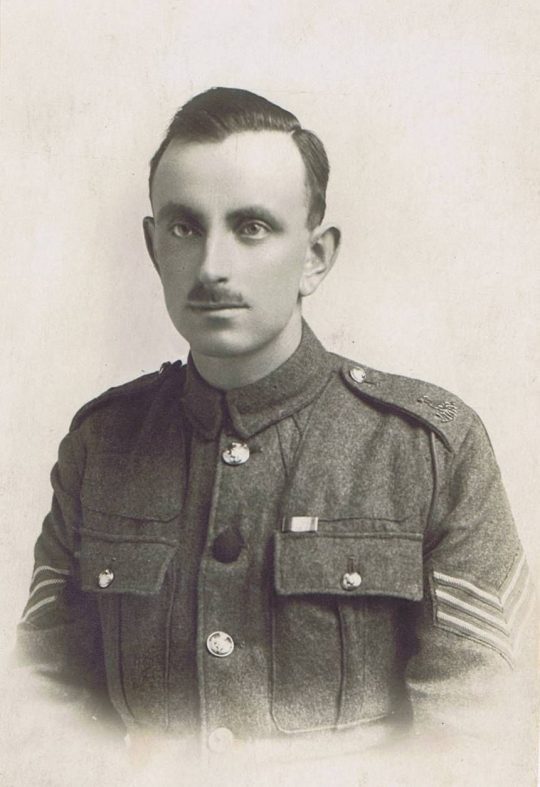
Not much is known about the service of Sergeant William Bowman of the Yorkshire Regiment. However, Stuart Hodgson a volunteer at the Green Howards Museum noticed something slightly unusual when he came across a photograph of William. The second button on his tunic is covered in black material. There is a good deal of evidence which suggests that some soldiers who had lost relatives during the war started wearing a black button on their tunic, or sometimes a button wrapped in black crepe. This was probably an un-official practice and a blind eye was turned. However, evidence in an Eastern Command Order (1593) of August 1918 states: “Mourning wearing of, by Non-Commissioned Officers and men. The practice by Non-Commissioned Officers and men of covering the second button of the service dress jacket with black material as a symbol of mourning is irregular and will cease forthwith. (War Office Letter No. 54/ Gen No./3025 (QMG 7) dated 19th July 1918)” We do not know who was being mourned, but it appears that William Bowman survived the Great War.
Read moreCapt Frank Walker MC
November 2, 2018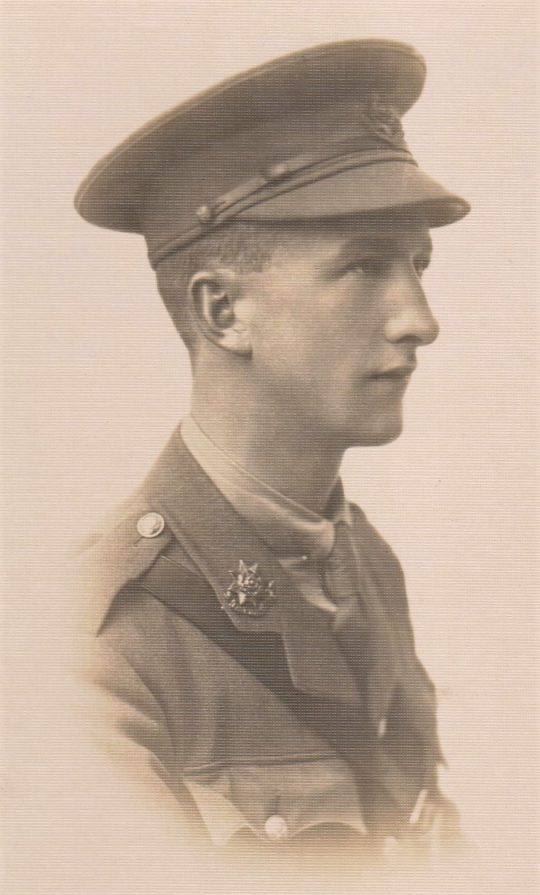
Frank Walker joined the 4th (Territorial) Battalion East Yorks in Sept 1914. He served as a private in France until being commissioned 2nd Lieutenant in July 1916 with the 11th Battalion East Yorks (2nd Hull Pals). During the 1st Battle of Ypres in April 1915 the 4th Battalion East Yorks were mentioned in a dispatch from Major General Edward Bulfin (Yorkshire Regiment Green Howards) the Commander of the 28th Division. Also mentioned for ‘good service’ in the dispatch were the 8th Battalion Durham Light Infantry and the 4th Battalion Yorkshire Regiment. Frank was promoted to temporary Lieutenant in January 1918 and acting Captain on the 14th October 1918. Frank would survive the war. In November 1917 the Battalion were based at Mont St. Eloi near Arras. It was here leading raiding party action that, in January 1918, Frank would be awarded Military Cross. The award appeared in the London Gazette on the 23th April 1918. The citation read: ‘For conspicuous gallantry and devotion to duty during a daylight raid. He led his party across a long open stretch of ground to the enemy second line. After clearing the enemy trenches and taking prisoners he successfully effected a difficult withdrawal under heavy fire.’
Read moreBert Brocklesby
November 2, 2018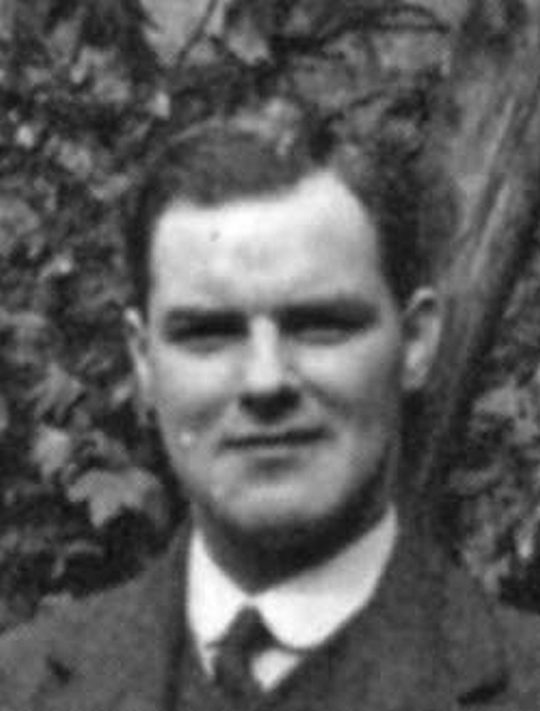
Bert Brocklesby, a school teacher from Doncaster, applied for exemption from military service early in 1916 on religious grounds. Bert went before his local and appeal Tribunals in February and April 1916, and was given exemption from Combatant Service Only by both. To Bert, this was an unacceptable decision – joining the Army, even in a Non-Combatant role meant going against his deeply held conscientious belief that war in all forms was a crime. He was arrested as an absentee after refusing to obey the order to report to his nearby barracks to be enlisted into the Non Combatant Corps. Bert refused to compromise his principles in any way, and did not even take the step of signing his Army papers – denying the military authorities even this rudimentary control over his life. For making this stand, and for disobeying other orders, Bert was Court Martialled and would soon become one of a group of Absolutists (known as the ‘Richmond 16’) sent to France from Richmond Castle, Yorkshire, as military prisoners. It seems that Bert managed to drop a cleverly edited field service postcard out of the train while being transferred to France for further punishment. This postcard alerted Bert’s local MP (who sympathised with the principles behind Bert’s objection to military service) that men were being transferred to the combat zone, where, considered to be on active service, they could be sentenced to death for disobeying orders. Bert would find this out on arrival at Henriville Camp, Northern France….
Read moreRegimental Chapel, St Mary’s Church
November 2, 2018
In 1930 St Mary’s Parish Church offered the Lady Chapel as a memorial chapel for the Green Howards. This gift recognised that for over a century St Mary’s had been the garrison church for the regiment. The church already held the Green Howard’s Book of Remembrance for those who had been killed in the First World War, the regiment’s old Colours (Regimental flags) and many individual memorials. Fundraising began in 1931 but the economic depression made for a very challenging campaign. In August £386 had been raised but in September the regimental magazine noted, ‘Subscriptions to the Chapel fund have been most disappointing. In view of the present depressing state of the country this is not altogether surprising, but the Committee most earnestly appeal to all Green Howards to do their utmost to assist in completing the Chapel as a tribute to those whose memory it will perpetuate.’ The cry for assistance was heard and by the end of 1931 a date of Sunday, March 13th 1932 had been set for the dedication of the Chapel. The dedication service was led by the Bishop of Ripon. In his sermon he praised the Green Howards for providing a, ‘special place of prayer. It was a reminder that the war has a spiritual and Godward side, and taught them, among other things, the hopelessness of materialism as a way of life.’ As well as housing the Book of Remembrance the chapel also includes a number of items given in memory of soldiers…
Read moreHenry Tissiman
November 2, 2018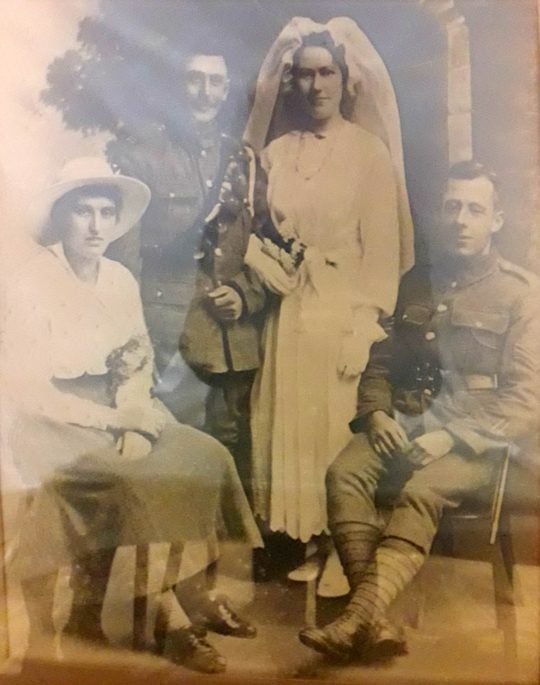
Carol Sheard of Richmond shared these details with us about her grandfather. Henry Tissiman was born on 10 July 1892. Aged 22, he enlisted on 12th April 1915 at Scarborough as L/12208 Driver H Tissiman with the Royal Field Artillery. He was posted to ‘C’ Battery, 161 Brigade. He went to France on 30th December 1915 from Liverpool and landed at le Havre. He suffered the effects of gas and was briefly hospitalised on 28th February 1916. His service record details that he was granted leave to return home 17th September 1918 until the 1st October during which time he married Emily Guest. This photograph was taken on their wedding day, 21st October 1918. He died on 30th July 1992 at Harrogate.
Read moreMarlein Family
November 2, 2018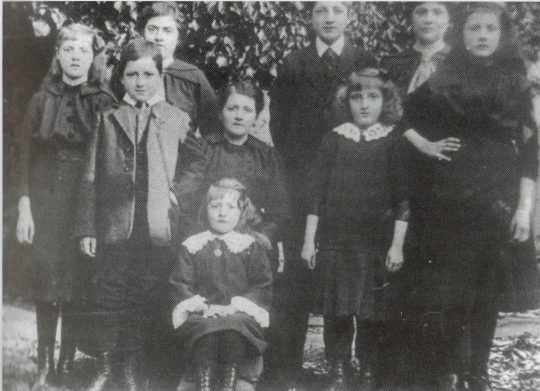
The German invasion through Belgium at the outset of WW1, as part of the infamous Shleiffen plan, resulted in the inevitable refugees. Of these refugees it is estimated that about 250,000 would end up spread throughout the British Isles. One of these families would arrive at Hawes station and take up residence in nearby Gayle: the family Marlein. Charles Marlein was from Ostend and was a sailor on the mail steam ships that crossed the channel between Ostend and Dover. During his spare time in Ostend he led an accordion band and would even entertain the passengers who travelled on the ships. As war gripped Belgium the family travelled to the safety of England. Charles, his wife Natalie and children Emmerance, Margaret, Elvier, Madeleine, Theophiel (Phil) and Francis eventually settled in Gayle. Their eldest son, Auguste, was fighting in the Belgium Army and would later die for his country. The family was billeted at Clint’s House, Gayle. The local people rallied round to support them by supplying them with furniture, bedding, crockery and the like. It was a kindness they never forgot. Two of their daughters found work with a local tailor called Martland. Sadly, their youngest son Francis died from tuberculosis and was buried at Hawes. In early 1919 the Marlein family returned to Belgium but Phil could not settle. He returned to the Dales and worked for a farmer at Swathgill Farm. He married a local girl and settled in Gayle where Phil worked delivering animal meal to…
Read moreOtto Wedgwood
November 2, 2018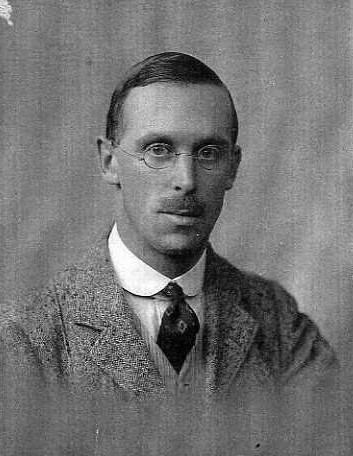
Otto Wedgewood was born in July 1882 at Bredgar in Kent to Rowland and Annie Wedgwood. He was a descendant of Thomas Wedgwood, the elder brother of the famous potter Josiah Wedgewood. Otto was one of six children. The 1891 census has Otto’s father’s occupation as ‘living on own means’ and was successful enough to employ two servants. The 1901 census shows Otto was living at the home of his nephew George Maxstead in Hornsea Yorkshire. Otto at the time was an Engineer Apprentice. On the 24th October 1914 Otto embarked from London to Bombay in India. His occupation on the passenger list is given as ‘Expert’ and presumably the trip was work related. It is not certain when he returned to Britain. However, it probable that he felt he had to ‘do his bit’ for the war effort and so came home. He subsequently joined the Royal Engineers. From the 4th May 1917 he served with CRE IX Corps. The London Gazette of the 4th December 1915 details Otto attaining the rank of 2nd Lieutenant. By the end of the war he was a Captain. Otto spent time in Canada in the early 1930s but by 1939 he was back in England working as a Cement Works Manager at Gravesend in Kent. In 1944 he married Stella Vincett in Chatham. Otto died on the 23rd May 1957 and was cremated five days later at Greenwich in London. He was 74 years old. Otto’s Granddaughter, Jeanette Schofield, in Richmond.
Read moreThomas Henry Wright
November 2, 2018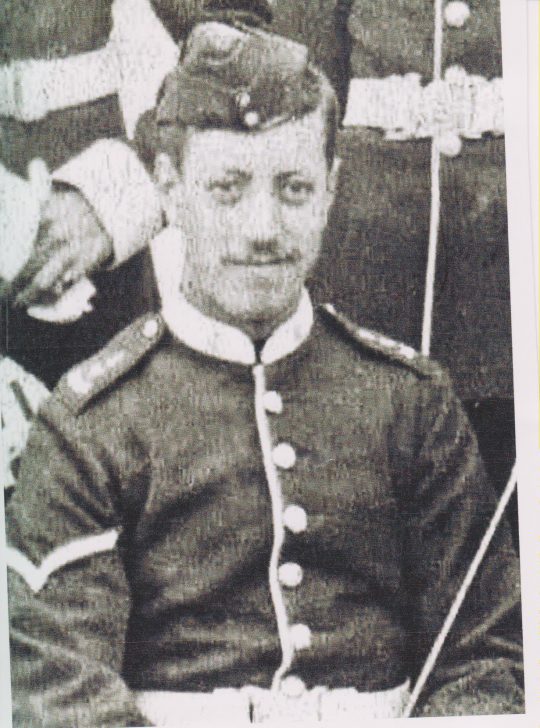
Lorna Pound visited us on one of our drop-in days to share the story of her grandfather, 58755 Sapper Thomas Henry (Harry) Wright. Harry was born in Richmond on 18 October 1878. At just 14 years old he attempted to enlist with the West Yorkshire Regiment in York on the 2nd November 1892, claiming he was 18 years old. Eight days later he was discharged with a payment of £1. In the face of this set back he continued with his apprenticeship as a saddler with Mrs Rymer in Northallerton. It is likely that he re-enlisted again sometime after reaching the age of 18 years as a photograph taken in the early 1900s shows him in uniform as a Lance Corporal. In 1918 he married and was still employed as a saddler with H Myers in Richmond Market Place. On 26th December 1914 he presented himself for enlistment into the Royal Engineers. It is said within the family that he was told if he enlisted early he could keep his trade of saddler whilst serving. Sadly Sapper Wright’s papers did not survive the bombings of the Second World War and therefore it is not known which unit he originally served with but he was initially sent to Egypt on 7th August 1915. He certainly served in France for some time as numerous embroidered cards survive which he sent to his wife and children. By the end of the war in 1918 he was serving with 5 Corps Signals Company Royal…
Read moreRees Brothers
November 2, 2018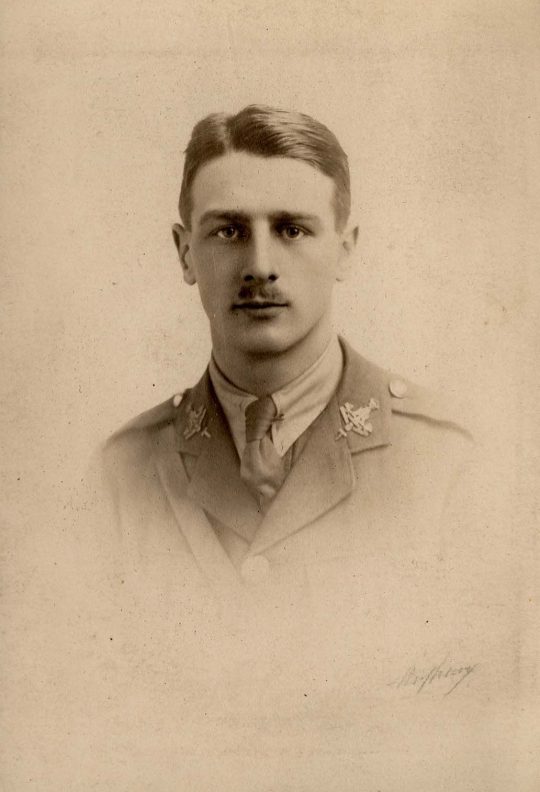
George Frederick Gywn Rees and his younger brother Charles Bernard Russell Rees from Leicestershire both joined the Yorkshire Regiment during the First World War. Their parents, Sydney and Margaret Rees were relatively wealthy and they lived in Sheffield for much of their childhood. Sydney was a Church of England clergyman. Born only 1 year apart, George in 1895 and Charles in 1896, it would appear that they took similar paths through their early life. In the 1911 census they were both recorded as living at a boarding school in Workshop along with several hundred other boys. George and Charles both joined the 5th Battalion of the Yorkshire Regiment in 1915. Unfortunately their service records do not appear to have survived but museum records track their military careers from 1915 to 1918. George was wounded twice, in November 1916 and in June 1917, but neither wound appears to have affected his career as he was promoted to acting Captain in July 1917. Charlie however appears to have made it through the war relatively unscathed. Other than various promotions he is not listed until June 1918 as missing, turning up as a Prisoner of War in September. He returned home in late 1918 to Scrayingham Rectory, Stamford Bridge, York. Charles’ medal card records that he received the Victory Medal and the British War Medal. Both brothers survived the war but we do not know what happened to them later in life.
Read moreAlfred Martlew
November 2, 2018
Alfred Martlew was a member of the No-Conscription Fellowship and the Independent Labour Party. He was uncompromising in his stance against the war but despite his protestations he was ordered to join the Non-Combatant Corps. He was one of the 16 men sent from Richmond to France in May 1916. After returning to England, Martlew was imprisoned at Winchester before being offered a place on the Home Office Scheme. This gave ‘genuine’ and ‘sincere’ conscientious objectors the opportunity to undertake civilian work under civilian control as an alternative to time in prison. Martlew worked in the quarry at Dyce Camp, spinning at Wakefield Work Centre, West Yorkshire, and tree felling in Dalswinton, Dumfries. But like many other conscientious objectors he questioned whether the work he was performing was still contributing, if indirectly, to the war effort. In 1917 Martlew went missing from his Home Office Scheme post and travelled to York where, before the war, he had been a ledger clerk at Rowntrees Cocoa works. There he met his fiancée, Annie Leeman. He gave her his money, watch and other possessions, and told her he intended to hand himself in to the police authorities. This was their last meeting. Just over a week later Martlew’s body was found in the River Ouse at Bishopthorpe. Although the inquest into his death returned the unresolved verdict of ‘found drowned’, the coroner thought it likely that he had taken his own life.
Read moreAlfred Myers
November 2, 2018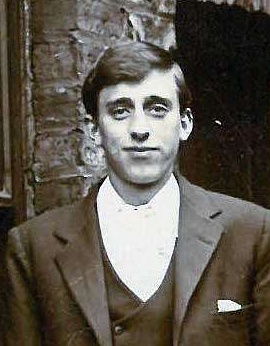
Alfred Myers came from a large family in East Cleveland and before the war worked with two of his brothers in the ironstone mines. A member of the Independent Labour Party and a devout Wesleyan Methodist, he played a key role in his local community. He was a tenor in the Wesleyan Carlin How choir, a Sunday school superintendent and trustee of the local church. Myer’s service record survives and records the process of his arrest and sentencing in cold, hard terms. One month after his posting he was arrested and court-martialled. Initially he was sentenced to death but this was commuted to 10 years imprisonment. At his hearing for exemption from compulsory military service, Myers asserted his belief in an international brotherhood of man, and stated that he ‘could not conscientiously kill, nor assist in killing’. But like so many others he was only granted exemption from combatant service and was sent to the Non-Combatant Corps at Richmond Castle. In the cells at Richmond, Myers’s tenor voice was put to good use. With two other conscientious objectors, Brocklesby and Gaudie, he sang the hymn ‘Nearer My God to Thee’ in three-part harmony. Myers’s performance wasn’t as perfect as the other prisoners hoped, however – they had to bang on the cell floor to keep him in time. Following his ordeal with the rest of the Richmond Sixteen in France, Myers was sent first to Dyce Camp, near Aberdeen, and then Maidstone prison. Others of the Richmond Sixteen were also…
Read moreHorace Stoney
November 2, 2018Horace Stoney was born on 7th December 1897. He was baptised in February 1898 at the Free Methodist Chapel, in Leeds close to where they were living at the time. At the age of 13 he was working as an office boy for an engineer and living at home with his parents in Leeds. On 10th December 1915, three days after he turned 18 Horace went to Leeds, joined the Royal Army Service Corp (RASC) and was posted to the Army Reserve. His service record includes the statement: “Transferred to Learners’ Section” on 10th October 1916. A contract survives, signed by Horace the day previous, declaring that he joined the RASC with a view to be trained as a Motor Transport Driver. Success would guarantee him an additional 1 shilling per day in pay, and provide him with a skill to use after the war. The RASC ensured that ammunition, food and equipment was delivered forming a complex supply network. Horace survived the war, although he contracted malaria, and was discharged in 1919. The 1939 Register lists him as living with his parents, John and Sarah, and his aunt Harriet, at his childhood home in Leeds. He was working as a Clerk Store Highway Constable and although he is listed married, his wife is not mentioned on the record.
Read moreHowson Brothers
November 2, 2018
Three members of the same family served with the Lincolnshire Regiment. Seth William George Howson served with the regiment and received both the Queens South Africa and the Kings South Africa medals for his service during the South African Wars 1899-1902. He survived and is listed as living in Lincoln in 1911 along with his wife Elizabeth and his two sons George William and Arthur Balfour. Both his sons served with the Lincolnshire Regiment during the First World War. Sgt George William Howson, the elder son, worked as a labourer and painter prior to joining the war effort. He served with C Coy of the 1st and 4th Battalions of the Lincolnshire Regiment. Sadly he was killed on 13th October 1915. He was awarded the Victory Medal and the British War Medal posthumously and his effects were left to a Miss Sarah Ann Petty. We do not know how Miss Petty and George were related; was she a family relation or a future wife? CSM Arthur Balfour Howson MM survived the war and was awarded a Military Medal and a silver war badge in addition to the First World War medal trio. The Military Medal was awarded for bravery in battle, but no citation survives to describe the specific action for which Arthur received his. Aged 23, Arthur married Emma Eliza Stanford in 1916 in Lincoln. He worked in the manufacturing sector after the war, and is listed as in charge of Stationery & Mailing depots on the 1939 Register….
Read moreJames Allen
November 2, 2018
Judith Farrah told us about her great-grandfather James Allen, who’s joinery business contributed to the war effort on the Home Front. “James Allen was born in 1855 in Newbiggin, Richmond. He was originally called James Thistlethwaite but changed his name to Allen, which was his stepfathers name. He apprenticed with William Raworth, learning to be a joiner, and married his daughter Matilda. By 1901 he had set up his own joinery business known as James Allen & Son Ltd and worked on the Kursaal (later known as The Royal Hall) in Harrogate.” During the First World War, James did not join the armed forces but used his joinery business to create boxes for munitions. Static trench warfare required huge numbers of shells; the First World War became a war of production. Hundreds of manufacturing companies, including James’, were commandeered for munitions production. As men were sent to the trenches, women moved into the factories. Some factories’ workforce was almost entirely female, and this was true for James’ business.
Read moreWilliam Smith
November 2, 2018
Maureen Hunt told us about her grandfather, William Smith. William was born around 1883 in Wirksworth, Derbyshire and worked as a bath attendant at Matlock before the war. He volunteered early in the war and possibly joined the High Peak Rifles (later 6th battalion, Sherwood Foresters). He recounted to his family the horrors of war, having fought at the Battle of Ypres. Later in life he complained of chest pains as a result of having been gassed in the trenches. He was taken prisoner by the Germans on 21 March 1918, during the German Spring Offensive. He did not return to England until 1919. Gardening became a favourite pastime, helping him to cope with the mental and physical scars of war. William died in 1962 at almost 80 years of age.
Read moreMatthew Bell
November 2, 2018
Matthew Bell was born in West Scrafton, Coverdale on 21 October 1895. He served with the Yorkshire Regiment, initially joining before the war with the 4th Territorial Battalion, probably around 1912 according to his regimental number (3899). He later served with the Duke of Wellington’s Regiment (235593) before returning to the Yorkshire Regiment later in the war. He went to France on the last day of September 1915 and survived the war, being awarded the 1915 Star, the British War Medal and the Victory Medal for his service. Matthew died aged only 40. Two of his children are still alive and living in Leyburn but they don’t remember him. His youngest child was born posthumously which must have been very hard for his widow.
Read morePercival Dunning
November 2, 2018
Percival Dunning was born in 1889 in Thormanby Yorkshire. By 1901 he is listed as Perewal Dunning residing in Coxwold Easingwold. He is living in his grandfather’s (Frances Dunning) house who is a plate layer ganger with North eastern railways. A plate layer’s job was to inspect and maintain railway tracks. Percival attested in Richmond on the 26th of February 1906, at that time his occupation was as a farm labourer. He was 17 years of age, weighed 114 pounds, and had hazel eyes and brown hair. It was noted in the ledger that he was flat footed and had an old injury to the end of his right long finger. He was initially posted to the 4th battalion. In the regimental gazette he is recorded as being wounded towards the end of 1915. The 2nd Battalion were deployed in the Givenchy and Essars area. The Commonwealth War Graves Commission states that Private Dunning was killed in action on the 7th of June 1917. He is commemorated on the Menin Gate Memorial (panel 33). He also remembered on the memorials at St Michael’s church Coxwold and the King’s book at York minster.
Read moreMajor H C Matthews
November 5, 2018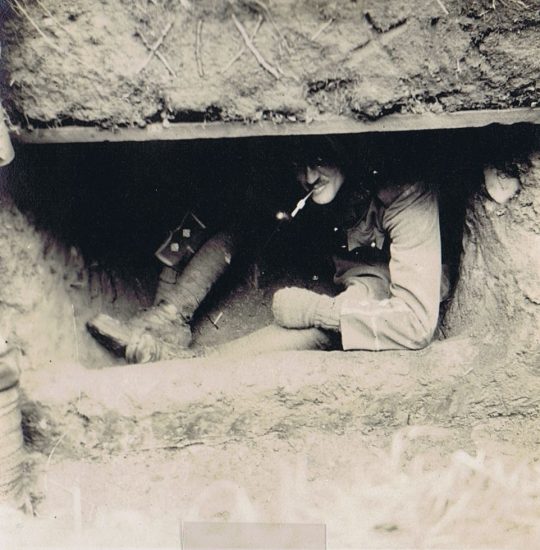
Major Harold Carey Matthews was born in 1879, son of F W W Matthews, he went on to join the 4th Battalion Green Howards where he acted as subaltern during the Second Boer War. After retiring from the military he worked for Barclays Bank at Leyburn, where his father also worked. When World War One broke out he re-enlisted with the Green Howards and was promoted to Major, on 29th August 1914. He was killed in action on the 25th April 1915 near Ypres and is buried at Sanctuary Wood Cemetery, Belgium.
Read moreHerbert Mills
November 5, 2018
Submitted by John H Mills – who wanted to tell the story of his grandfather. Herbert Mills was born on 16th May 1879 in Huddersfield, Yorkshire, four months before his parents were married. Shortly after the marriage his mother and father separated his father got into trouble with the Law, abandoned them and departed for America. Herbert and his mother went to live with her parents. In 1891 he was still living with his grandparents and in 1911, age 31, he was living with his Aunt (his mother’s sister). He married in 1913 and had a son in 1914. His son went on to join the RASC in 1939. Herbert, age 35, volunteered in Lord Kitchener’s “Volunteer Army”. He had been married less than two years and had a one year old son. He was a Power Loom Weaver in a woollen mill. He enlisted in Huddersfield on 4th June 1915. His Attestation puts him in the Royal Army Medical Corps as a Mental Assistant and posted to RAMC 92nd Field Ambulance Unit, Crookham, Aldershot. He was posted to the, 15th Northumberland Fusiliers in August 1915. From August to September 1915 he was stationed at Hamersley, Physical Training Base Aldershot, and from September 1915 to March 1916 at Rugeley Camp, Cannock Chase. Rugeley Camp was a training camp which replicated the trenches in France and was used for training soldiers prior to embarking to the Front Line. He was promoted Corporal in November 1915. In March 1916 he was posted…
Read moreJohn MacKenzie
November 5, 2018
Elspeth De Montes told us about her grandad John MacKenzie, a carpenter, who was called up in August 1914. “John had been working as a carpenter for James Bryce in Clephanton since April 1910 when he was called up on 4th August 1914. He enlisted with the Highland Mounted Brigade at Nairn eventually being posted to to Egypt in 1916. He worked chiefly on the wagons, greasing and making slight repairs but he also saw action throughout his time in Egypt. During an air raid at Ramleh on 27th November 1917 5 men were killed along with approximately 100 horses.” John survived his time in Egypt, returning home on 4th April 1919. He kept some of his equipment in the Princess Mary Tin he received during his service. Elspeth still has his Princess Mary tin. He passed away in 1980.
Read moreJohn B Lishman
November 5, 2018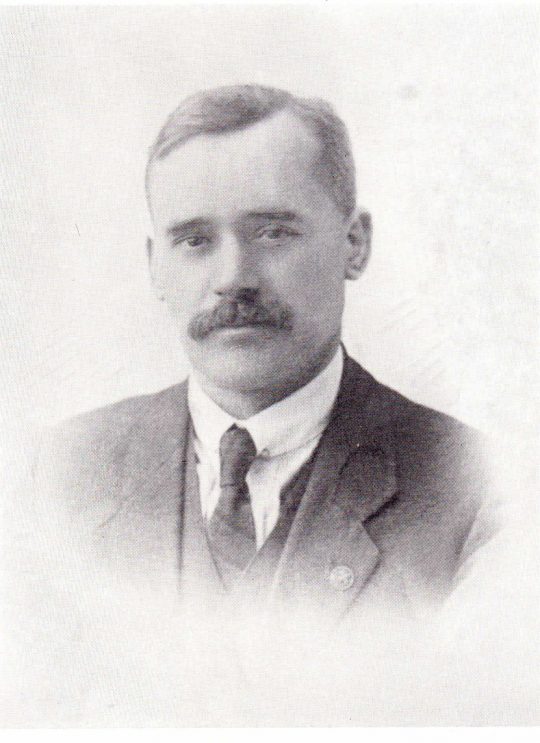
John Benson Lishman was nearly 47 when he was called up to join the London Electrical Engineers in February 1918 as a Pioneer. While his War Service was relatively brief and uneventful it was the work he did before enlisting that proved to be his enduring legacy. On April 10th 1915, Lishman set up the first meeting of the 8th Darlington Scout Group with 12 members. It was his idea to provide activities for young people while their fathers were away fighting. The first thing the boys did was set up a Drum & Fife band and played concerts in aid of the Red Cross. Some of examples of the 8th’s packed programme include camping, hiking, badge work and collecting materials for the war effort, most of which they still do today. It was a sad day when the Troop learned that their Scout Master was leaving them, as this excerpt from their Log Book tells: “The lads had collected a small pocket wallet & the Secretary presented it as a small – a very small token of love & respect for the work & time spent on us by the S.M.” Lishman returned to the Group in 1919 and after a “solemn handshake” it was back to normal. Submitted by the grateful Leaders and Members of the 8th Darlington Scout Group.
Read moreJohn Smith
November 5, 2018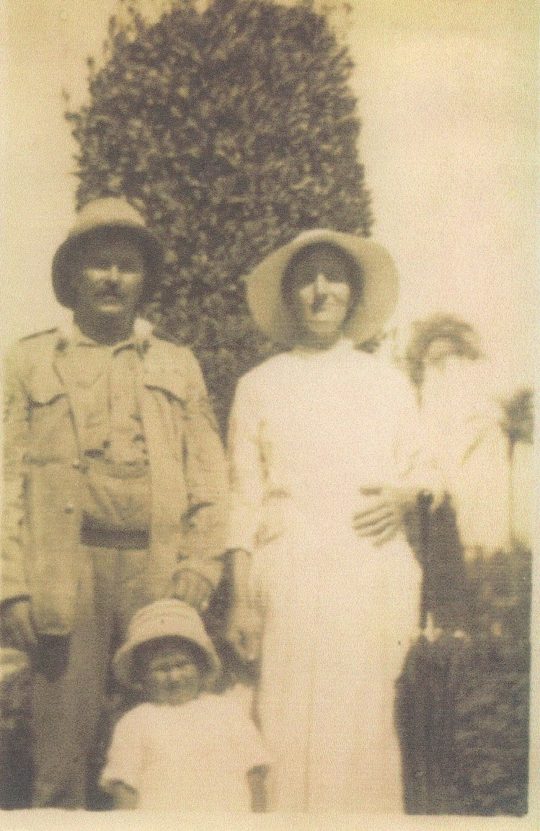
Jane Metcalfe visited the museum and outlined the story of her father, John Smith. He was born in Dundee, Forfar in 1883. After working as a boilermaker, he joined the Royal Engineers on 1 September 1909 and remained in military service until 31 January 1930. He spent time at Catterick Camp one hundred years ago at the time of the garrison’s founding. During the First World War John served in Egypt, before being transferred to the British Expeditionary Force in France. He became a Lance Corporal, and was promoted to Sergeant in April 1917. His record was ‘Exemplary’, and he was described as ‘Extremely honest, sober and reliable. A good organiser and very good in charge of men.’ 1852361 Sergeant John smith was awarded the 1914 Star, the British War medal, the Victory medal, the General Service medal and the Long Service and Good Conduct medal.
Read moreGeorge Cattermole
November 5, 2018
George William Cattermole was born in Tudhoe County Durham in 1889 to George, a colliery worker, and Mary. He had two elder sisters called Sarah and Elizabeth. By 1906 he had left school and became a farm labourer. Aged 17 he travelled to Richmond and enlisted into the Yorkshire Regiment, 23rd April 1906. He was initially posted to the 3rd battalion and remains with the Yorkshire Regiment, recorded as living in the barracks at York during the 1911 census. By September 1918 Pte Cattermole is serving with the 2nd Battalion who were deployed near Arras. The war diaries describe the battalions involvement in an attack on the village of Epinoy on 27th September 1918 during which 5 officers and 127 other ranks are recorded as missing, possibly including George. Shortly after the regimental gazettes record George as a prisoner of war. He is released from captivity after the armistice on 11th November 1918 and returned to England.
Read moreWilliam John Blore
November 5, 2018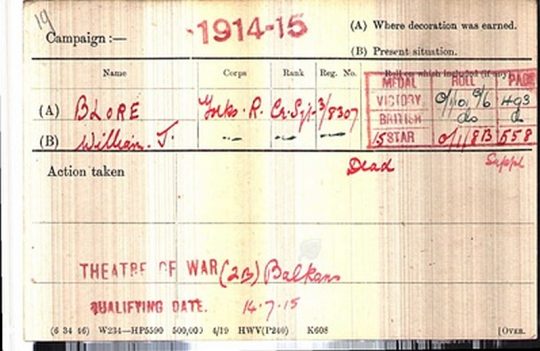
Submitted by Andrew Fynn. William John Blore was my Great Grandfather and was born in Leeds in 1877. He enlisted in the Yorkshire Regiment as a private in July 1894. His initial service was in India with the 2nd Battalion, during which his daughter Louisa Doris tragically died. More tragedy ensued in 1906 as his wife died after giving birth to his daughter Kathleen at Richmond. He did re-marry and seems to have left the army prior to 1909 when he was known to be a postman. As his military record is lost it’s unclear how he came to be back in service so we assume he must have volunteered and became part of the 6th Battalion, Yorkshire Regiment (the Green Howards) in August 1914 as Company Sergeant-Major. On 3 July 1915, the 6th Battalion sailed from Liverpool on board the Aquitania, bound for the Dardanelles campaign. On 6 August 1915, the 6th Battalion embarked for Gallipoli and the landing and attack at Suvla Bay. At 23.00 hrs, following the landing at Suvla Bay, he was part of the attack on Lala Baba Hill, the first ‘Kitchener unit’ to be involved in a major offensive operation of the war. The attack eventually cleared the hill of the Turks but not before they inflicted serious casualties on the attackers which, unfortunately, included William, only hours into his first action. His body wasn’t found in the aftermath of the action and he is commemorated at the Helles memorial. His role at Gallipoli…
Read moreRichard Adams
November 5, 2018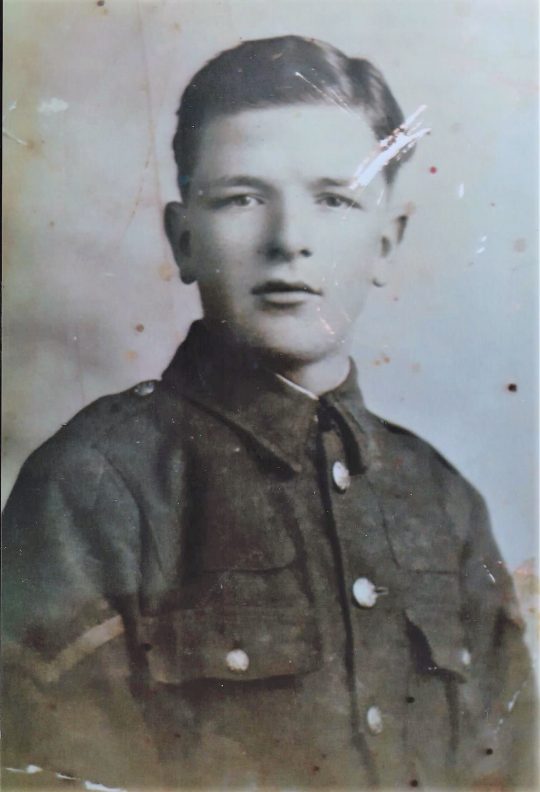
Meryl Abbey sent us some information about her great uncle, Richard William Adams. Richard served with the Yorkshire Regiment, arriving in France on 25th March 1915. Little is known about his service, but he served as 10438 Lance Corporal R Adams. He is buried at Bethune Town Cemetery having died on 30 August 1915. He was awarded the 1915 Star, the British War medal and the Victory medal.
Read moreGerman prisoners of war
November 5, 2018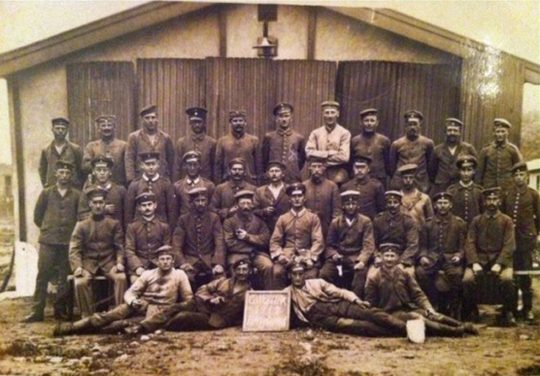
The site of Richmond Camp as it was first called was suggested by Robert Baden Powell while he was based at Richmond Castle as Inspector-General of Cavalry. The name quickly changed to Catterick Camp in order to avoid confusion with Richmond in Surrey. The Camp’s first troops occupied the area for training in 1915. Major-General Michael Frederick Rimington was the officer in charge. In 1915 the decision was made to expand the training camp. A new prisoner of war camp was established and eventually 5000 German prisoners of war were housed there. Initially German PoWs were not permitted to work and boredom became a major problem. The prisoners played sports and even set up an orchestra (with instruments they made themselves) to fill their time. A change of government policy meant that prisoners could be allowed out of the camp to work as labourers. As a result they were employed in constructing the road leading out of Richmond Station, via St. Martins and on to Catterick Camp (Rimington Road). Catterick Prisoner of War Camp became the administrative headquarters for all ‘working camps’ in the area. By the end of the war 89,937 prisoners who had served with the German army were interned in camps across the United Kingdom.
Read moreRobert Moverley
November 5, 2018
Information provided by Marion Moverley. Robert Thackwray Moverley was born on the 3rd March 1896 at Woodside Farm Sessay near Thirsk in North Yorkshire to Butler and Fanny Margaret Moverley. Robert’s father Butler was a farmer. The 1911 census shows a family of 5 children with Robert having brothers Edward and Harold, and sisters Dora Fanny and Florence Lotta. Robert worked as a railway clerk for the L.N.E.R. at Bennington Station and then at Boroughbridge. He would also work in the railway offices at York and Selby. On the outbreak of war Robert enlisted as a Private with the Yorkshire Regiment and would rise through the ranks to Sergeant. Little information is available regarding his time in the Military, even in determining the Battalion he was with. We do know that in September 1916 he was at Mulgrave Castle Hospital near Whitby so he must have received wounds of some description while at the Front. Also, from October 1917 to April 1918 he was seconded as an Adjutant to the 51st Battalion Leicestershire Regiment. It would appear that this was a home based appointment. Letters of commendation from that period indicate he was a proficient and diligent soldier. On the 1st March 1919 he was transferred to the reserve on the completion of his service. Robert married Mary Blunsom on the 5th May 1923. They would have two children, Joan Margaret and Alan. His wife Mary died in 1959. Robert remarried on the 5th May 1961 to Dulcie Elizabeth Frankish…
Read moreArthur Rispin
November 6, 2018
Arthur John Rispin was born in Stockton-on-Tees in 1888. His father, Thomas was a stoker on the railways and his mother called Mary Ann attended to domestic work. He married Mary Elizabeth in 1910 – unfortunately they lost a child in the first year of their marriage. Few records survive relating to his service during the First World War, apart from those relating to his death on 9th October 1918 aged 31. In his photograph he is wearing a badge on his collar signifying that he served with the 12th Battalion, Yorkshire Regiment which was the Pioneer Battalion. However upon his death he is listed as serving with the 9th Battalion. His effects and a war gratuity of £21 were left to his widow, Mary. Arthur is commemorated on the Town Memorial in Stockton, and the Busigny Communal Cemetery near St. Quentin, France.
Read moreJohn Ramsden
November 6, 2018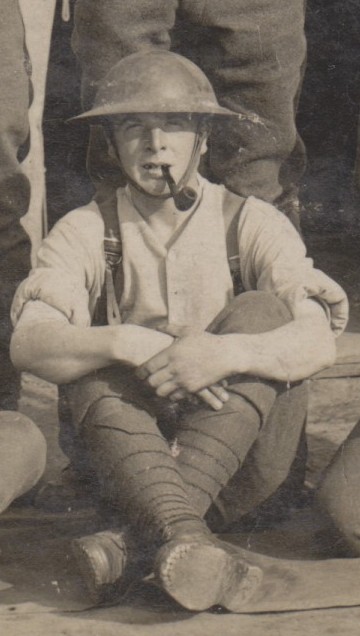
This story was submitted by Mr Johnson of Richmond, he is the grandson of John Ramsden. John was born in East Ardsley, Leeds. He was called up in 1917 and trained at Chelmsford. He was posted with the 6th Battalion, Durham Light Infantry as 78916 Pte J Ramsden. John kept a diary during his time away from home. On 6th February 1918 at Passchendale Ridge he recorded “Shells are whistling menacingly overhead, I hope my God will give me the strength to withstand the trials that beset me!” 21st March 1918 saw the last big German attempt to win the war. John’s diary reads, “Found a fellow I’ve seen very often laid out of the trench – grim and bloody – ah, yes but smiling in death”. John was wounded on 28th March and was evacuated to Rouen with other casualties. On 31st March he wrote, “The Doc prodding my head with an instrument much like a pair of sugar tongs. Eventually succeeds in extracting a small piece (but quite big) of the product of Essen”. After recovering, John was sent back into the line in late May. Again he was hospitalised, this time in an American hospital, taking a serious wound to the hand. The family always believed that the different approach taken by American surgeons saved John’s hand from amputation. John survived the war and moved to Barnsley, running the local cinema and writing a column for the Barnsley Chronicle.
Read moreCaptain T E Dufty
November 6, 2018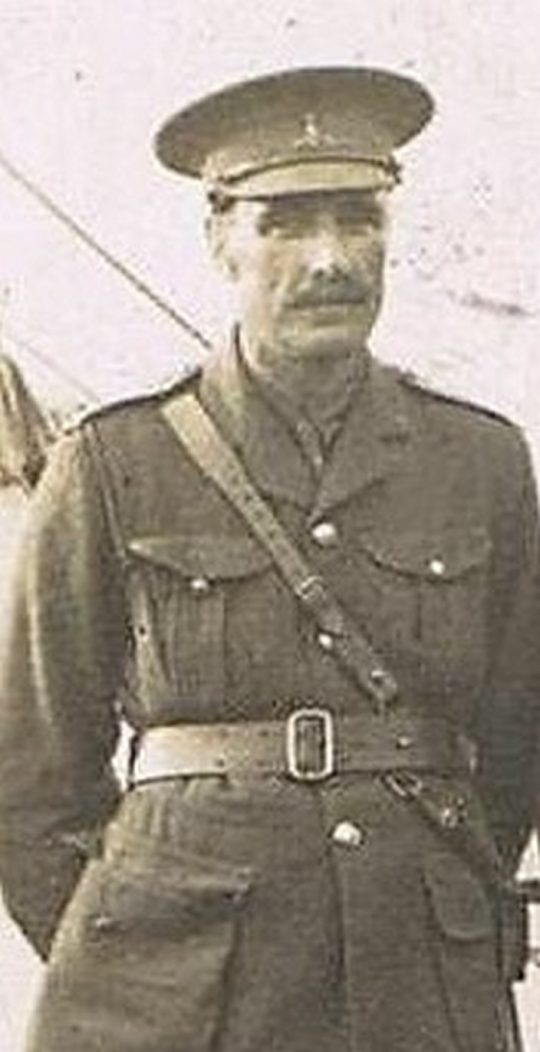
Captain Thomas Ernest Dufty was born in on the 30th of June 1880. His father was Arthur Richard Sykes Duffy and his mother was called Katie. He was educated at Pocklington Grammar School. He joined the 5th Battalion in 1912 and became a lieutenant in June 1913. Prior to this his profession was as a banker and manager of the Bridlington branch of the London Joint Stock Bank. Duffy was promoted to Captain on the 18th of April 1915. He was reported as killed in action on or about the 19th of May 1915 (killed by a shell). His Battalion had been deployed to Sanctuary Wood (1.9 miles east of Ypres). His whistle and blood stained scarf are on display at the Green Howards Museum. He left a widow, Beatrice, and a 4-year-old son Arthur Richard. He is buried at the Vlamertinghe Military Cemetery in Belgium and commemorated at the Manor Road Cemetery Scarborough.
Read moreCorporal Tommy Edwards
November 6, 2018
Steven Shackleton told us about his great uncle, Thomas Edwards from Ironbridge. During the First World War, Tommy Edwards was a Corporal in the King’s Own Yorkshire Light Infantry. Prior to the war he had served as 86589 Pte T Edwards with the Territorial Reserve Battalion. He served with the 10th KOYLI and then transfered to the 2nd KOYLI before he was killed in action on 30th September 1918, aged 19. He is buried at Bellicourt British Cemetery in France. His mother was Mrs Francis Edwards of Hoylake, Cheshire and had the following inscription added to the bottom of his headstone: ‘Peace, perfect peace’.
Read moreErnest Brooke
November 7, 2018
Sgt. Ernest Brooke was born in Brighthouse, Yorkshire in 1886. In civilian life Ernest worked a railway signalman. Ernest’s medal records show he was entitled to the 1914 Star indicating that he was an ‘Old Contemptible’, part of the original British Expeditionary Force that fought in France and Belgium from August 1914. Ernest served with the 2nd Battalion of the Yorkshire Regiment until his death on 4th January 1918. The New Year 1918 that at 11pm (German midnight) on the 31st December 1917, ‘…all guns of artillery fired one round each, whilst machine guns fired two belts of ammunition each ‘to usher in the new year’. The following day, the 2nd Battalion were relieved from the front line and relocated to ‘Hedge Street Tunnels’. On the night of the 4th of January, a fire broke out in the area of the tunnel being occupied by the Battalion, resulting the loss of a further 20 lives from the 2nd Battalion – one of those lives being Ernest Brookes’. In accordance with his wishes, Ernest’s outstanding pay and War Gratuity, totalling £29, 7shillings and 19d to his mother, Hannah.
Read moreCyril and Christopher Fawcett
November 8, 2018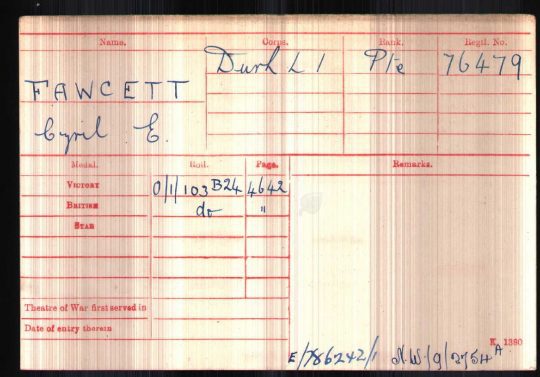
Paul Goad, a resident of Frenchgate and local history enthusiast submitted his research on one of the families from Frenchgate at the time of the Great War. The Fawcett family lived at 55 Frenchgate, Richmond throughout the First World Ward. John Fawcett, who worked in agriculture and construction, lived here with his wife Elizabeth Grace, daughter Elizabeth Alice and two sons, Christopher and Cyril Edgar. John was born in Castle Bolton in Wensleydale, Elizabeth Grace in Thornton Buckinghamshire and all three children hailed from the small parish of Walburn, Downholme a little way up Swaledale from Richmond. At the outbreak of hostilities Christopher was 20 and Cyril 14. As the eldest, Christopher was the first to enlist on 27th November 2015, three months shy of his 22nd birthday. Prior to enlistment he worked as a butcher, a profession he continued after the war. In January 1916 he joined the 4th Battalion of the Durham Light Infantry. The 4th DLI were a reserve Battalion and were station at Seaham Harbour from 1915 through to the end of the War. Records confirm that Christopher was based at Seaham from 1916 to June 1918 serving in D Company. A copy of a charge sheet shows that Christopher was late returning from leave on June 12th 1916 for which he was forfeited 1 days pay. In October 1917 Cyril enlisted at the age of 18 years and 1 month, giving his trade as a Motor Driver. Despite his Attestation papers suggesting that he was…
Read moreHenry Jesse Richardson
November 8, 2018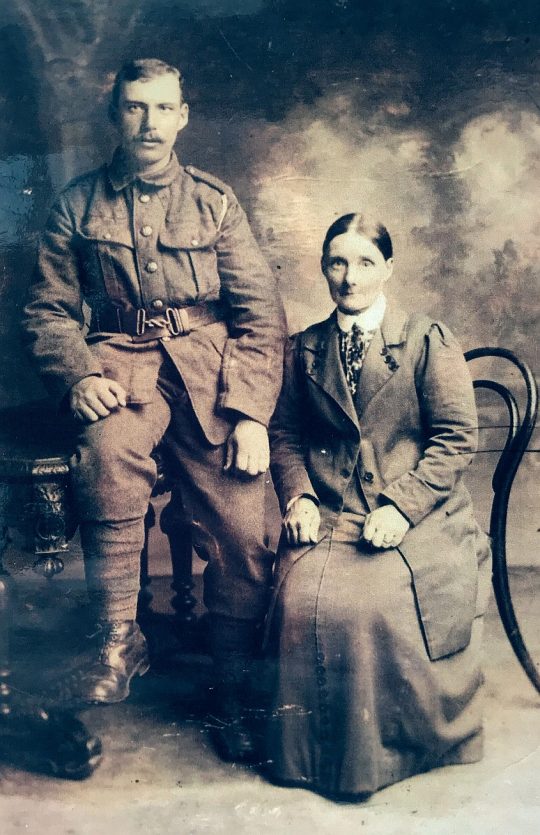
Paul Goad of Frenchgate told us about his Great-Uncle, Henry Jesse Richardson. Henry was born in March 1889 in Hailsham, East Sussex, where he lived prior to enlistment. In the 1911 census he gave his profession as Mat Making, his Father William, being a Mat Weaver at that time. Hailsham had a vibrant string, twine and rope based industry at the time from which they gained their employment. Henry enlisted in 1916 at Purfleet and joined the 13th London Regiment (Princess Louise’s Kensington Battalion). Henry’s Service medal and Award Rolls show that he served on the Western Front from September 1st 1916 until his death on August 16th 1917 at the Battle of Langemarck. During his time in theatre Henry’s Battalion were in action at the Battles of Ginchy, Flers-Courcelette and Morval in 1916 and the Second Battle of Arras in 1917. Henry’s burial spot is at Ypres, Arrondissement Ieper, West Flanders Belgium. He is also remembered on the roll of Hailsham War Memorial.
Read moreRobert Henry Edmund Hutton-Squire
November 9, 2018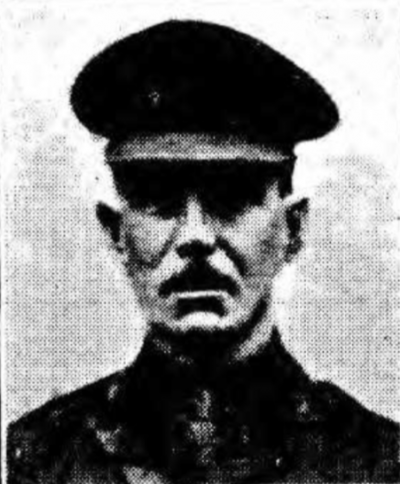
Students at Hackforth and Hornby School researched this story for the Ribbon of Remembrance. Do you know the story of Major Robert Henry Edmund Hutton-Squire? He was a World War 1 Hero. A person from our area: a soldier in the British Army who fought for our freedom. Major Robert Hutton-Squire was born on the 10th October 1877, at Holtby Hall, his family home, in the Parish of Hornby, near Bedale. As a child, Robert grew up at Holtby Hall with his older siblings, John and Emmeline; his younger siblings, Lucy and Eleanor; his father, Robert, a magistrate and militia army officer and Catherine, his mother. Very sadly, Lucy died in 1903, before the outbreak of World War 1. She was buried at St Andrews Church in Great Fencote, near Holtby Hall. The family were looked after by their servants, including a housekeeper, a butler, a cook, a nursery maid and a gardener. Robert Hutton-Squire did not go to his local school (Hackforth & Hornby C of E Primary School). In 1891, he was a boarding scholar at Charterhouse School with his brother, John. He was at school, away from his family. After he left school, Robert trained as an engineer. In 1899, he was working in India, in Madras. In 1900, he joined the British Army in India, as an officer in the Royal Artillery. He was promoted to Lieutenant in 1901. In 1906, his father died and was buried alongside his daughter in Great Fencote. In 1911, Lieutenant…
Read moreRobinson Tweedy
November 9, 2018
Robin Snook provided this information about his great uncle, Robinson Tweedy. 3412/200048 Private Robinson Tweedy of the Yorkshire Regiment went to war with his younger brother, Charles from their home in Kirkby Fleetham. He was wounded in February 1916 near Ypres, receiving a gun shot wound to the abdomen. He was honourably discharged and returned home. he died on 14 December 1918 from his wound and laid to rest in Great Fencote’s churchyard.
Read moreCharles Tweedy
November 9, 2018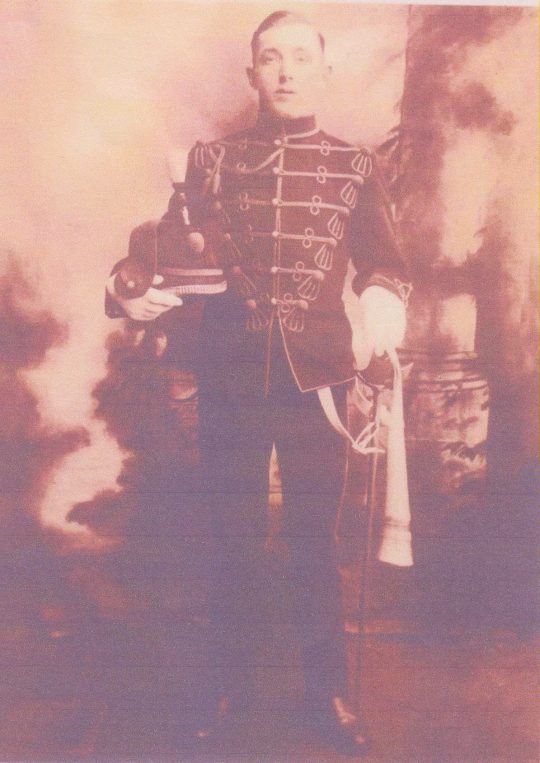
Robin Snook submitted this information about his grandfather, Charles Tweedy. 113319 Driver Charles Tweedy served with the Royal Horse Artillery. He signed up on 29th October 1915 in Richmond and spent time at the North Training Camp at Ripon. He fought in France and at one point the horse that he was riding was blown from underneath him. He was lucky though and survived to fight another day. The horse’s bit is still in the family to this day.
Read morePrivate John Mason Pickering 6725
June 4, 2019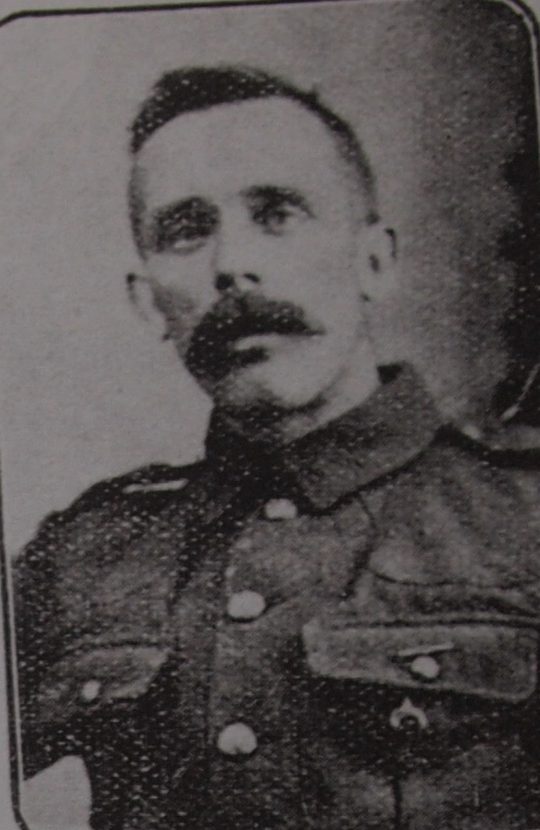
Mrs Pat Fazey visited the museum recently. She is originally from Yorkshire but has lived in Newent, North Gloucestershire for the past 17 years. We helped Pat research Private Pickering who was probably a distant cousin several times removed. John Mason Pickering was born in the third quarter of 1877. By the time of the 1881 census he is 3 years of age and living with his parents John and Ann in the hamlet of Newbridge in Pickering. His father is a quarry labourer and he has 4 sisters, Rachel, Mary, Elizabeth and Grace. In the 1881 census he is aged 14 and working as a “farm Servant at Brook farm in the Pickering area. The farm is run by the Banks family. In 1904 (January to March) there is a record of marriage to an Edith Emily Cruce in the Eccleshall Bierlow district of Sheffield. In the 1911 census John and Edith are residing at West Thorpe, Hoylandswaine near Pennistone. Aged 34 he is still working as a farm labourer. The couple have two daughters, Hilda Pearl aged 6 and Ruby Annabelle aged 1 and before 1914 they have son John. Before enlisting in 1914 John Mason is working as a quarry labourer. He disembarks, with the 2nd battalion, in France in December 1914. He is killed in action at Neuve Chapelle on the 12th of March 1915 and is buried in the Cabaret-rouge British cemetery Souchez. He was awarded the Victory and British War medals along with the…
Read more